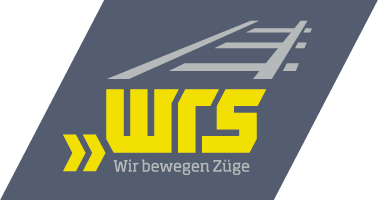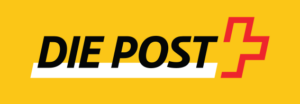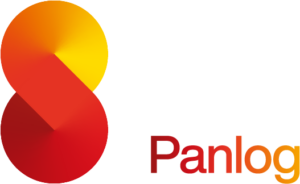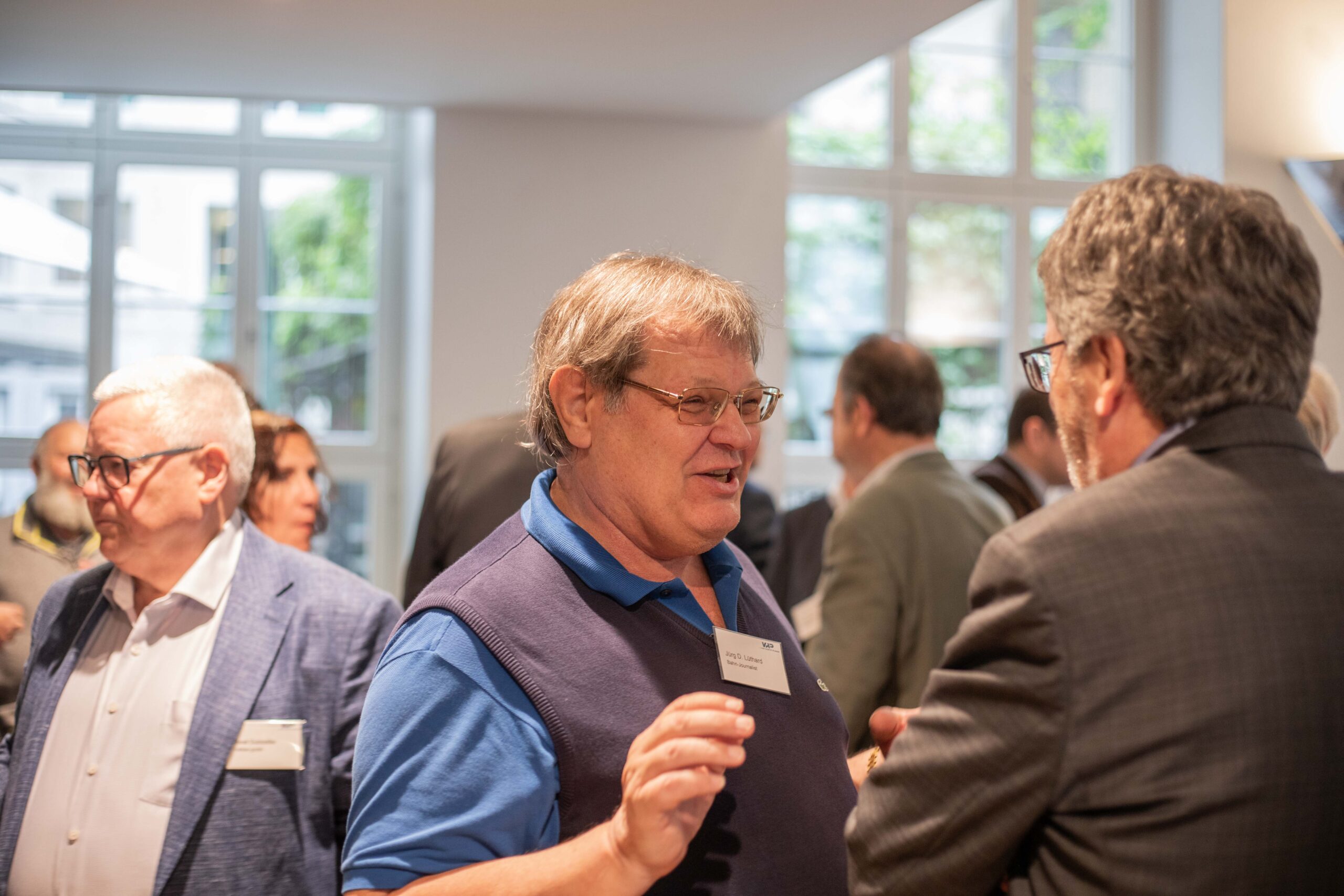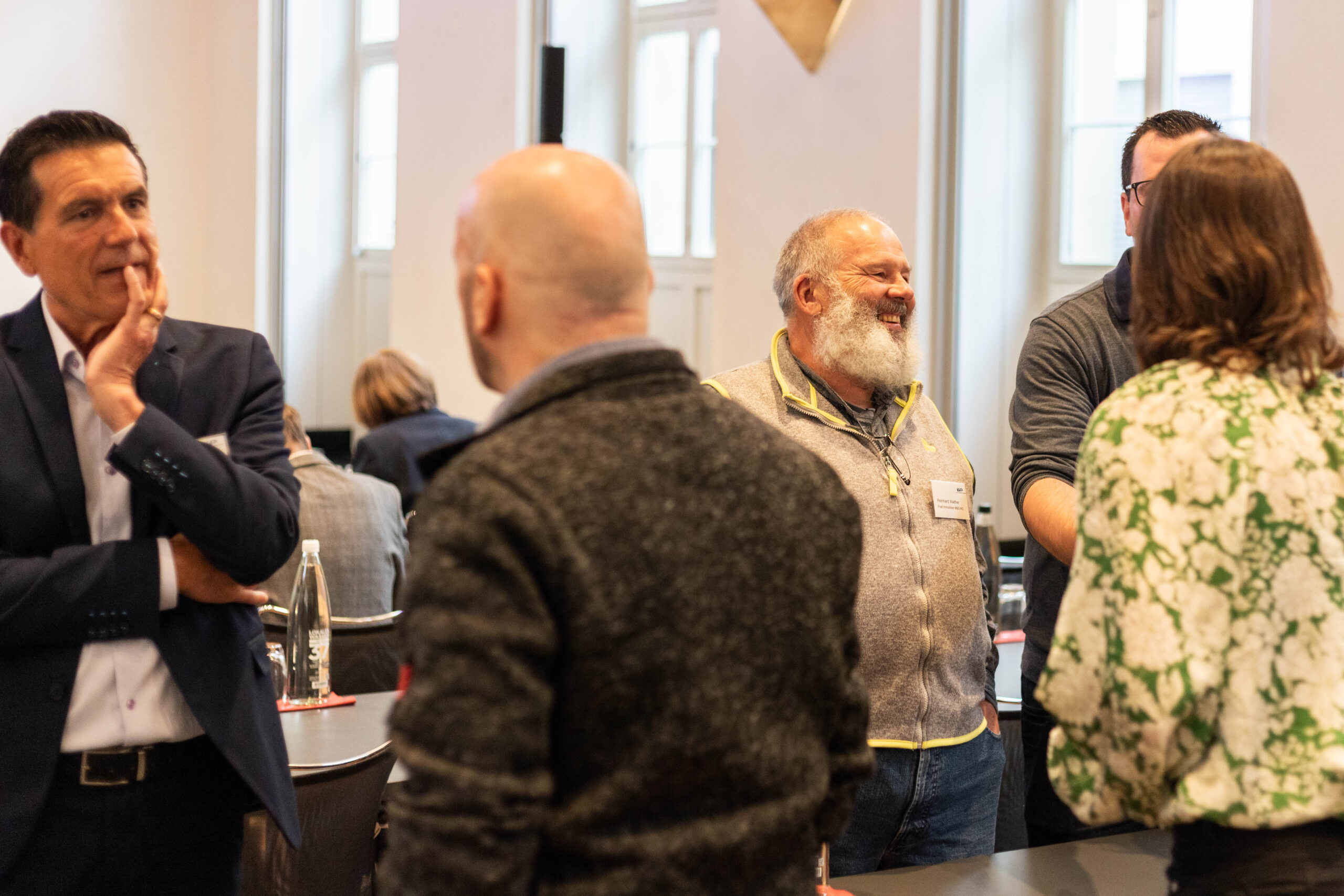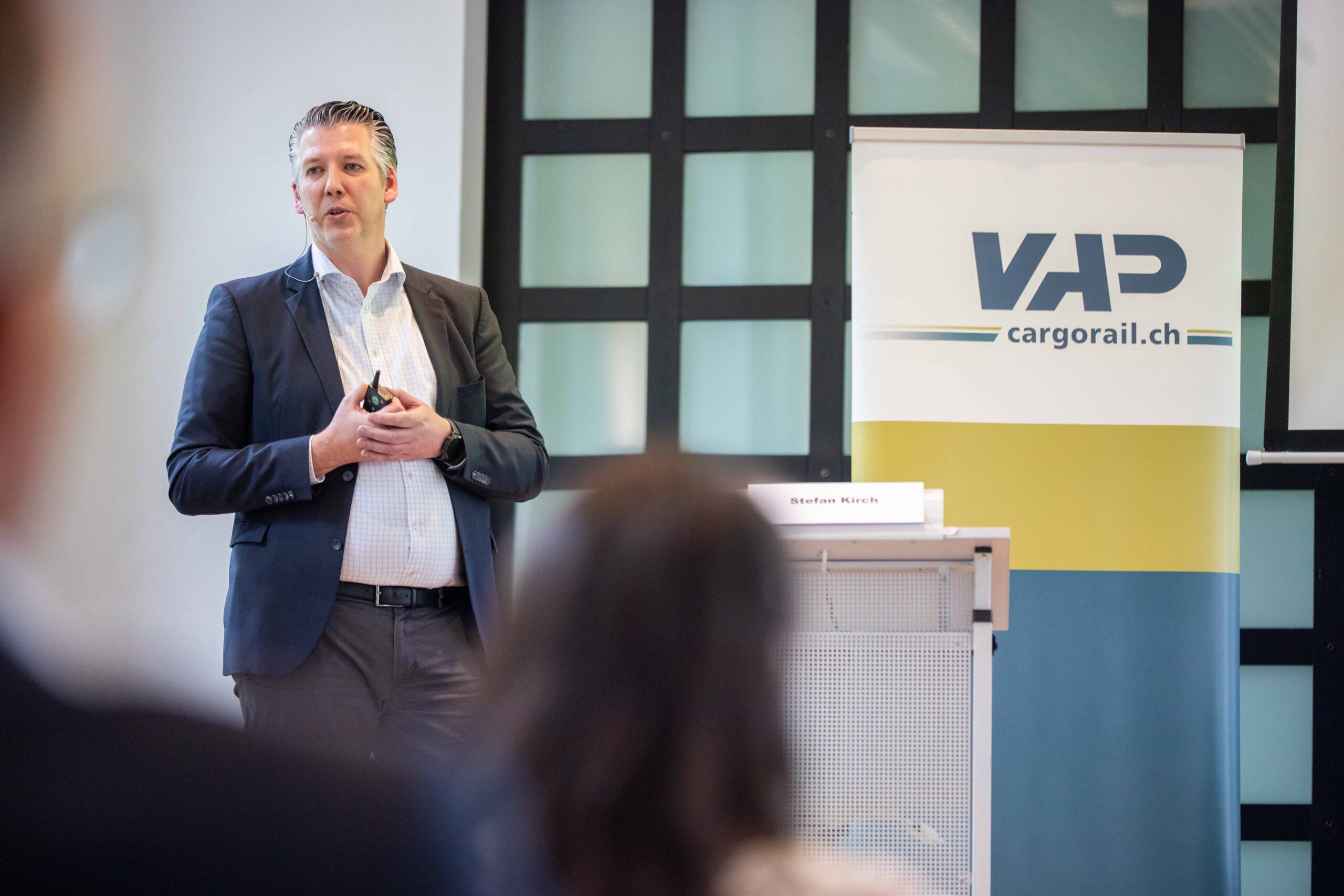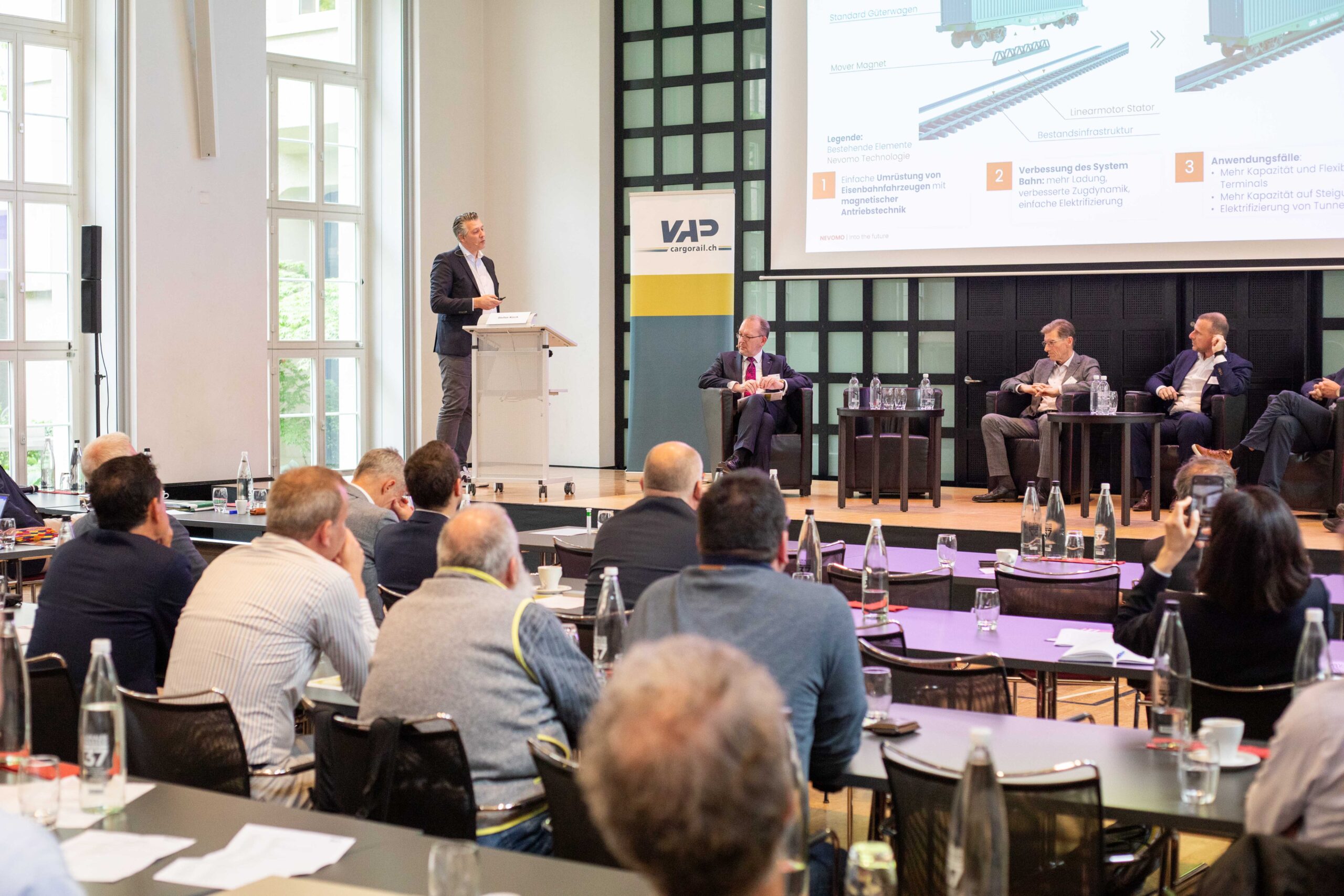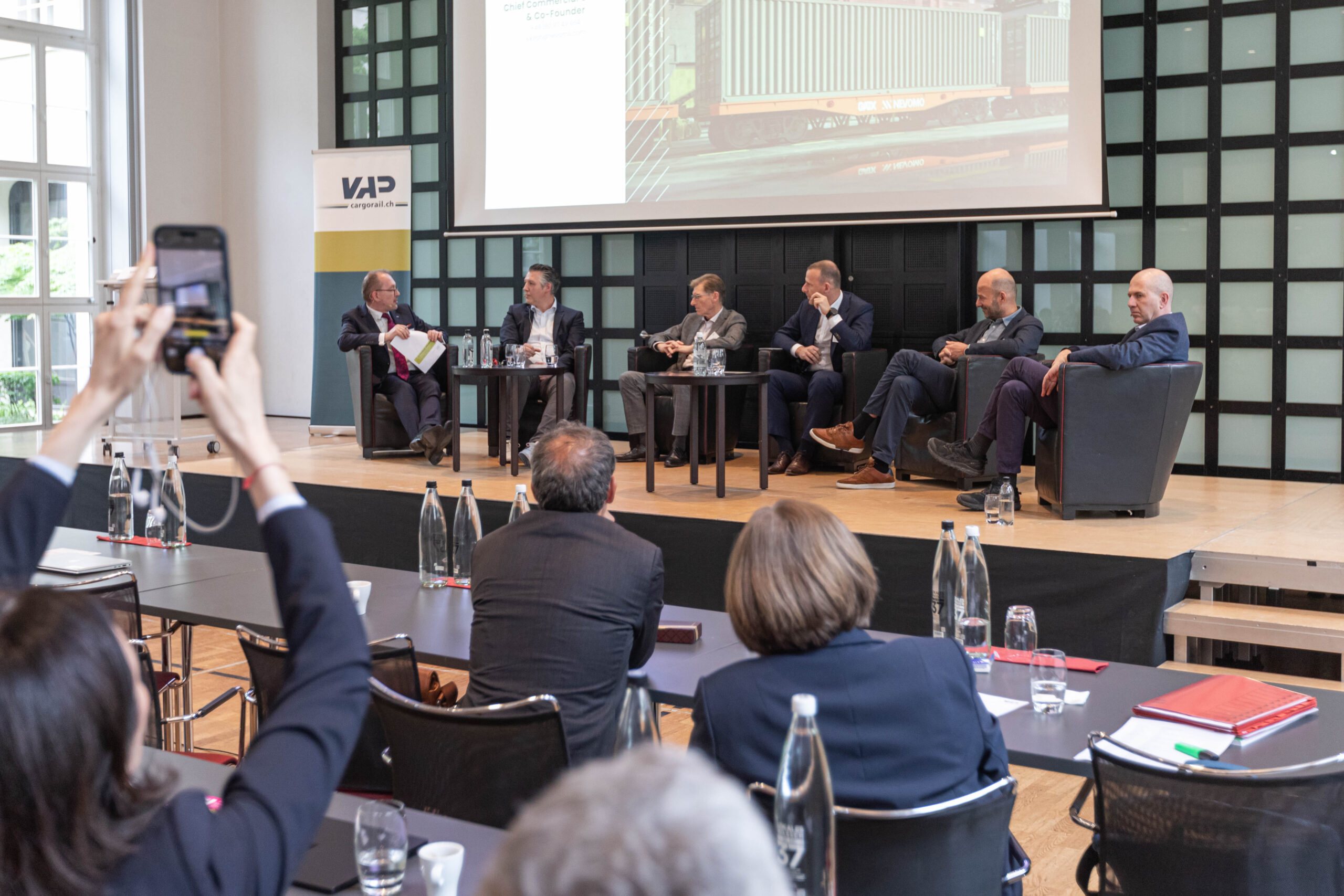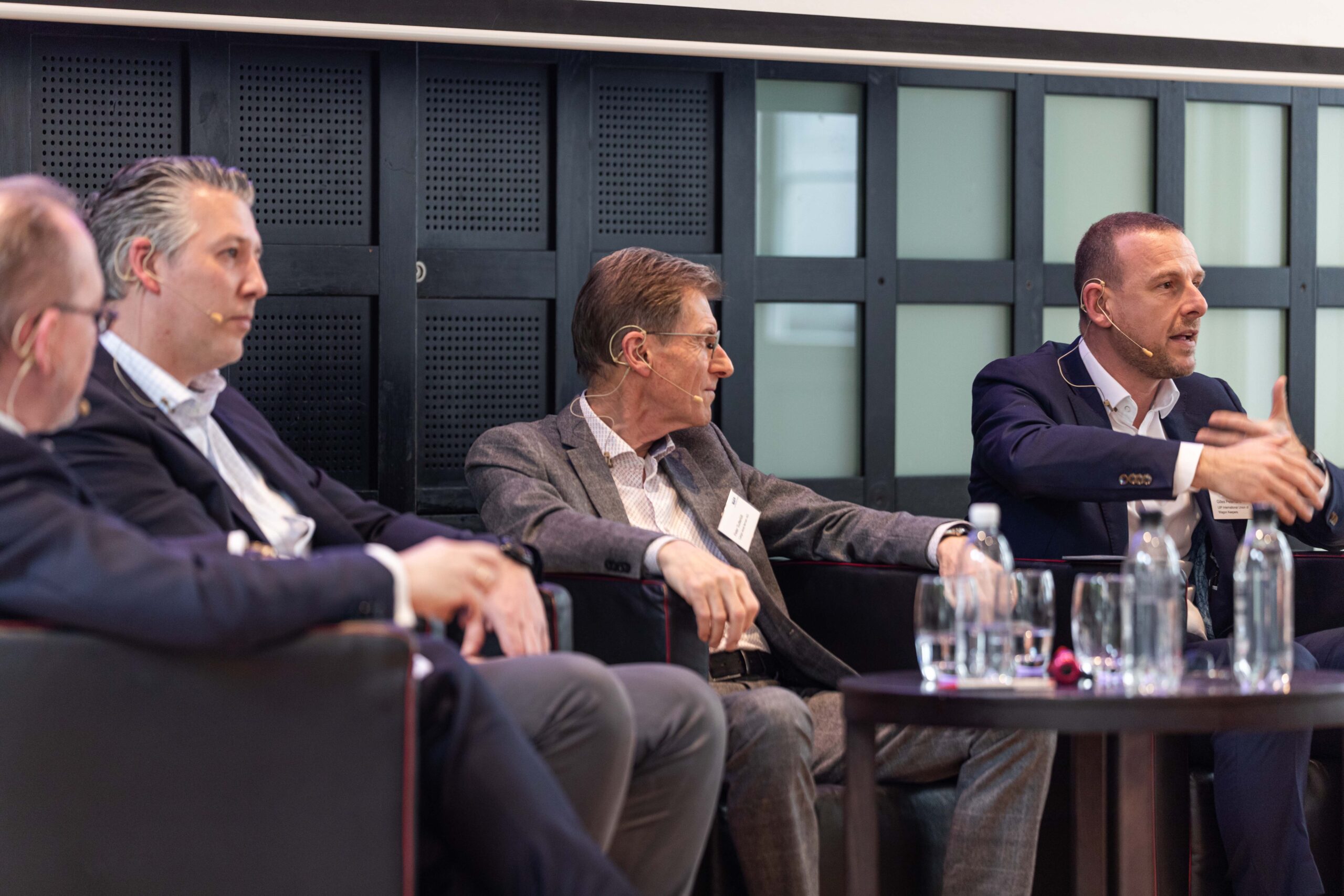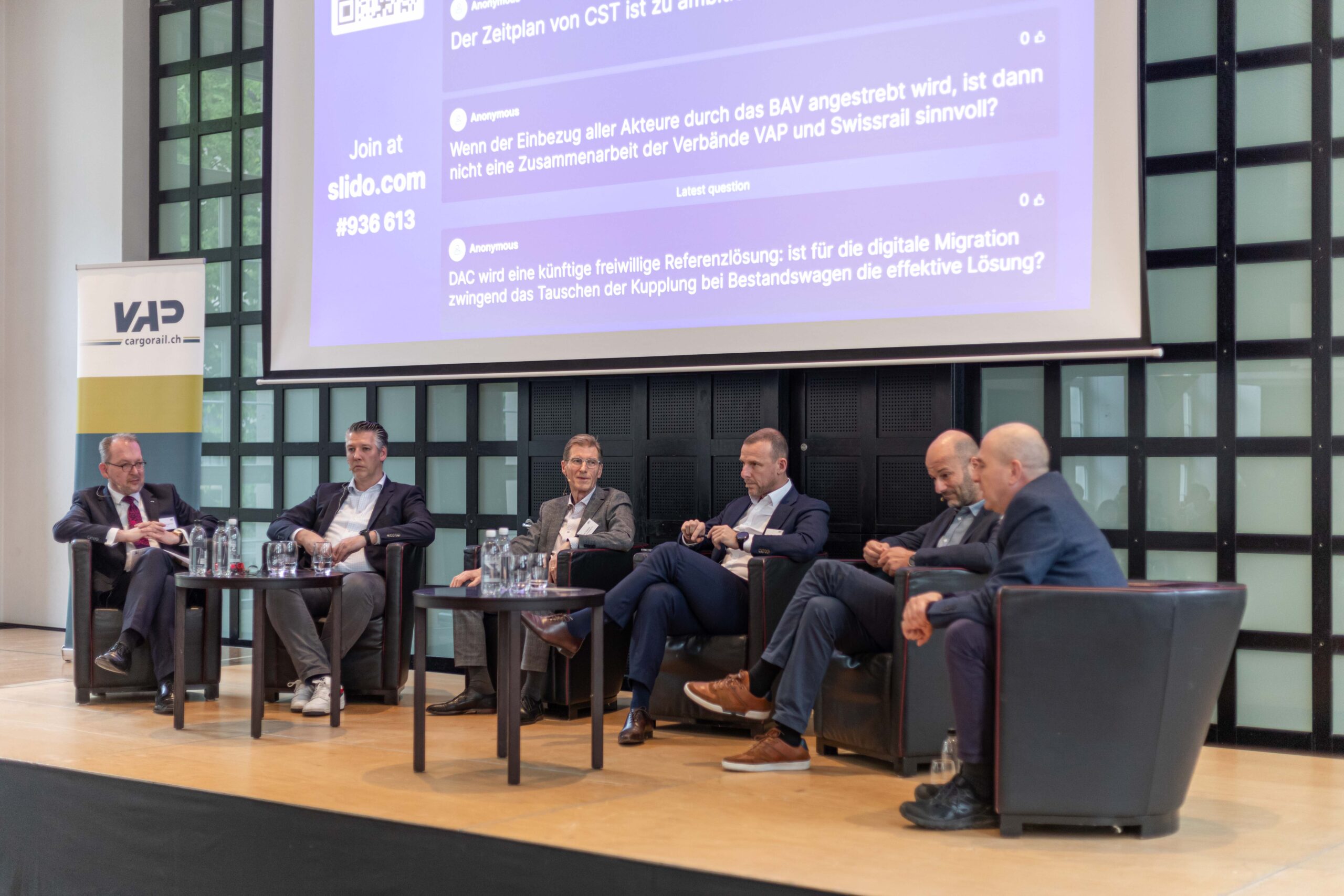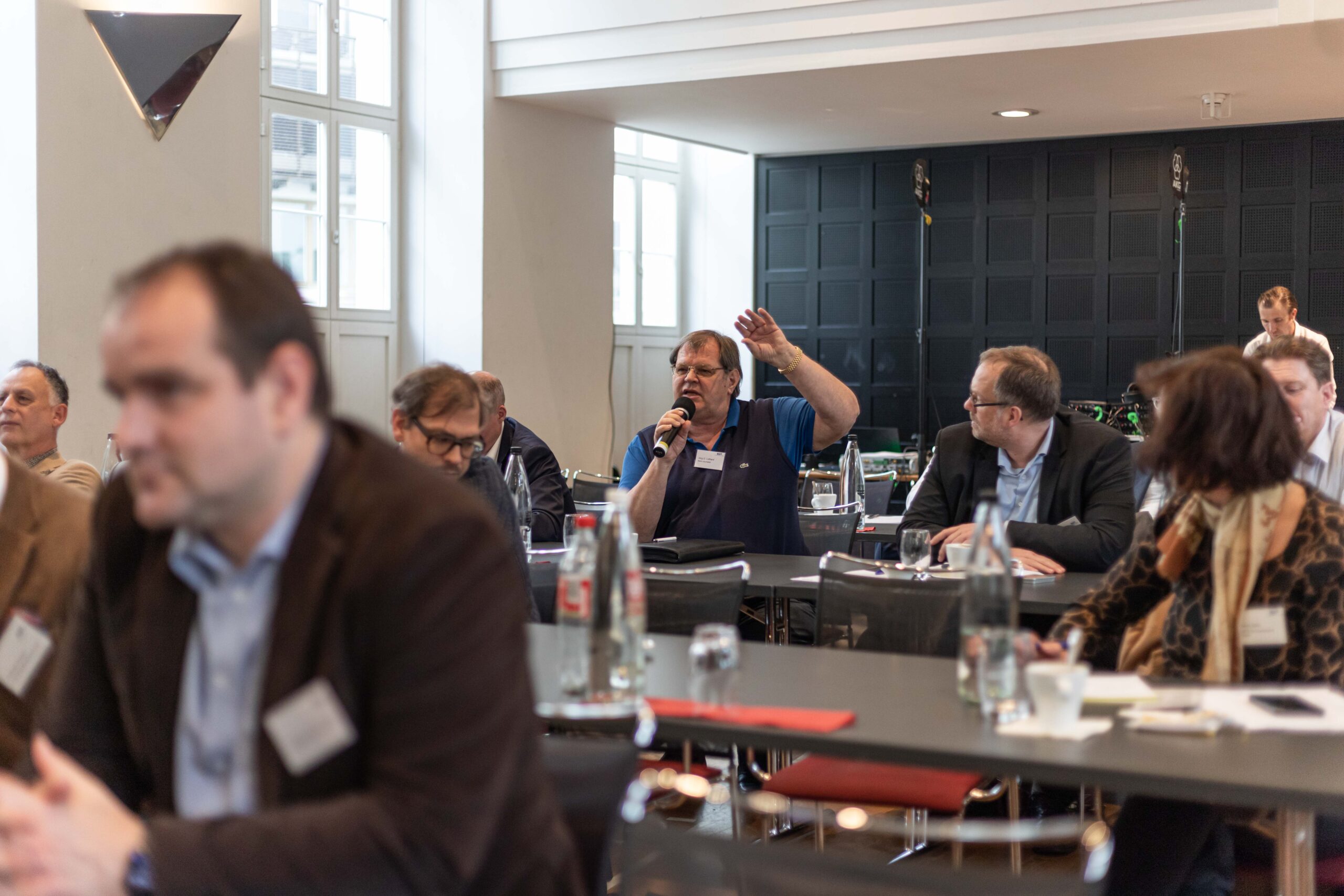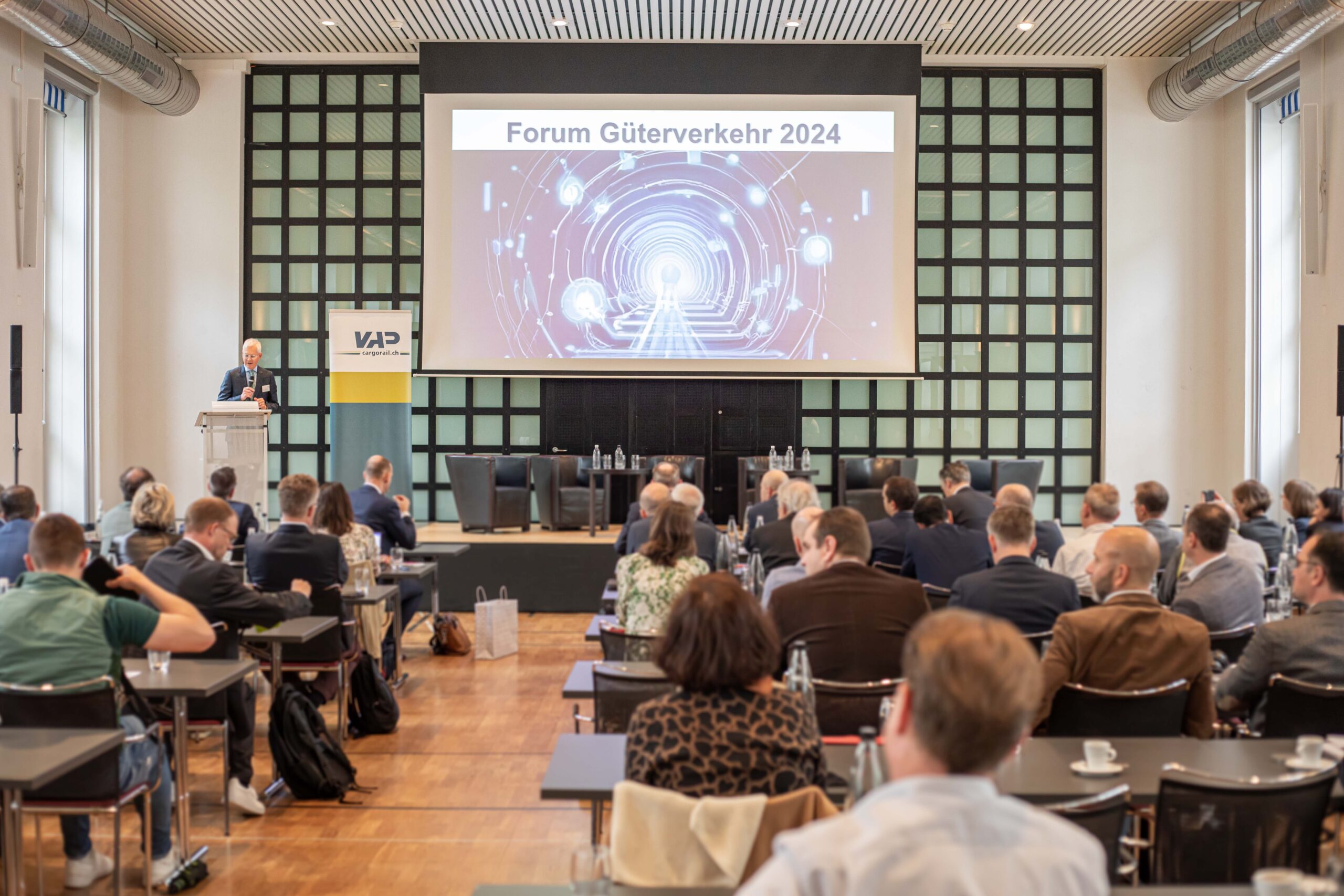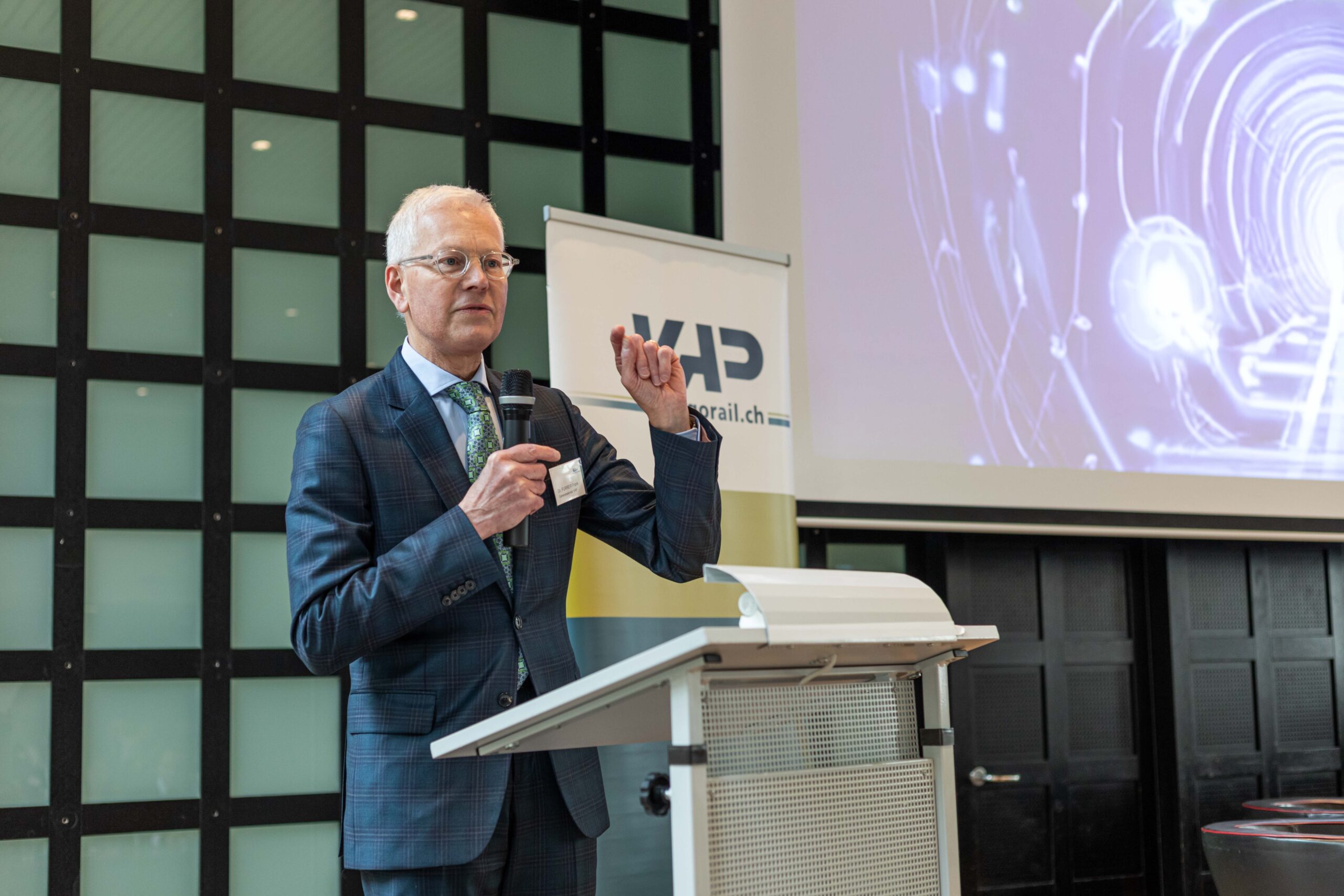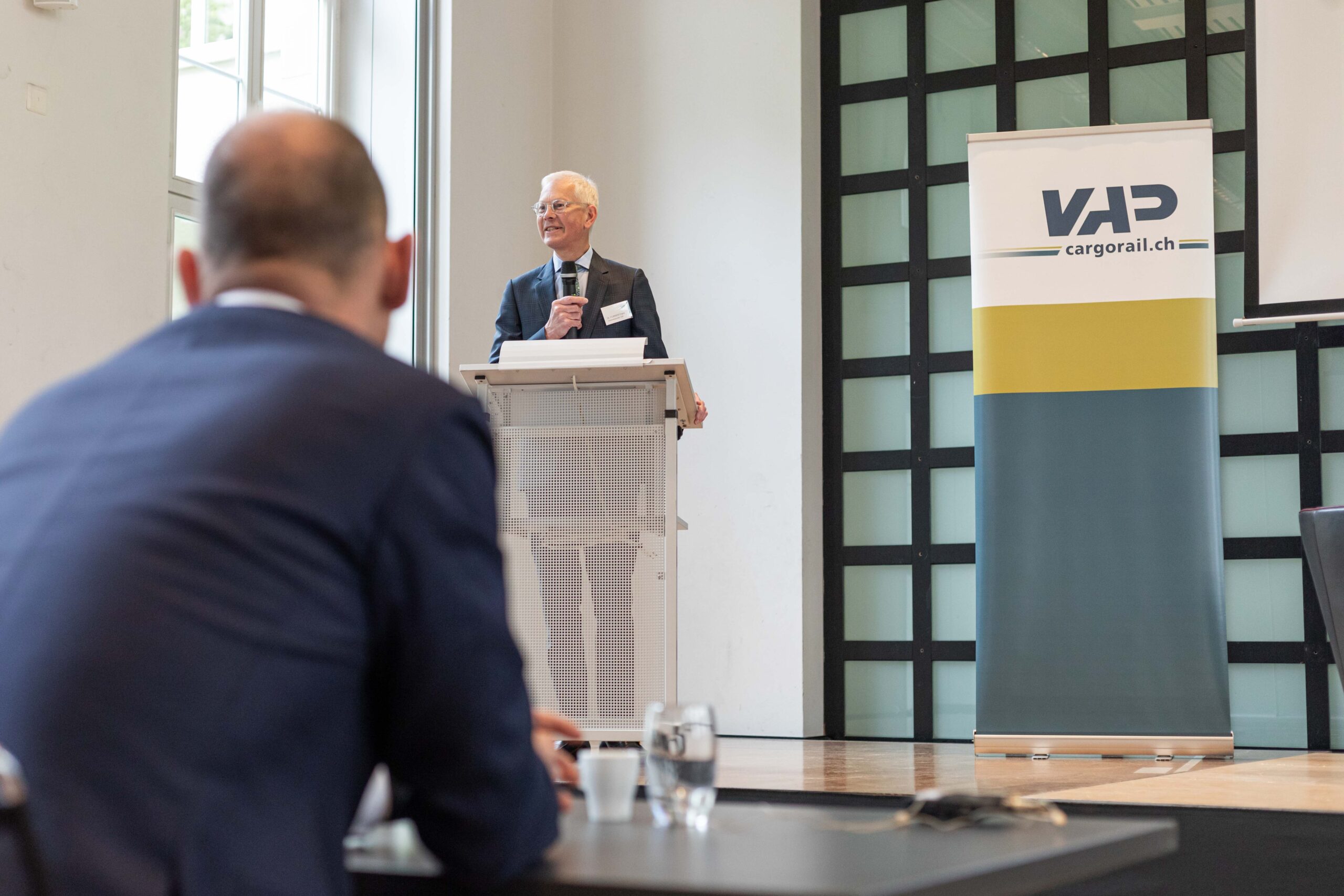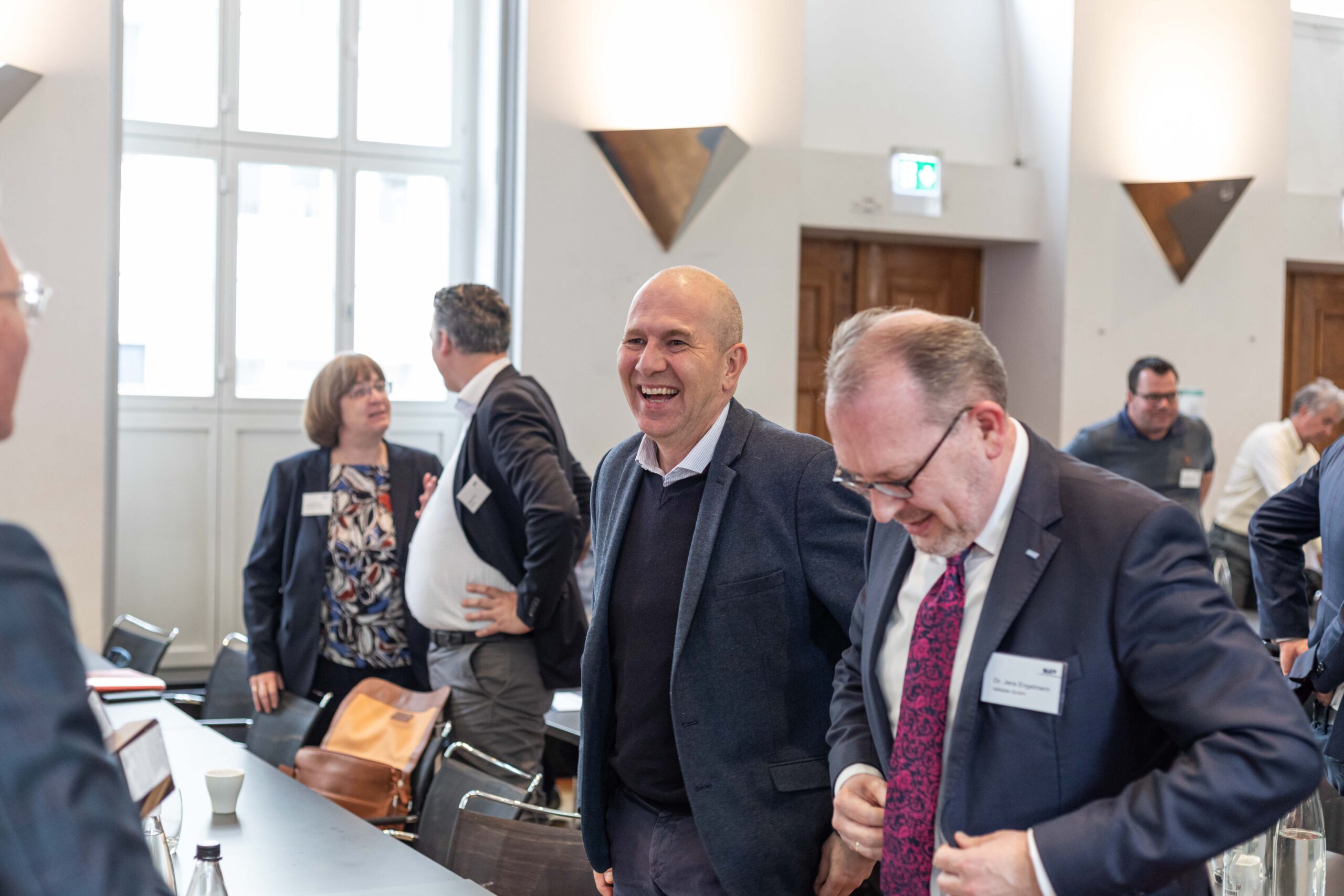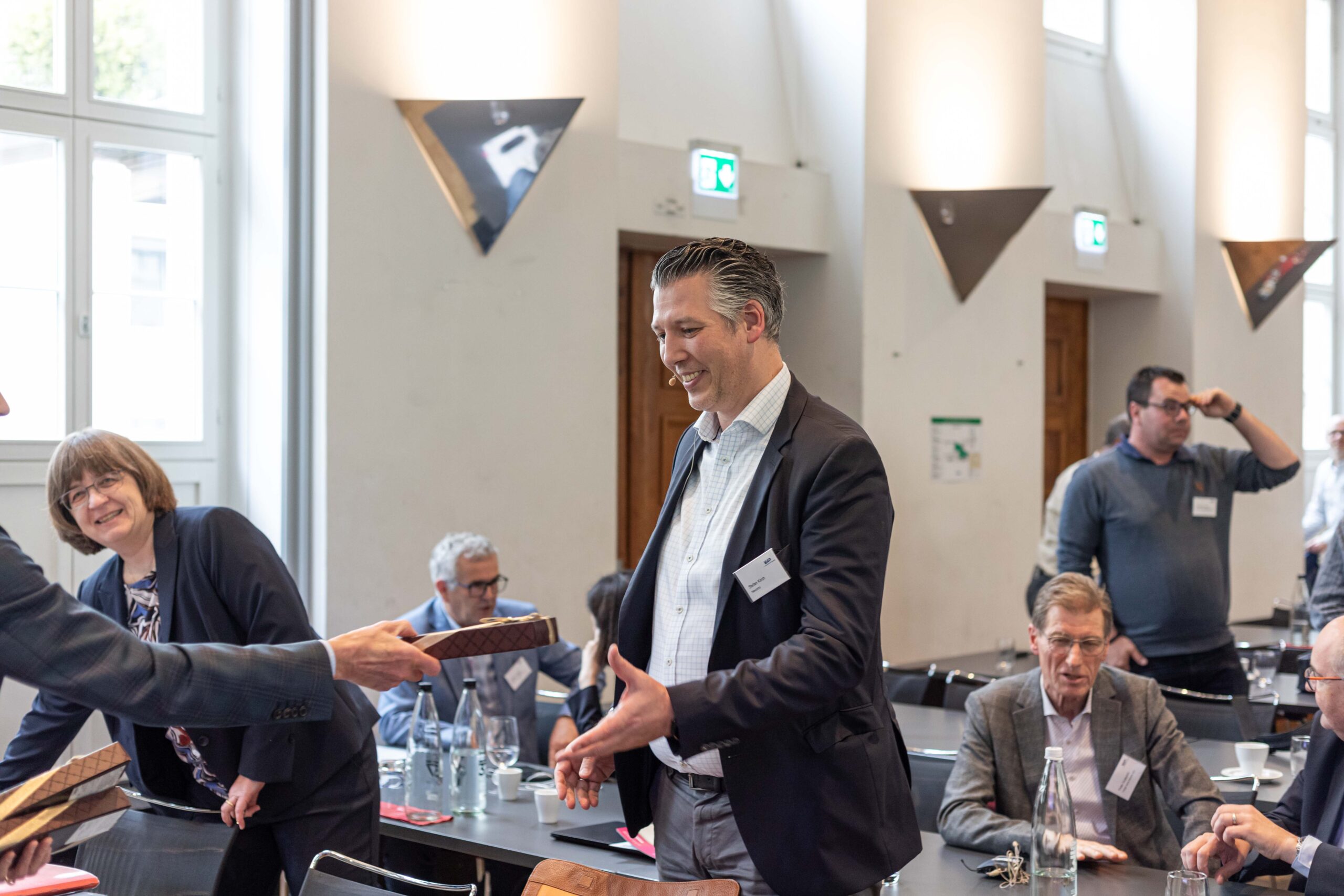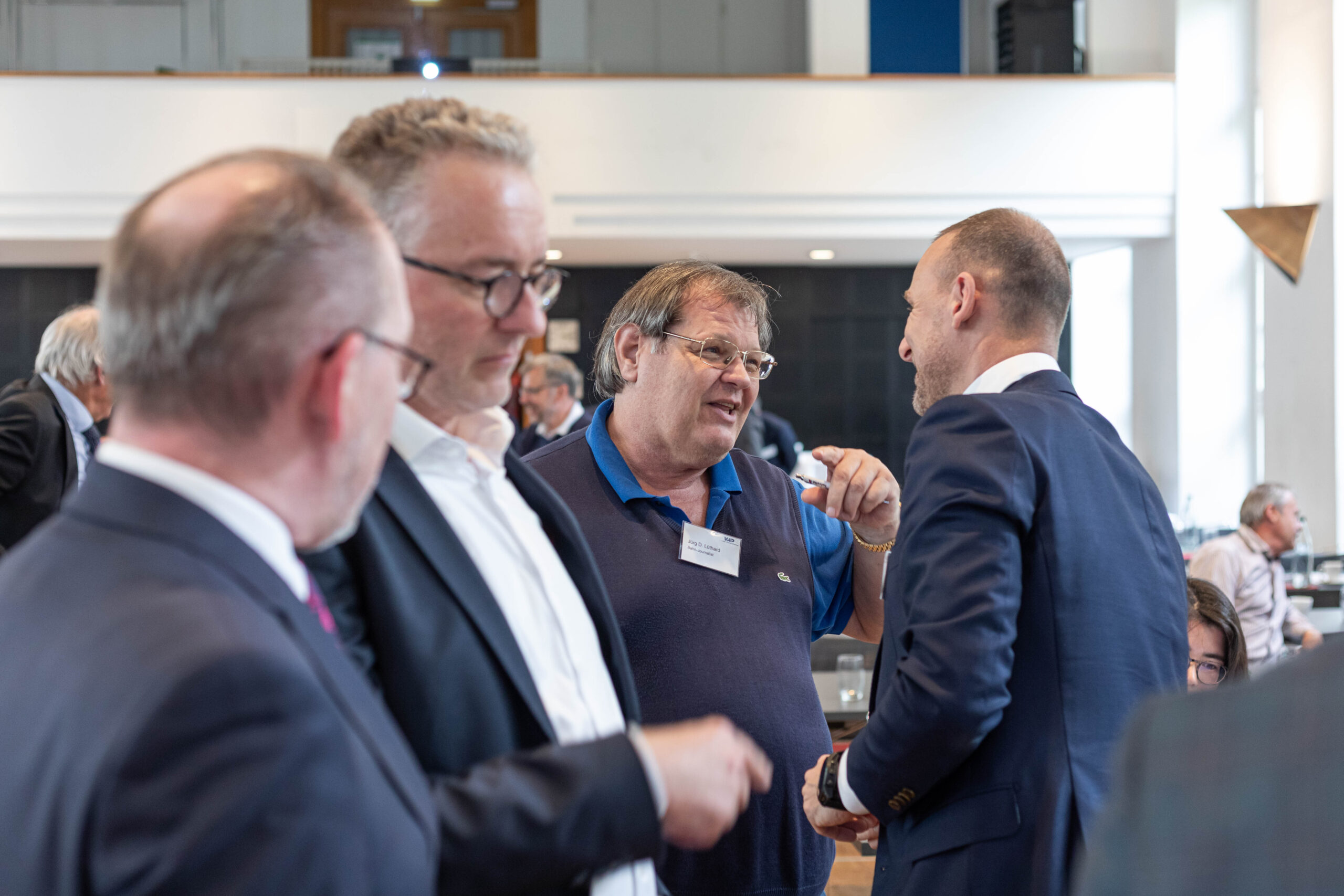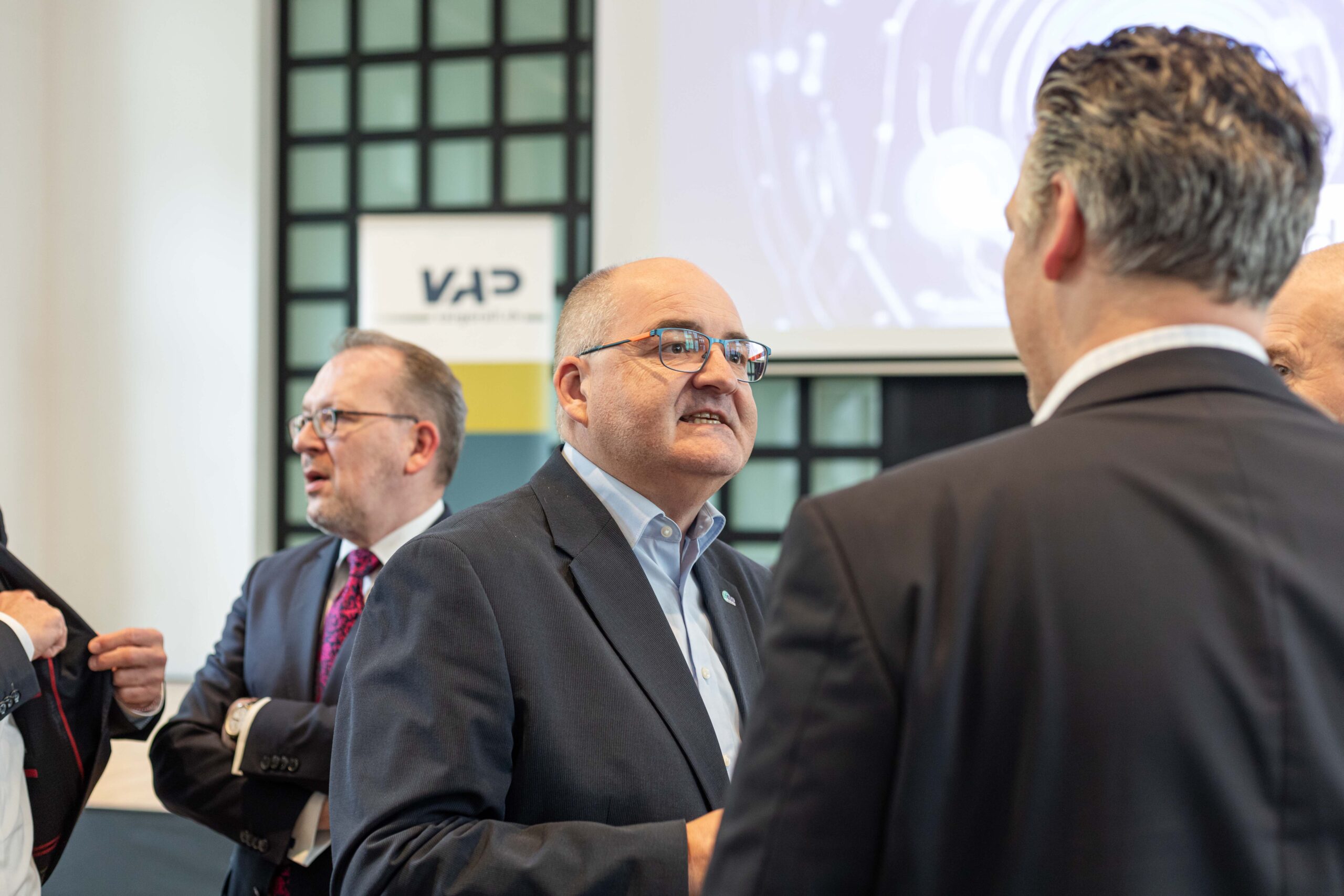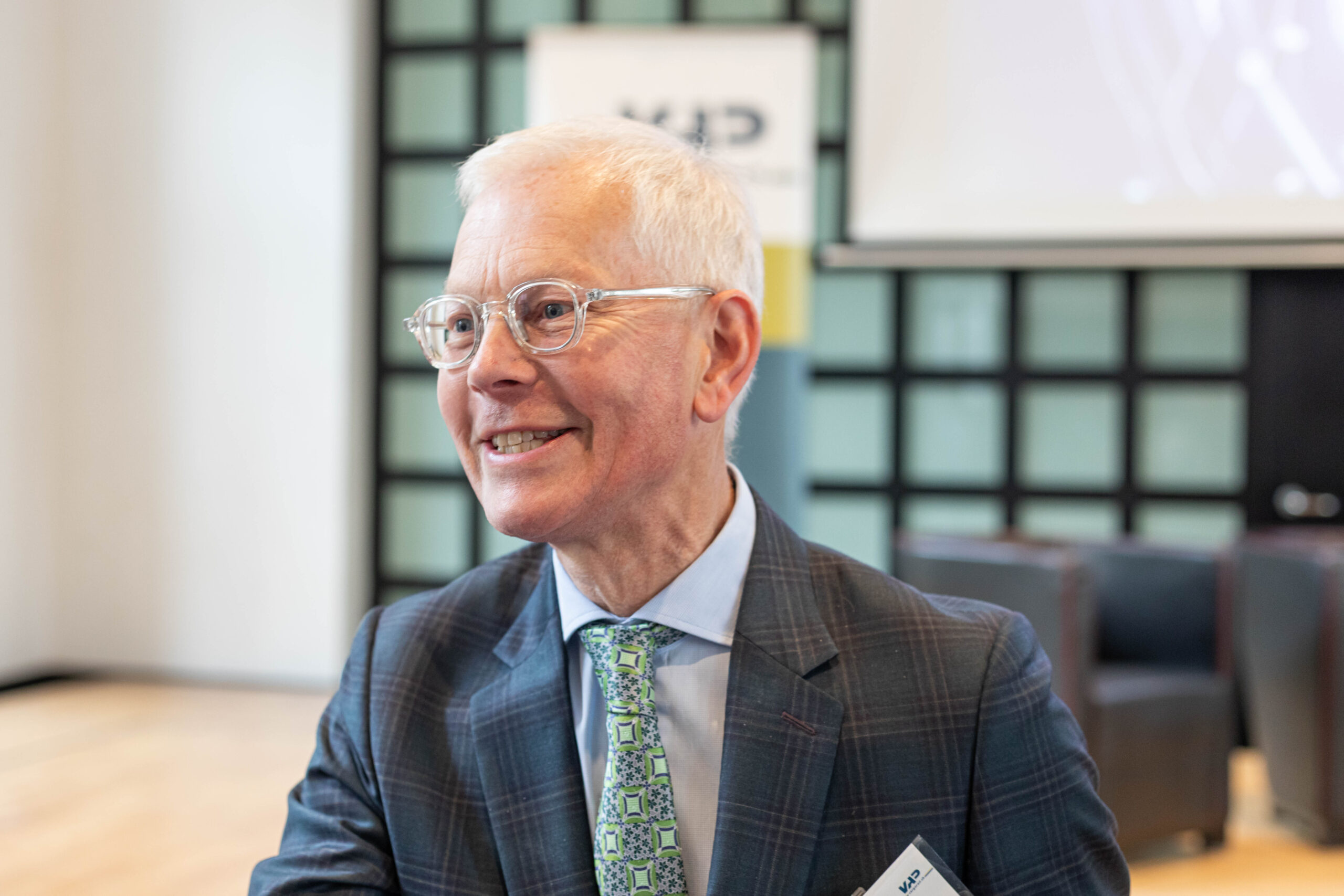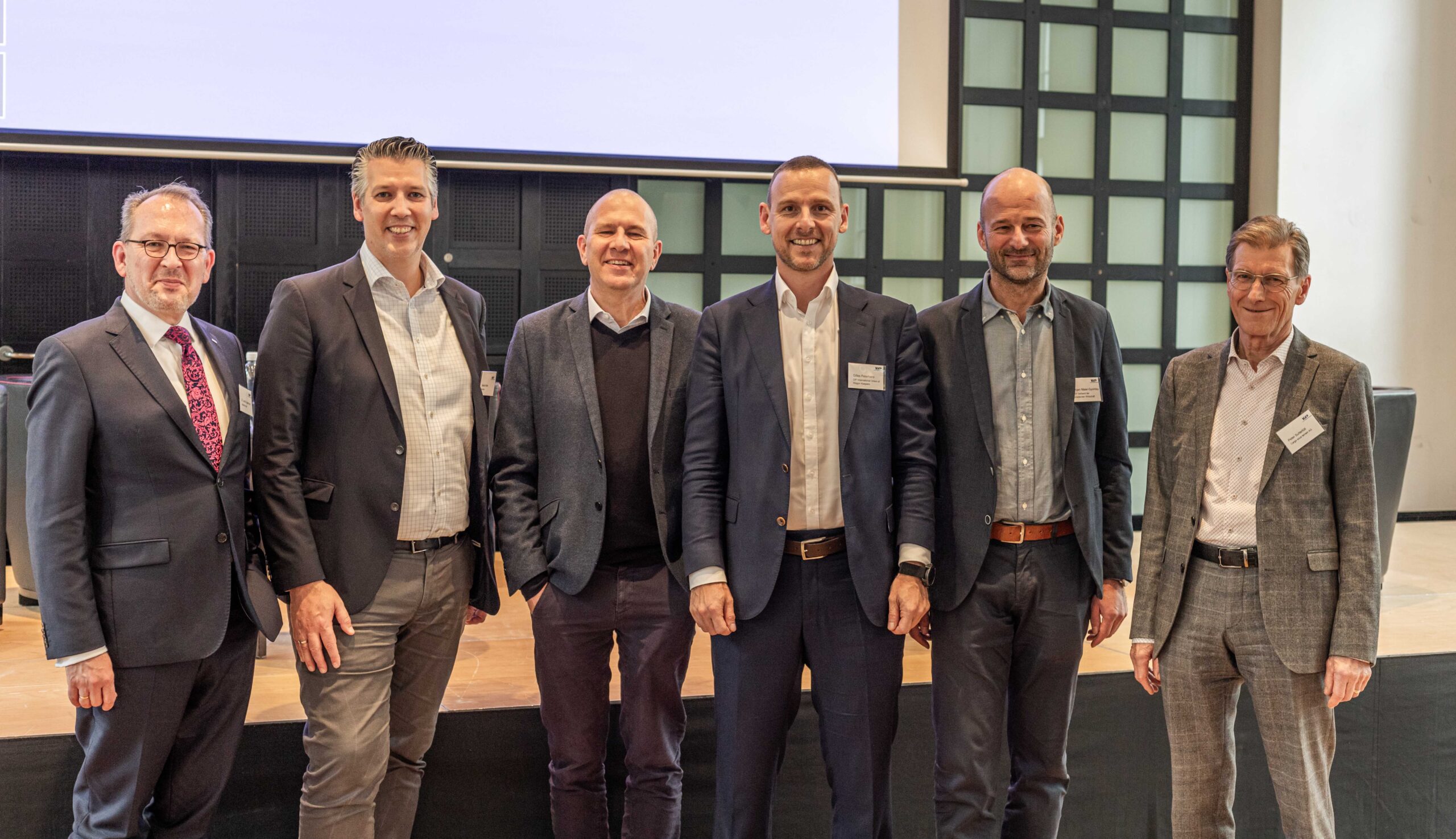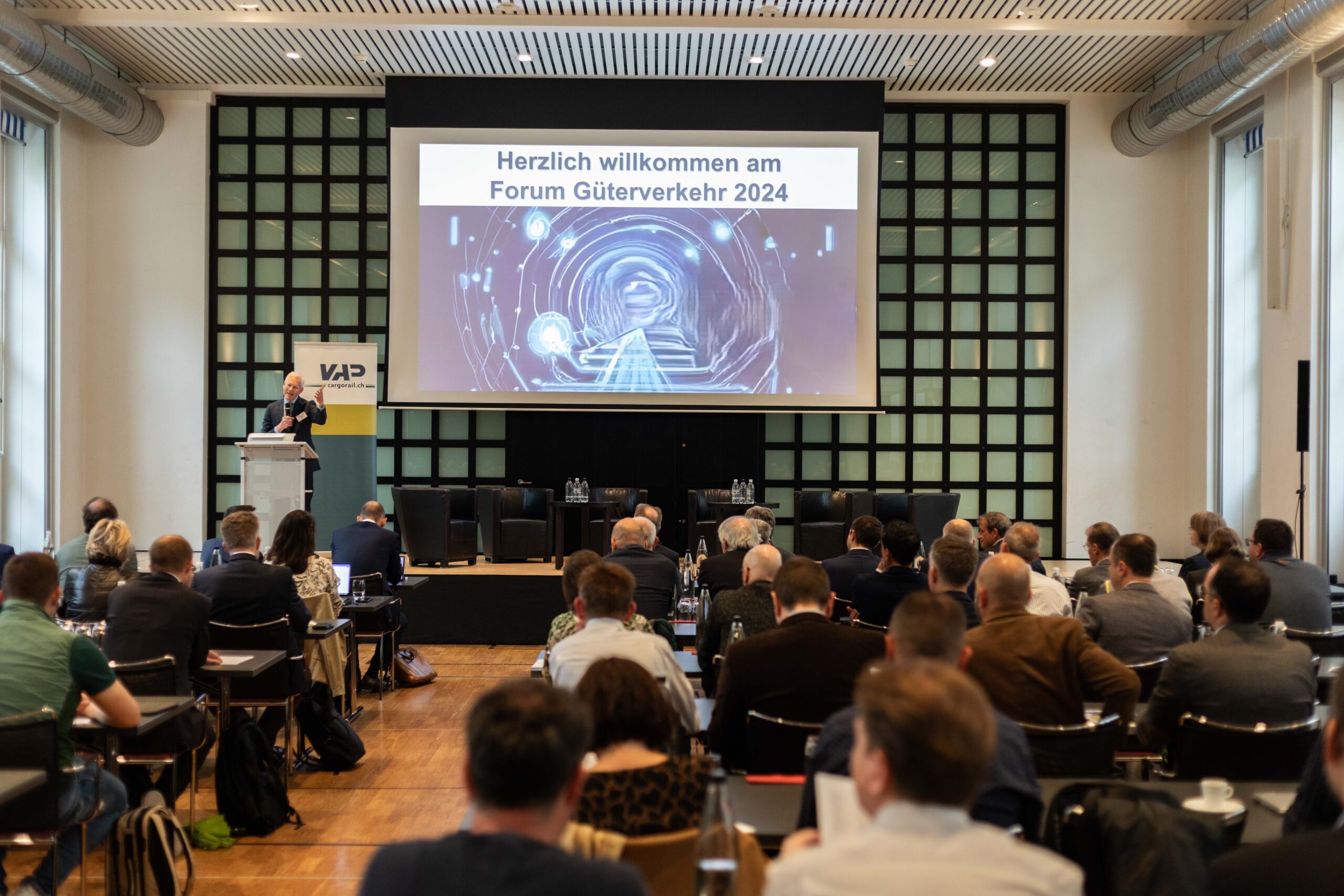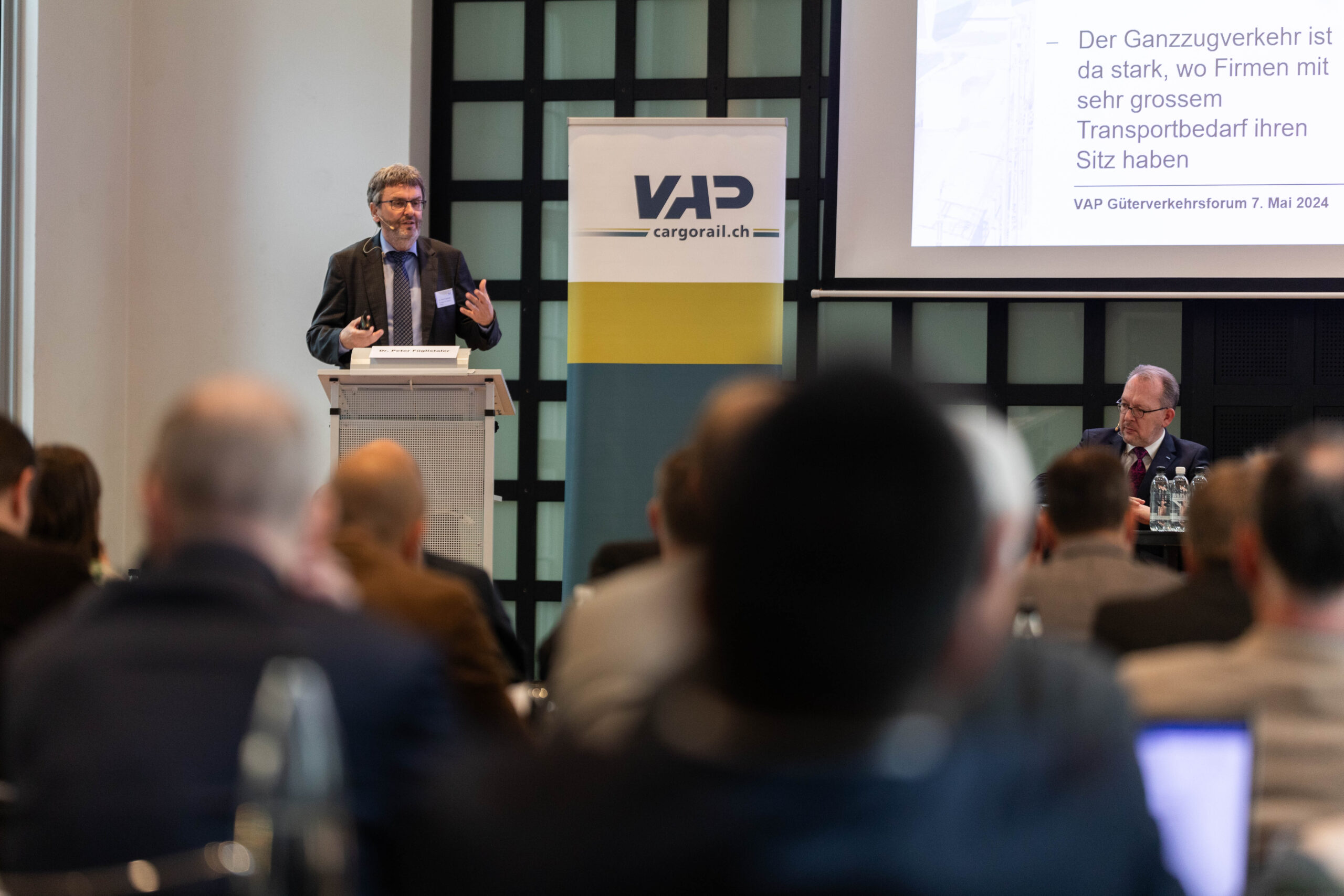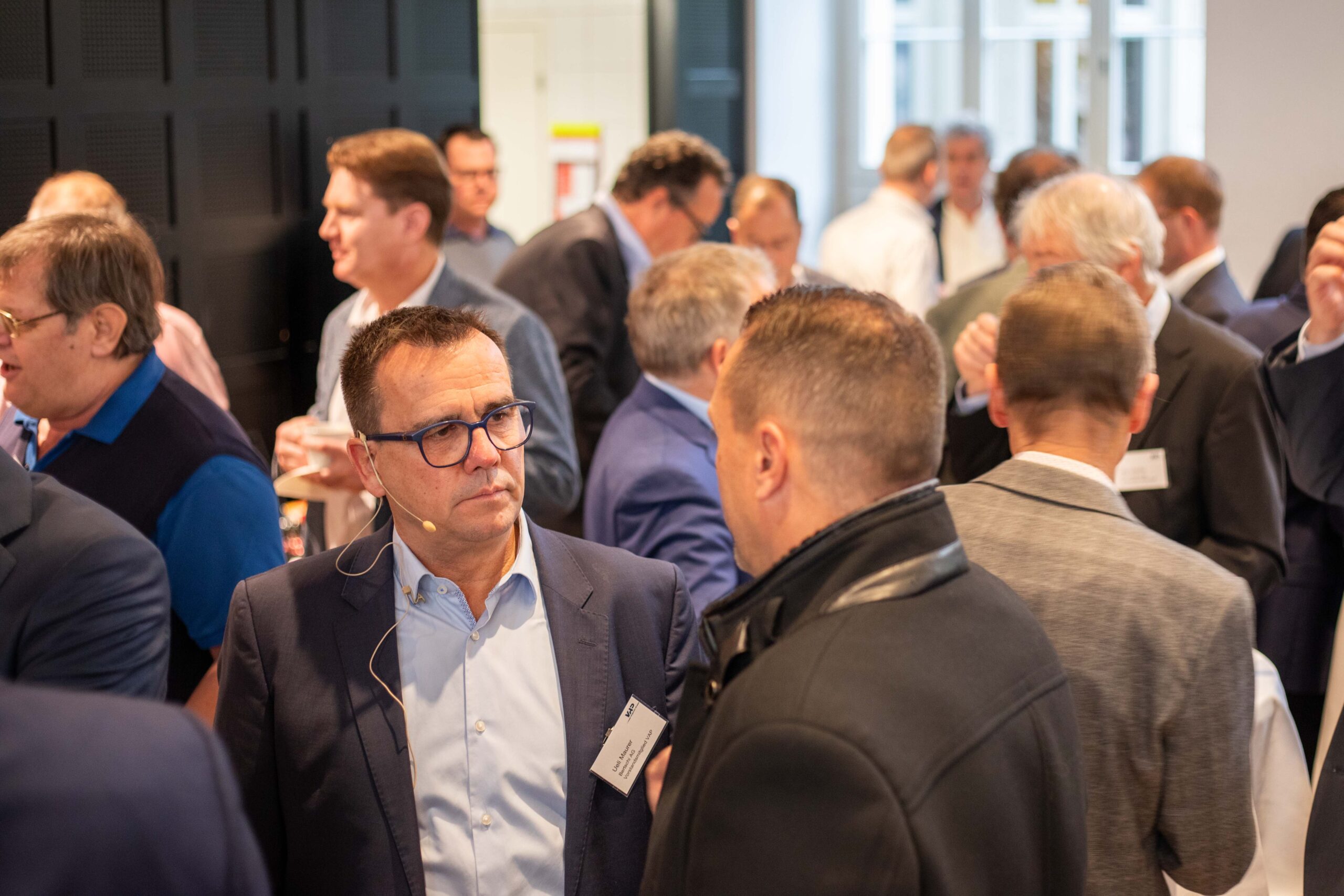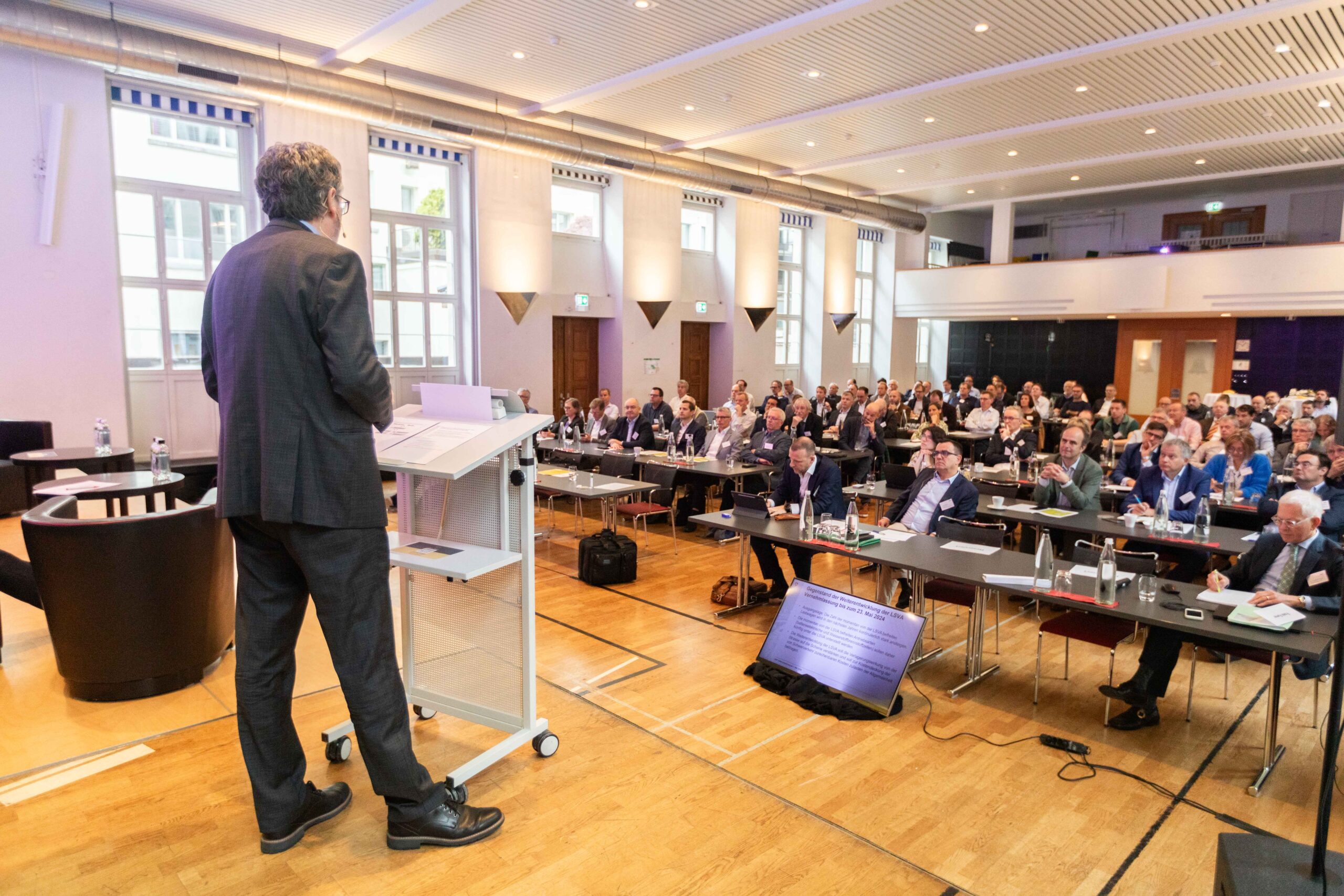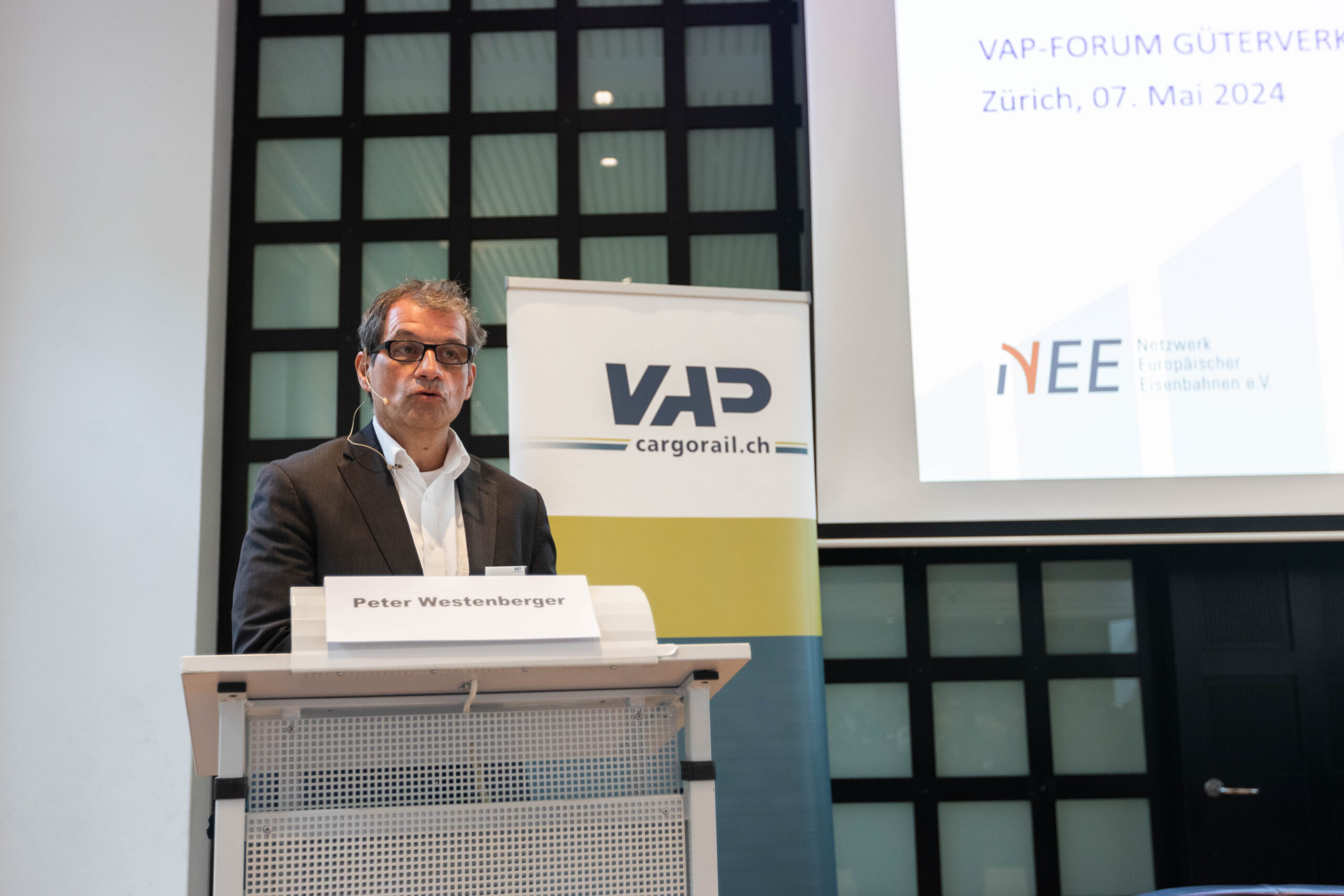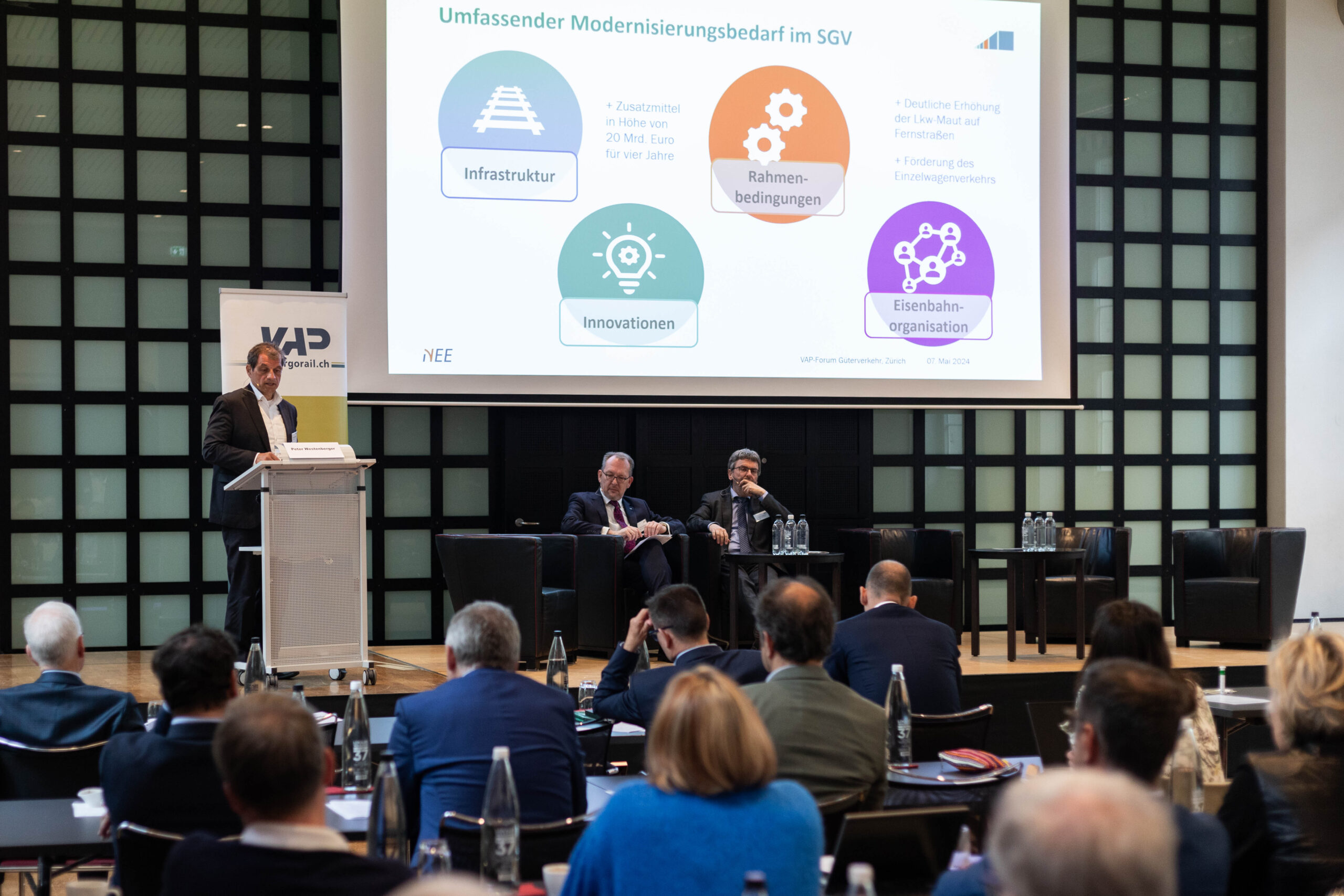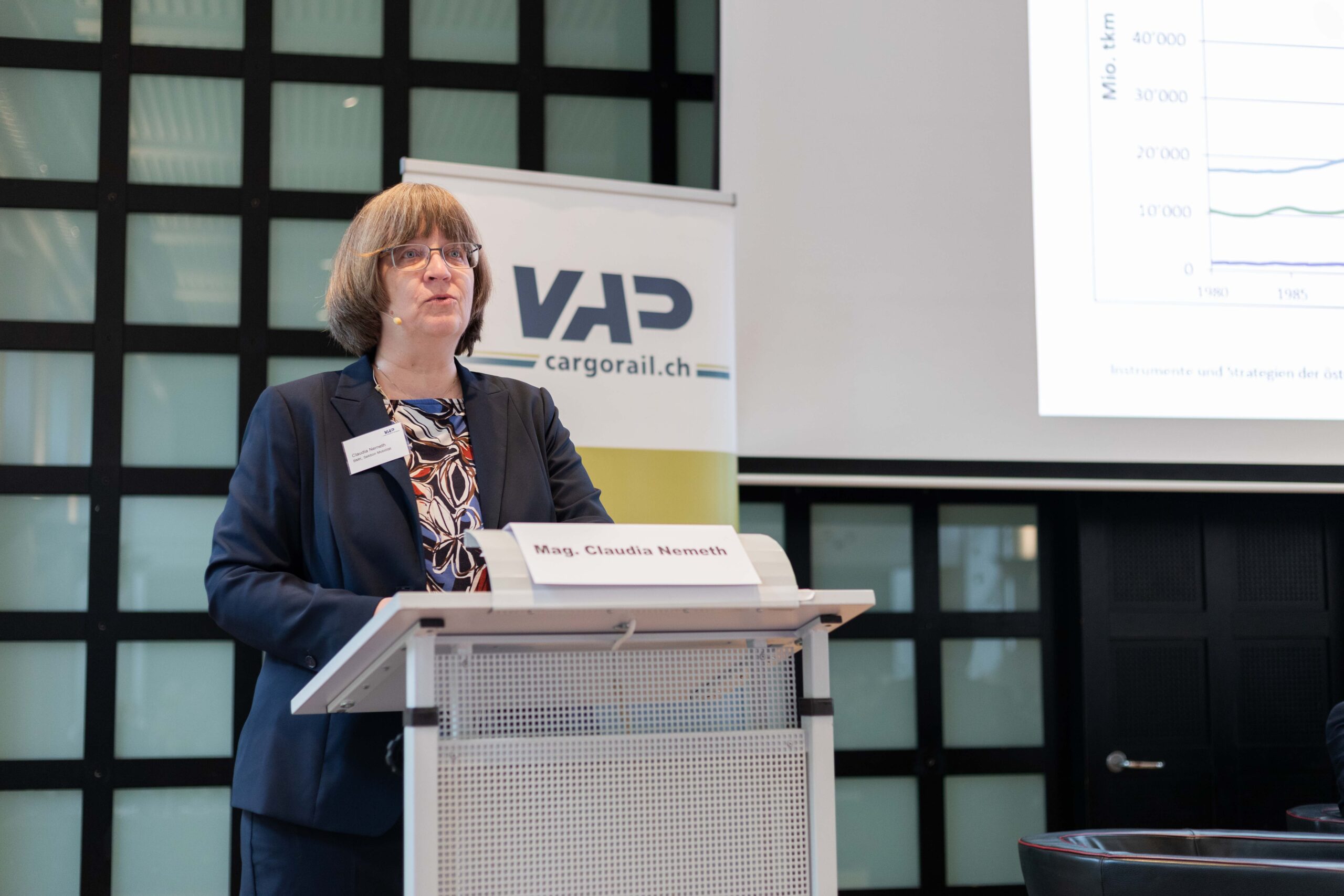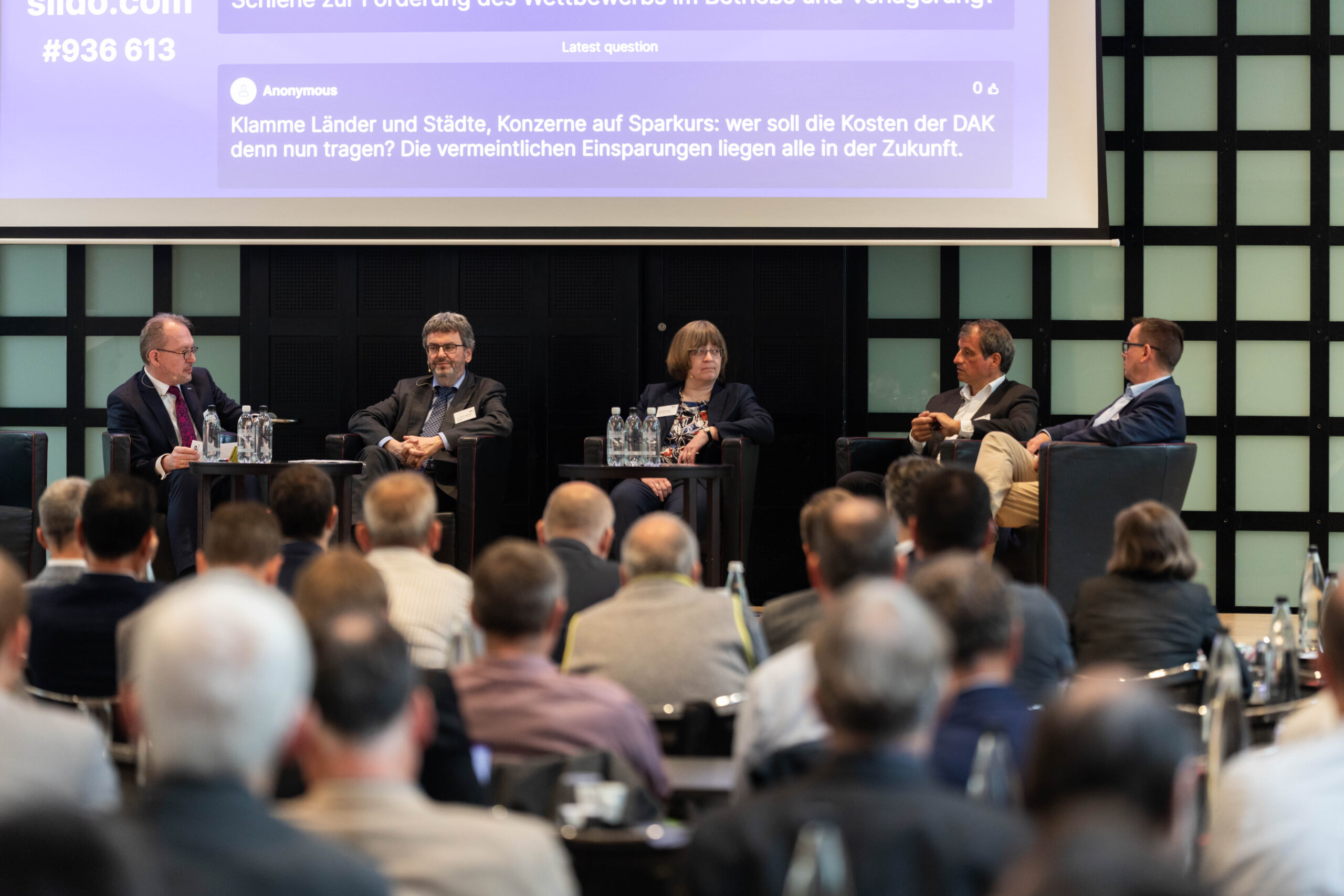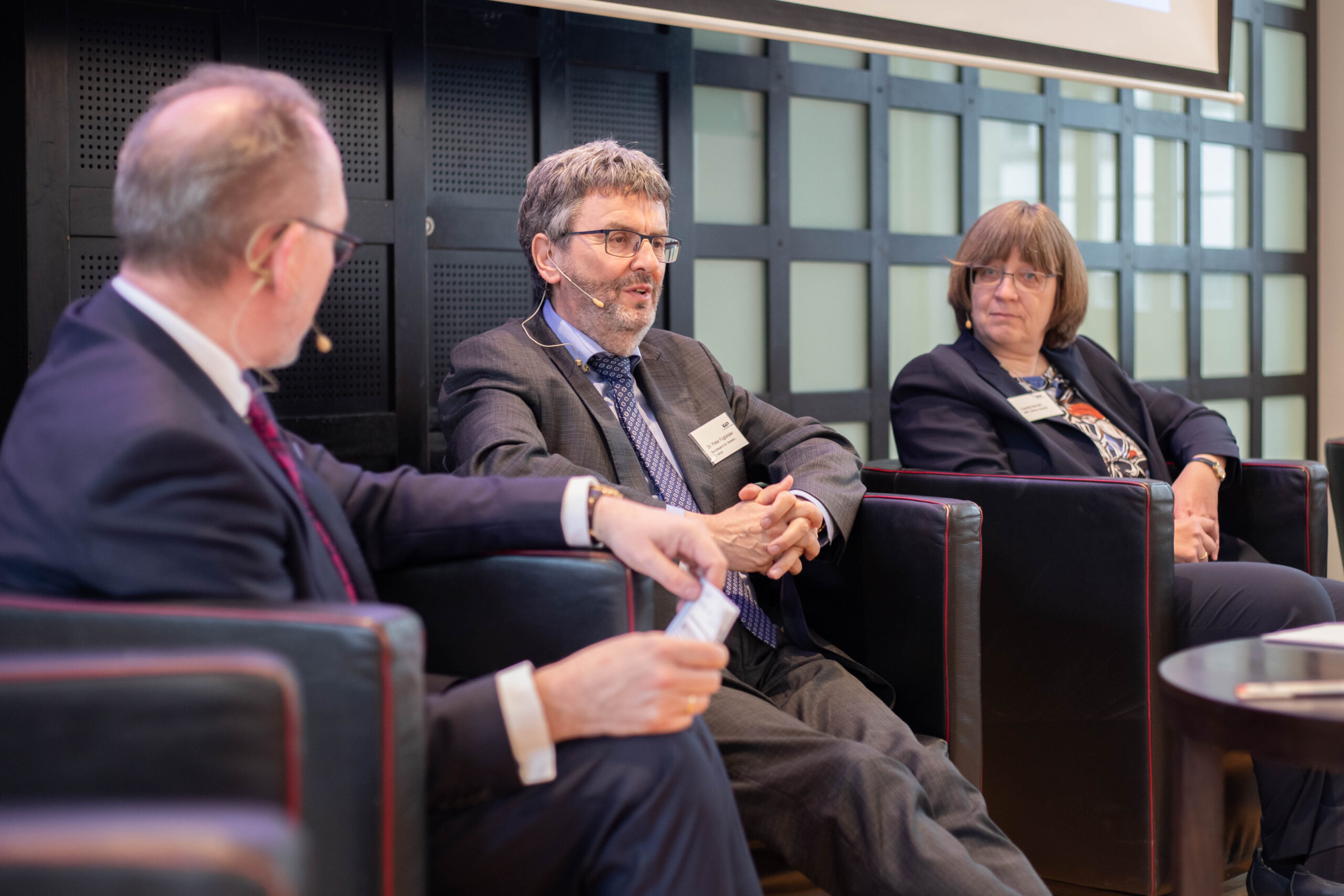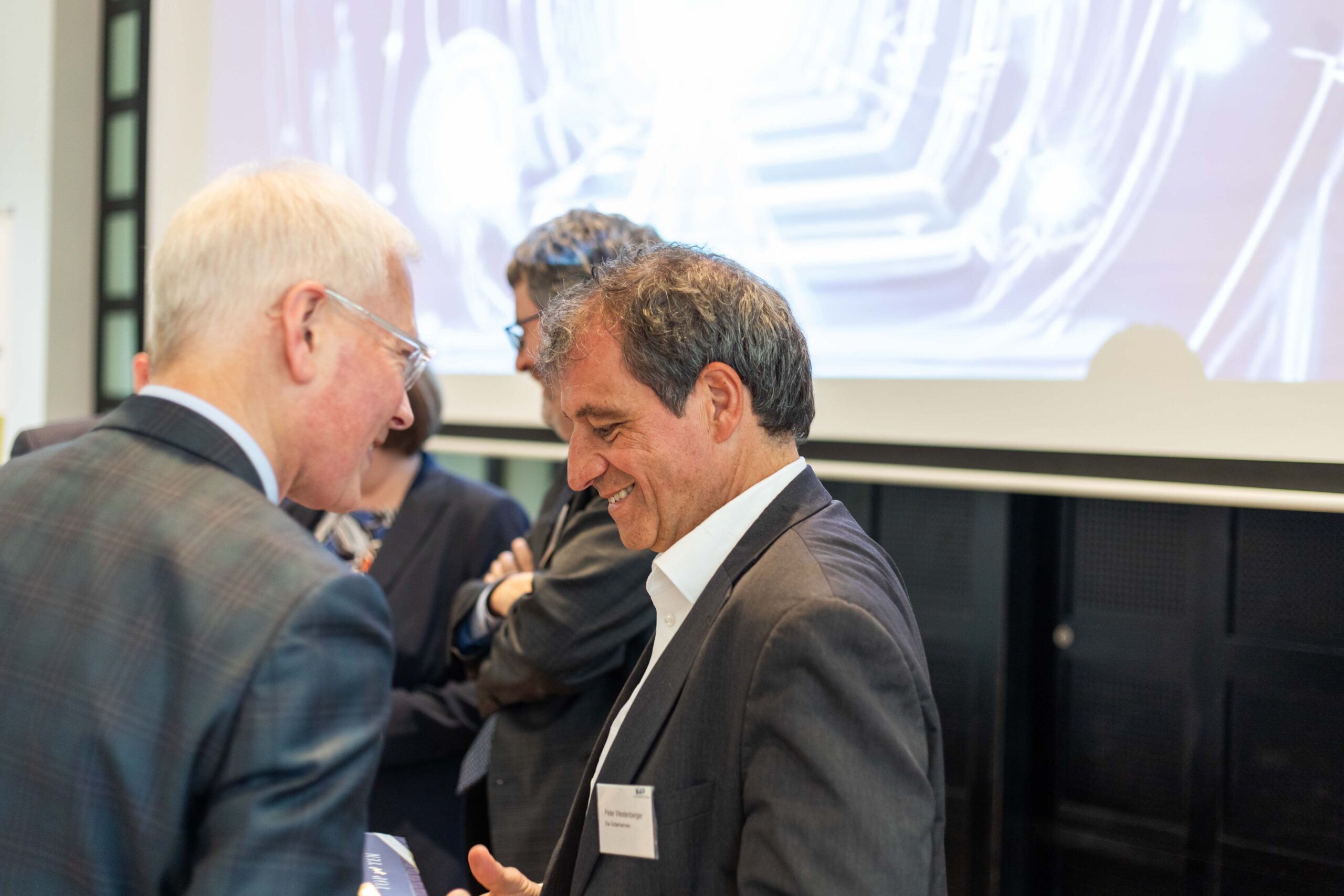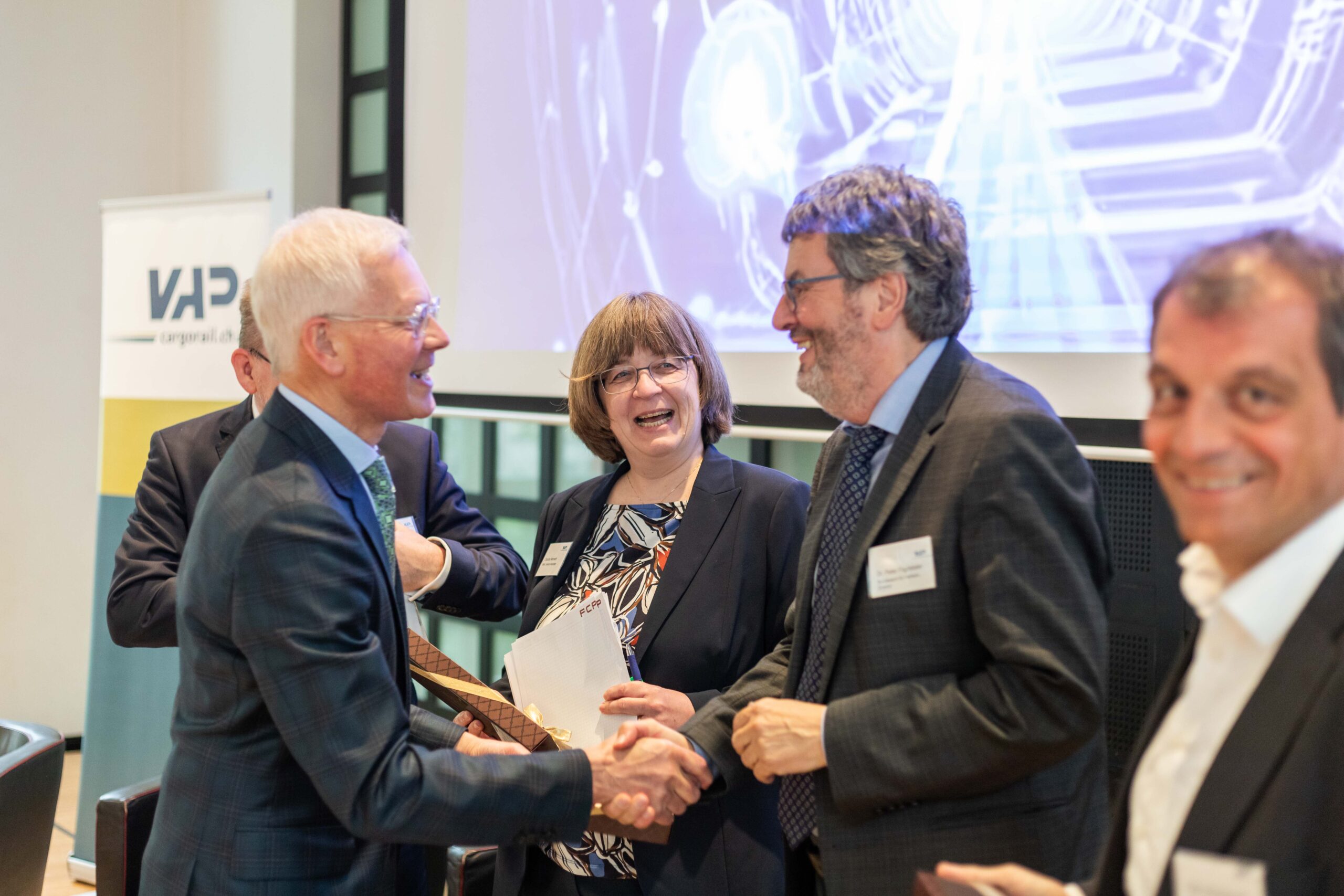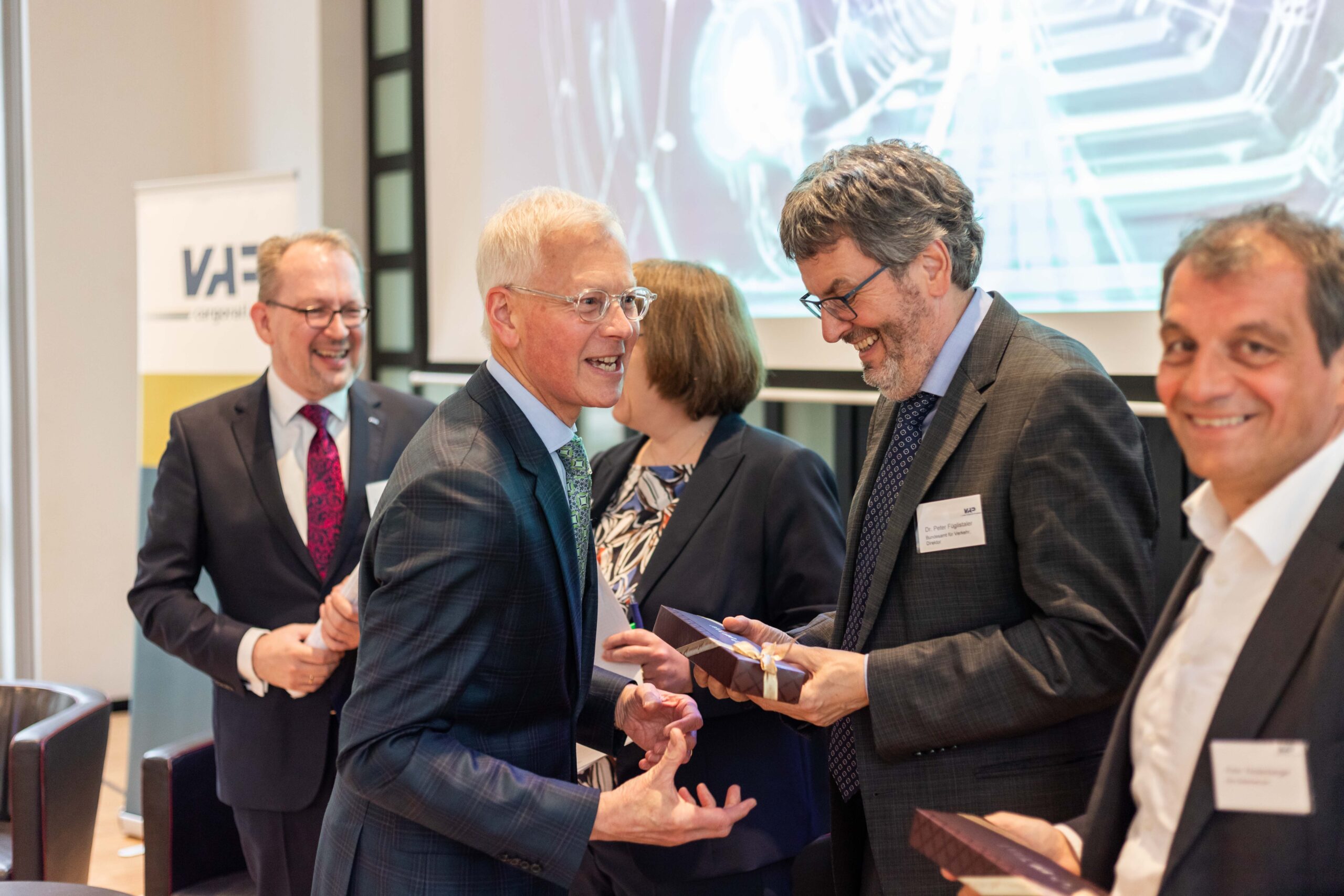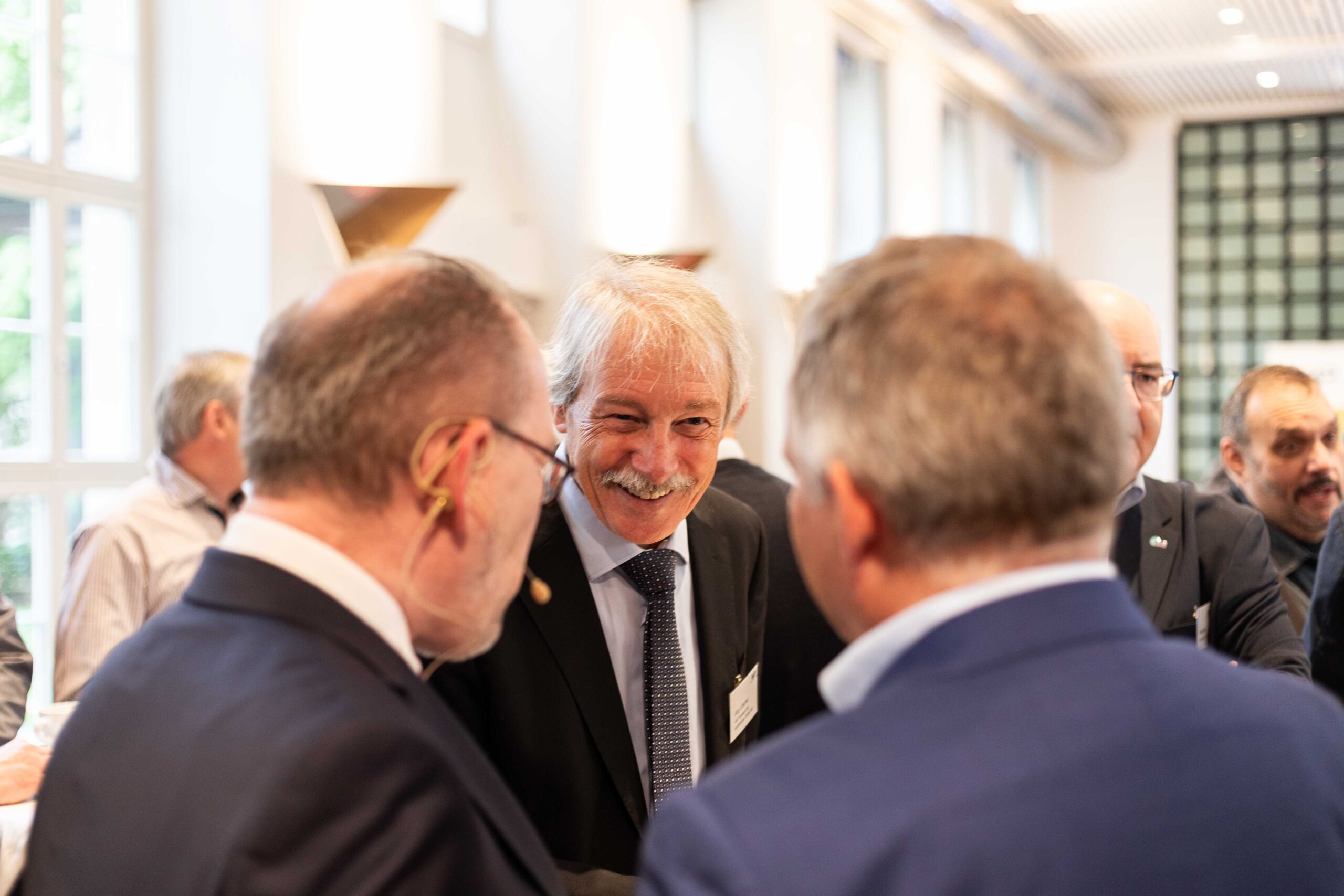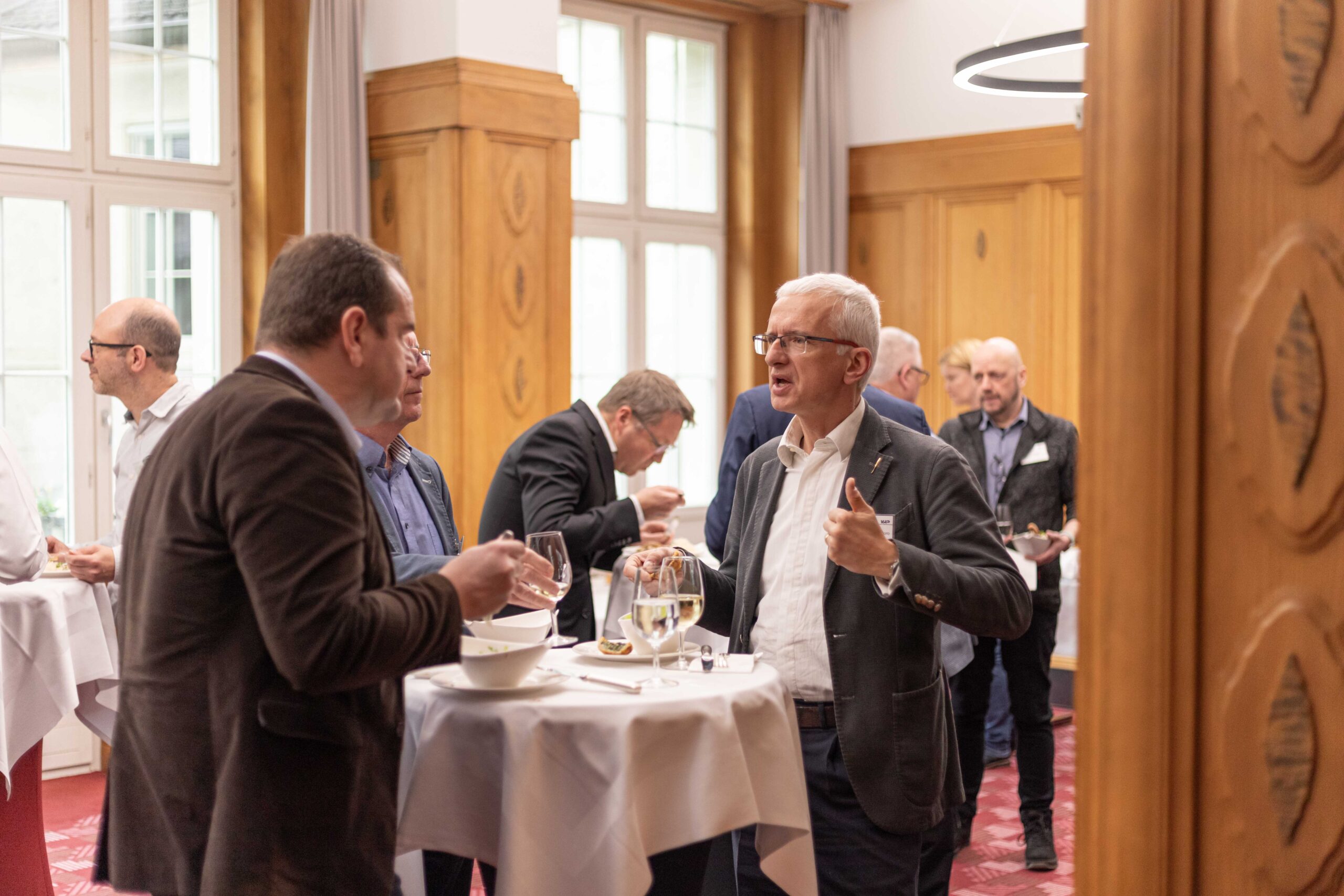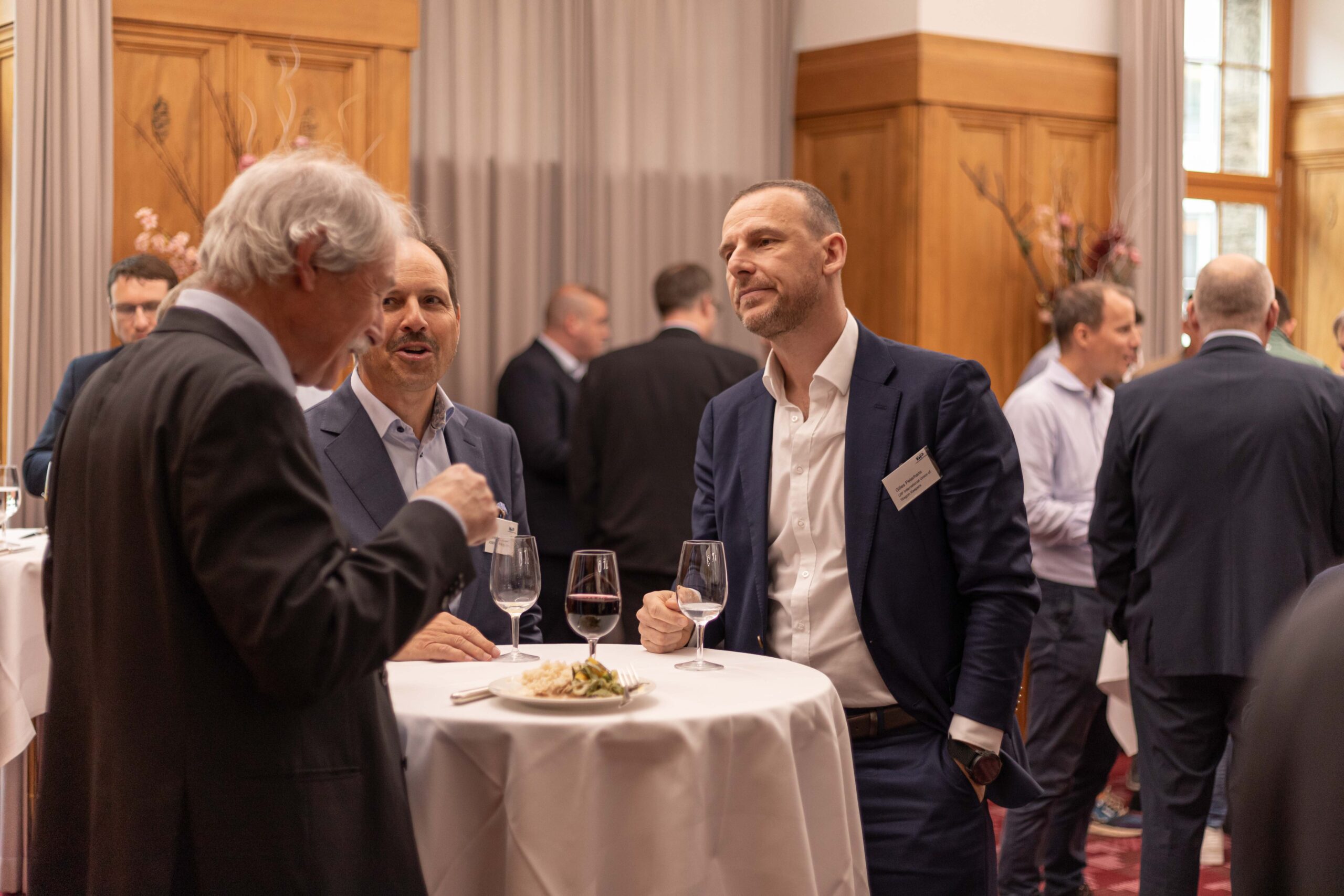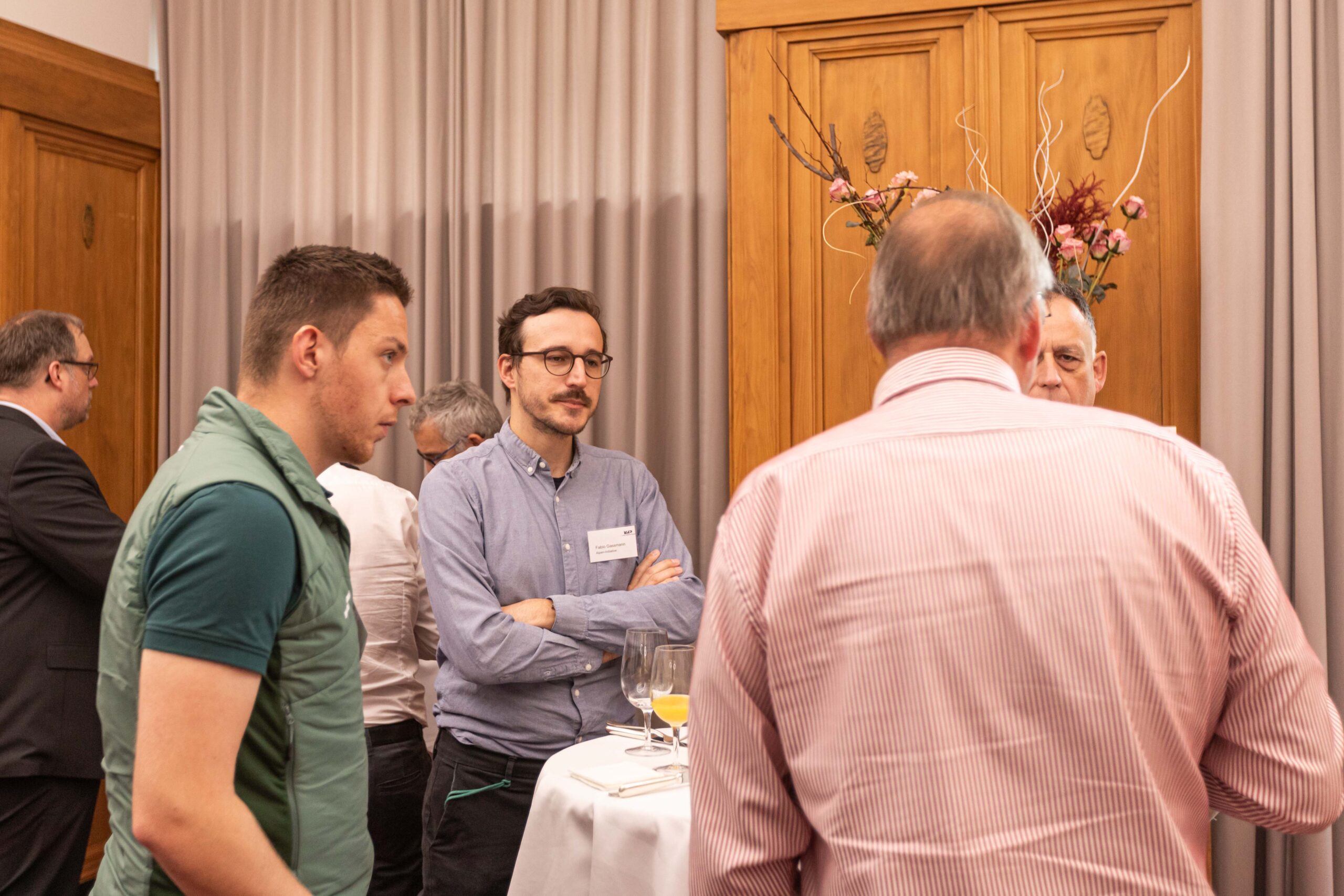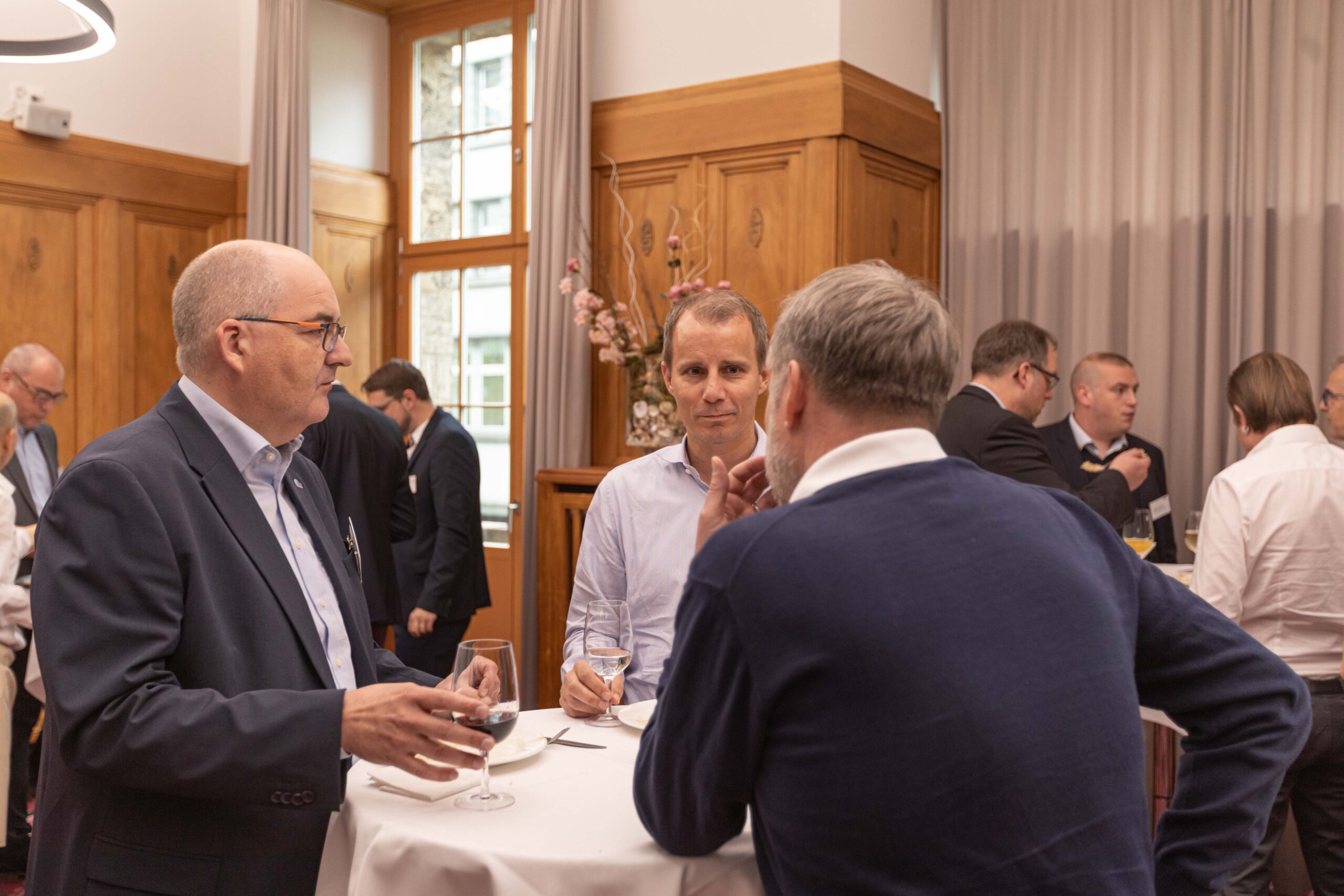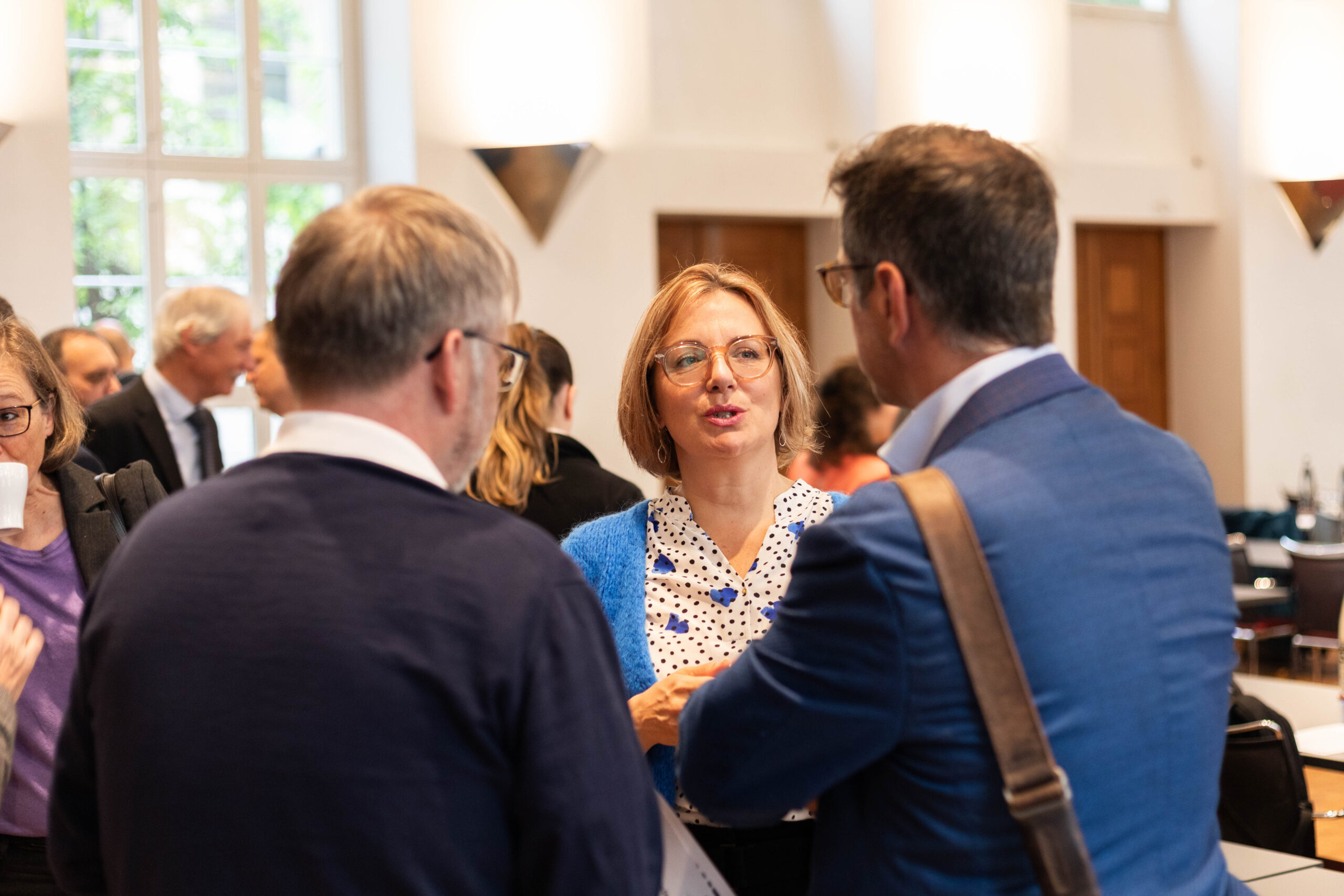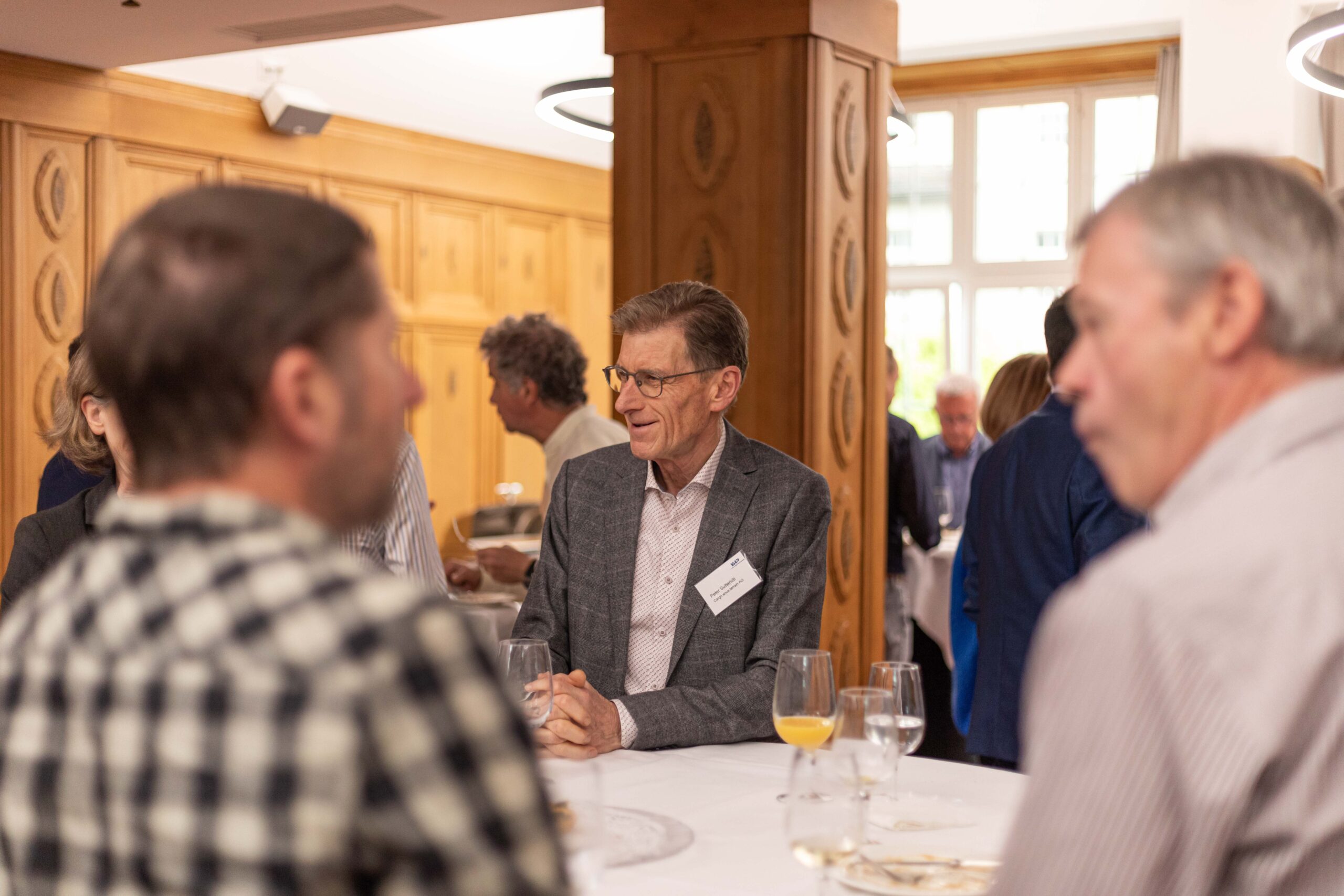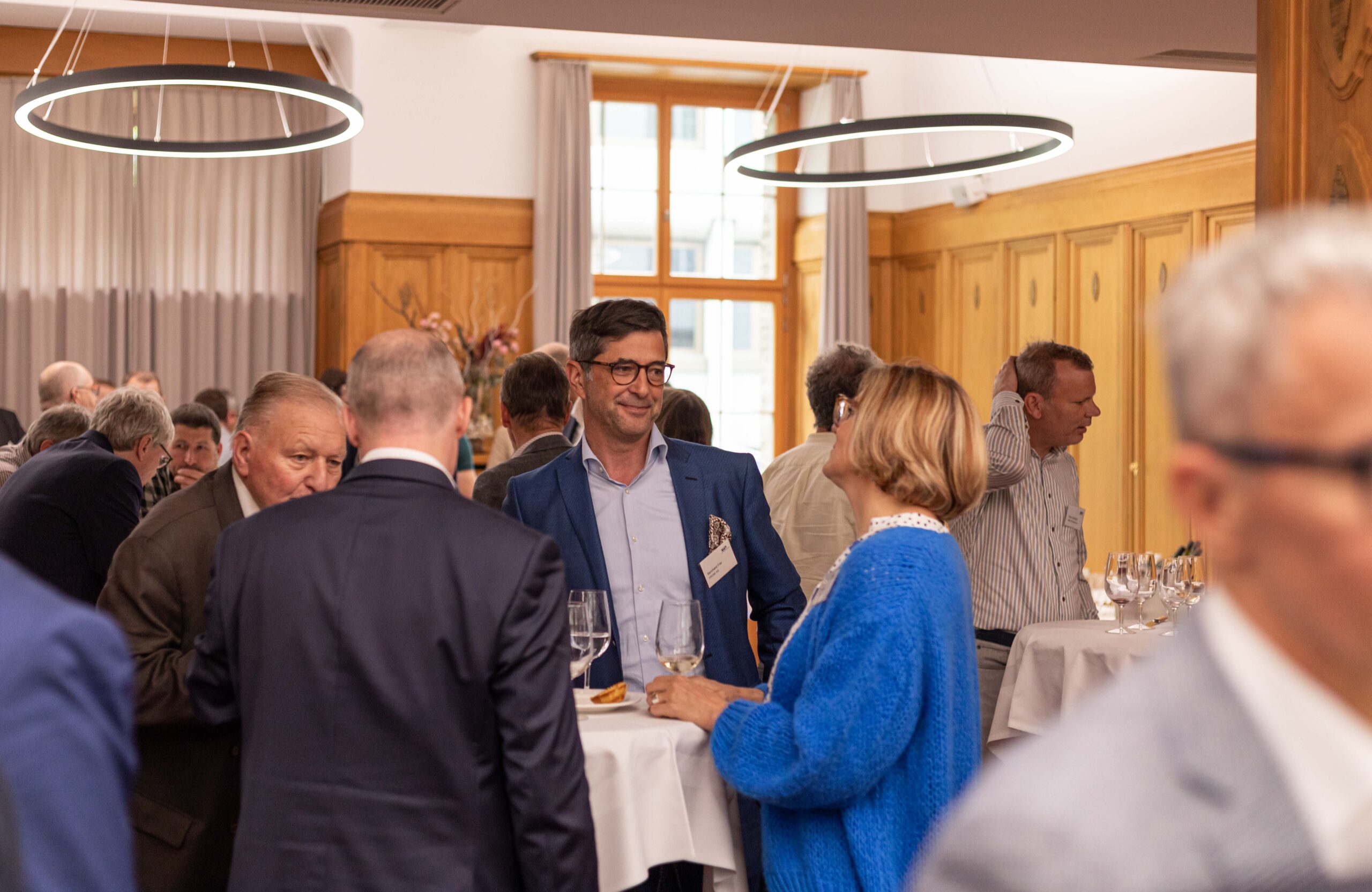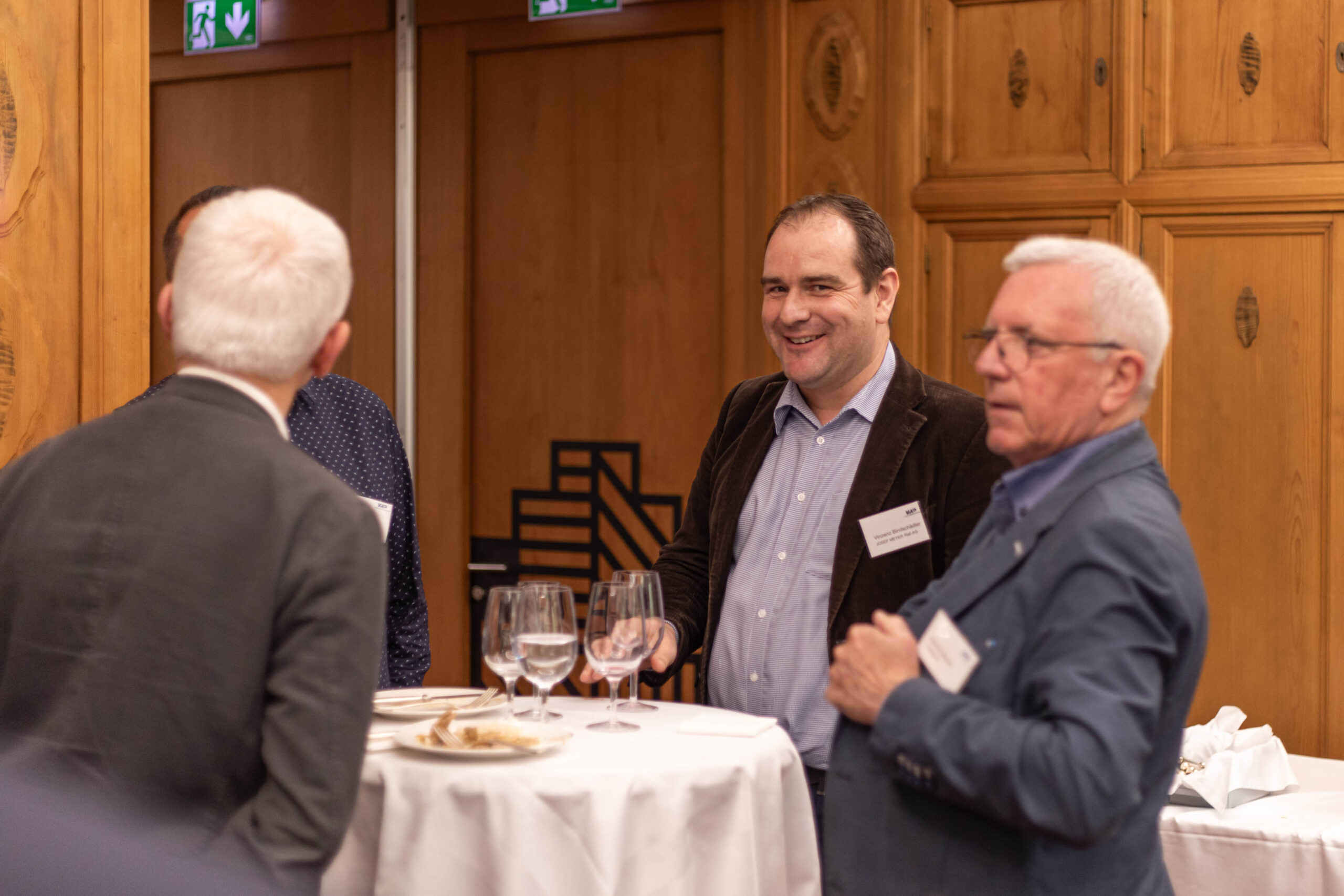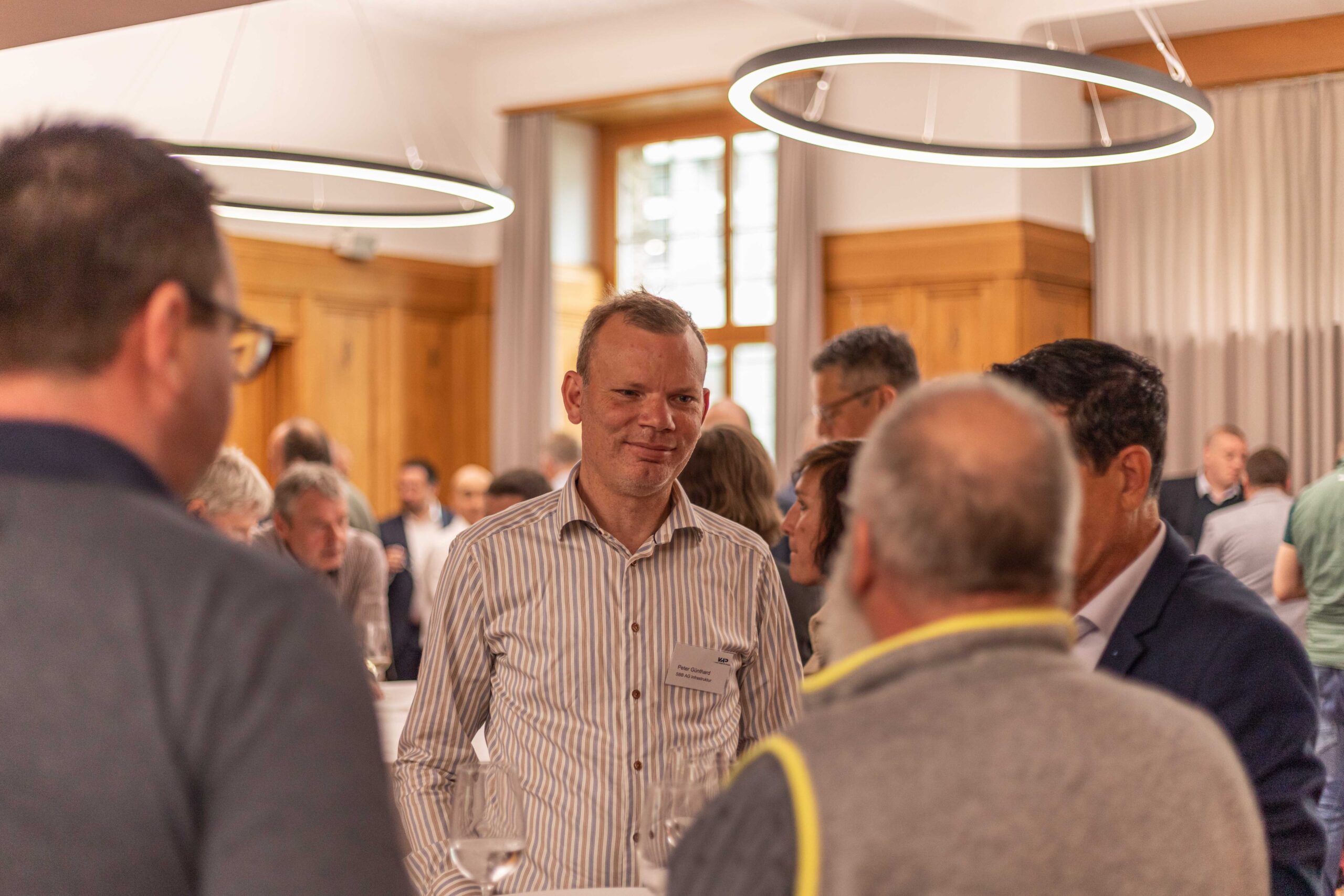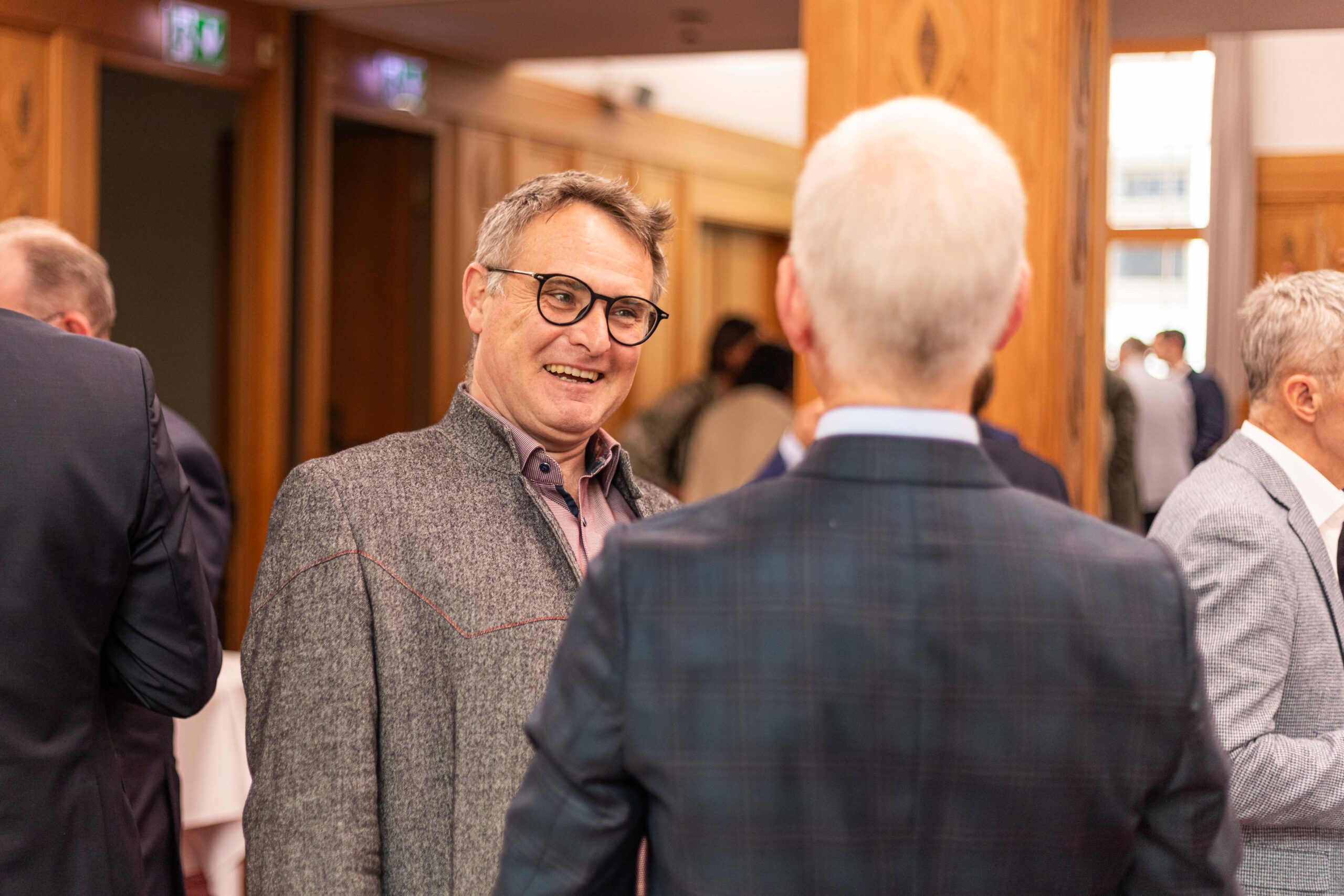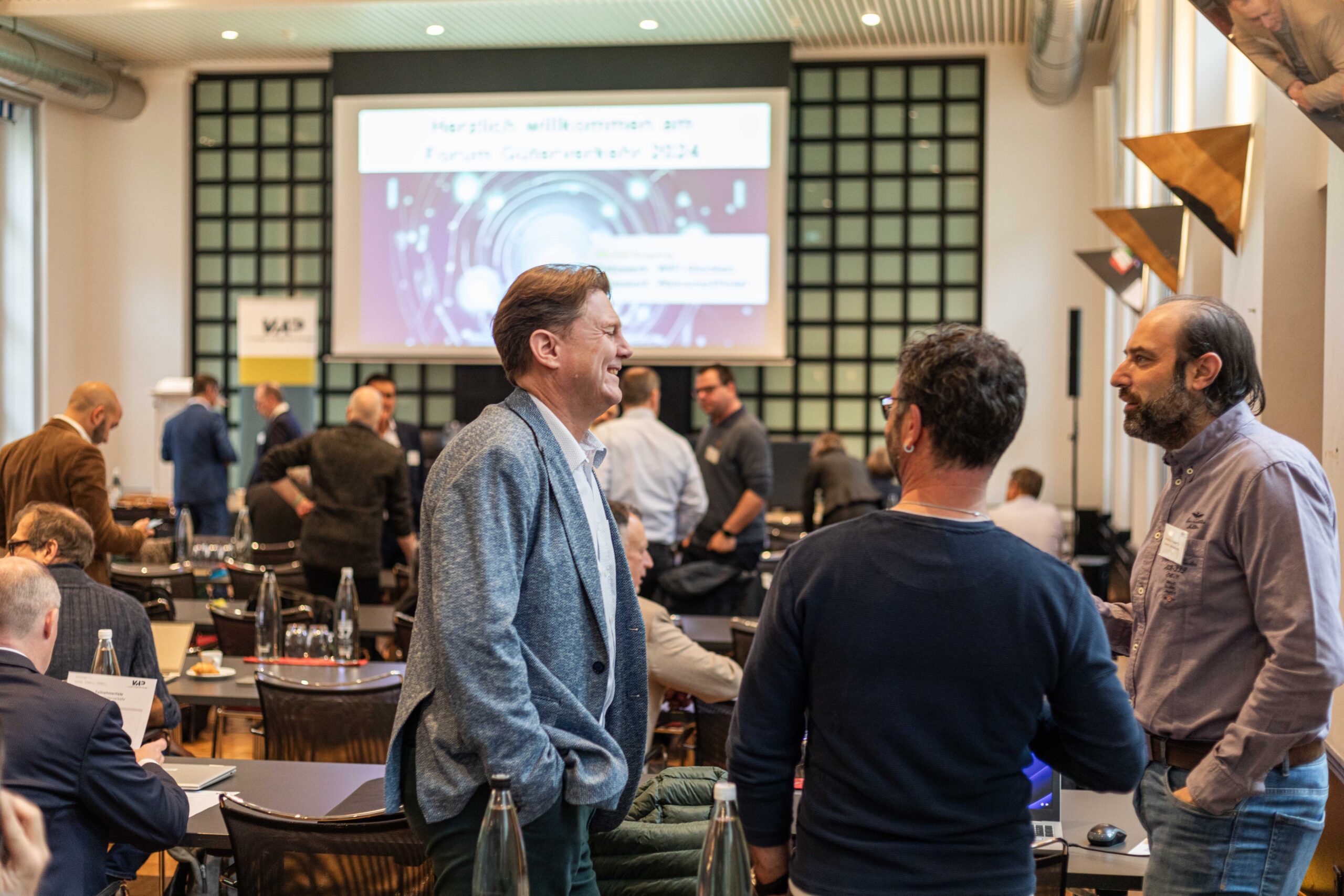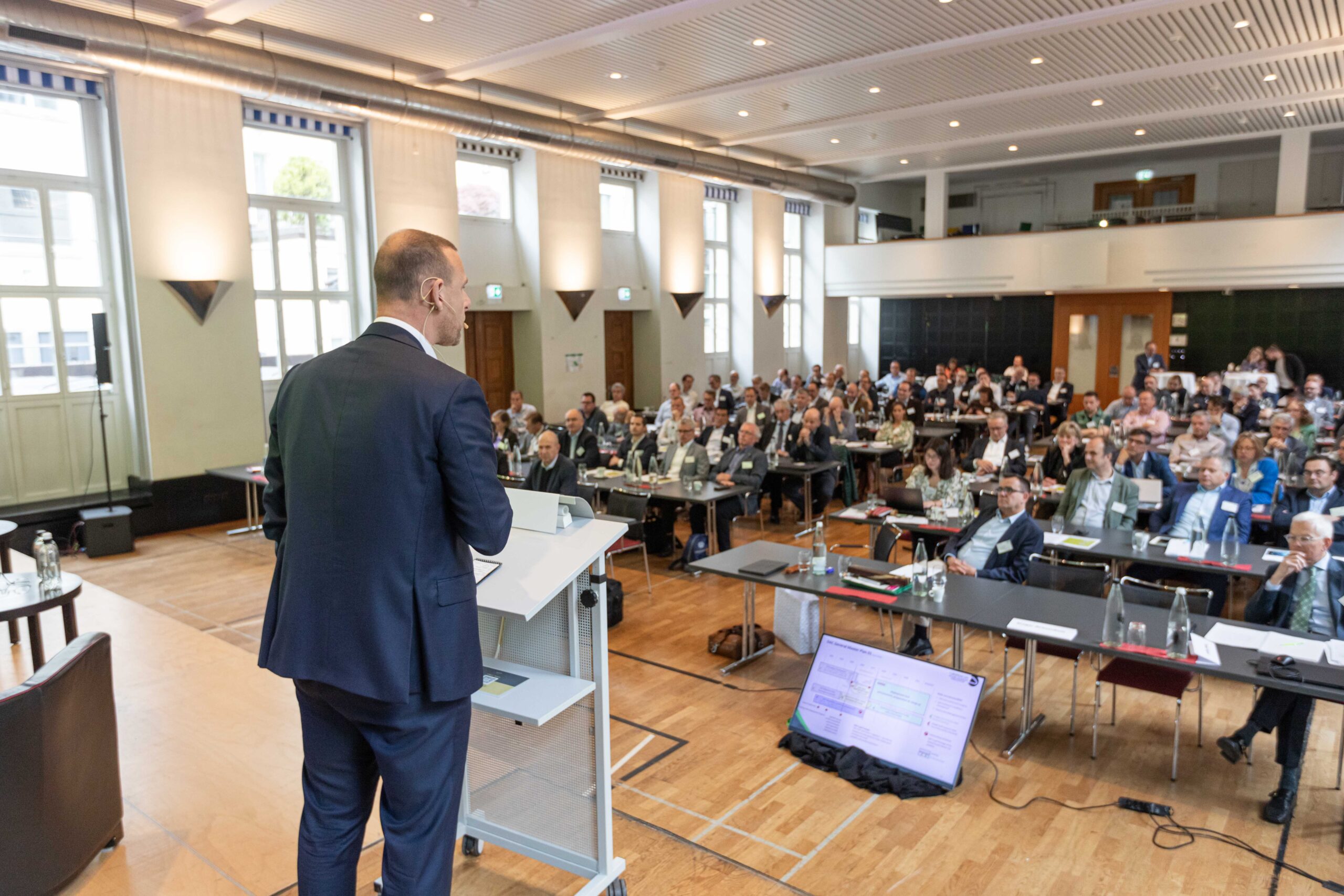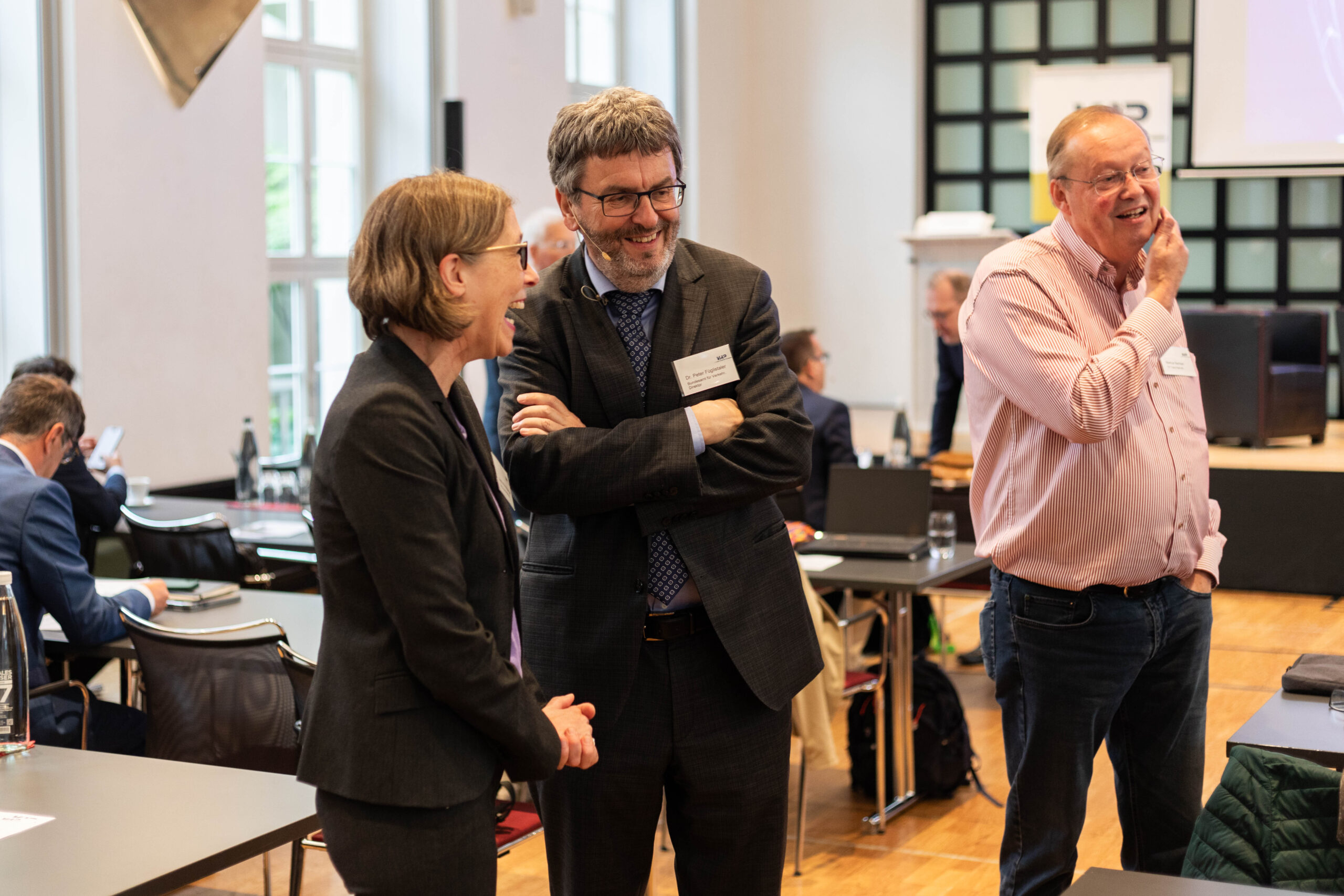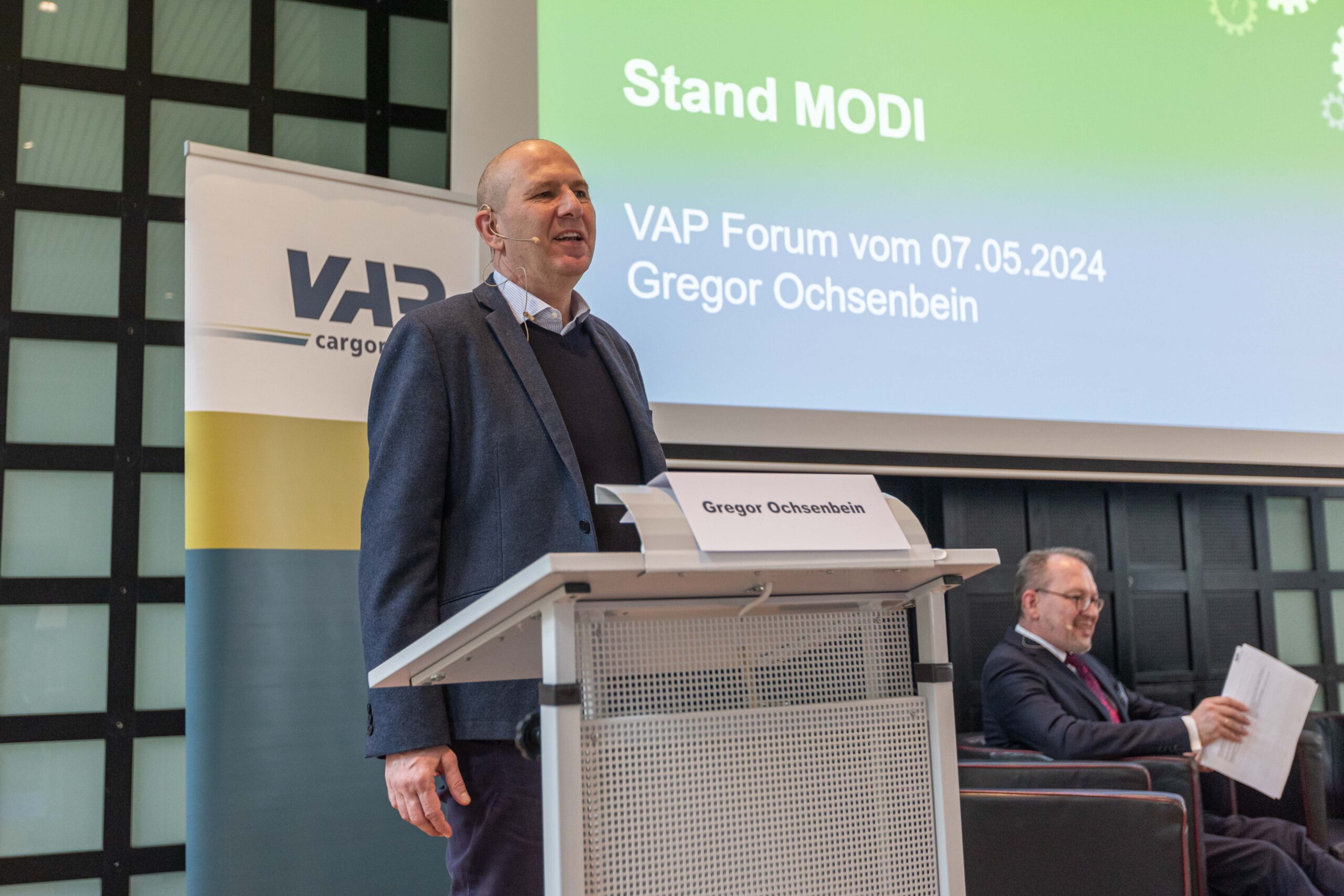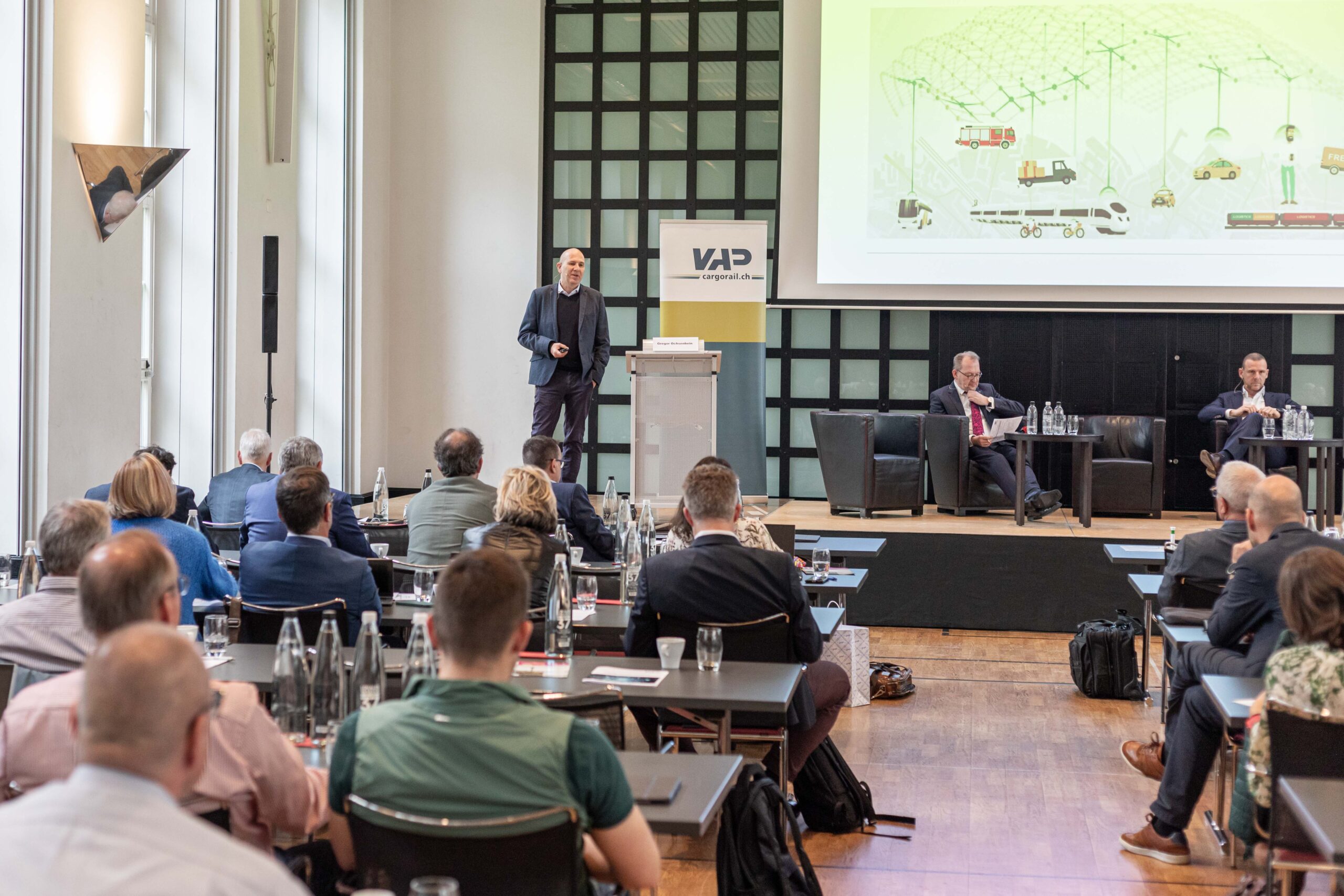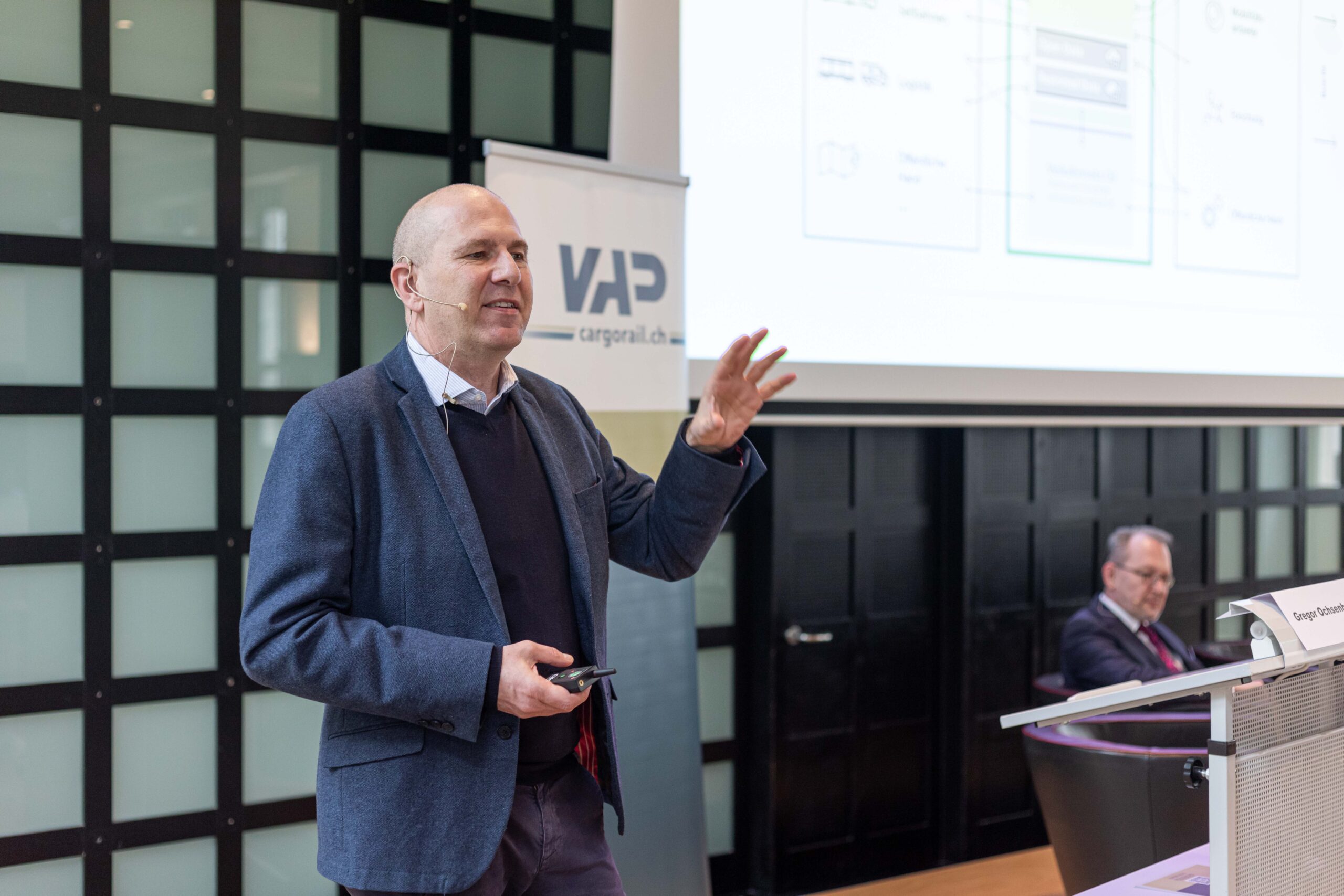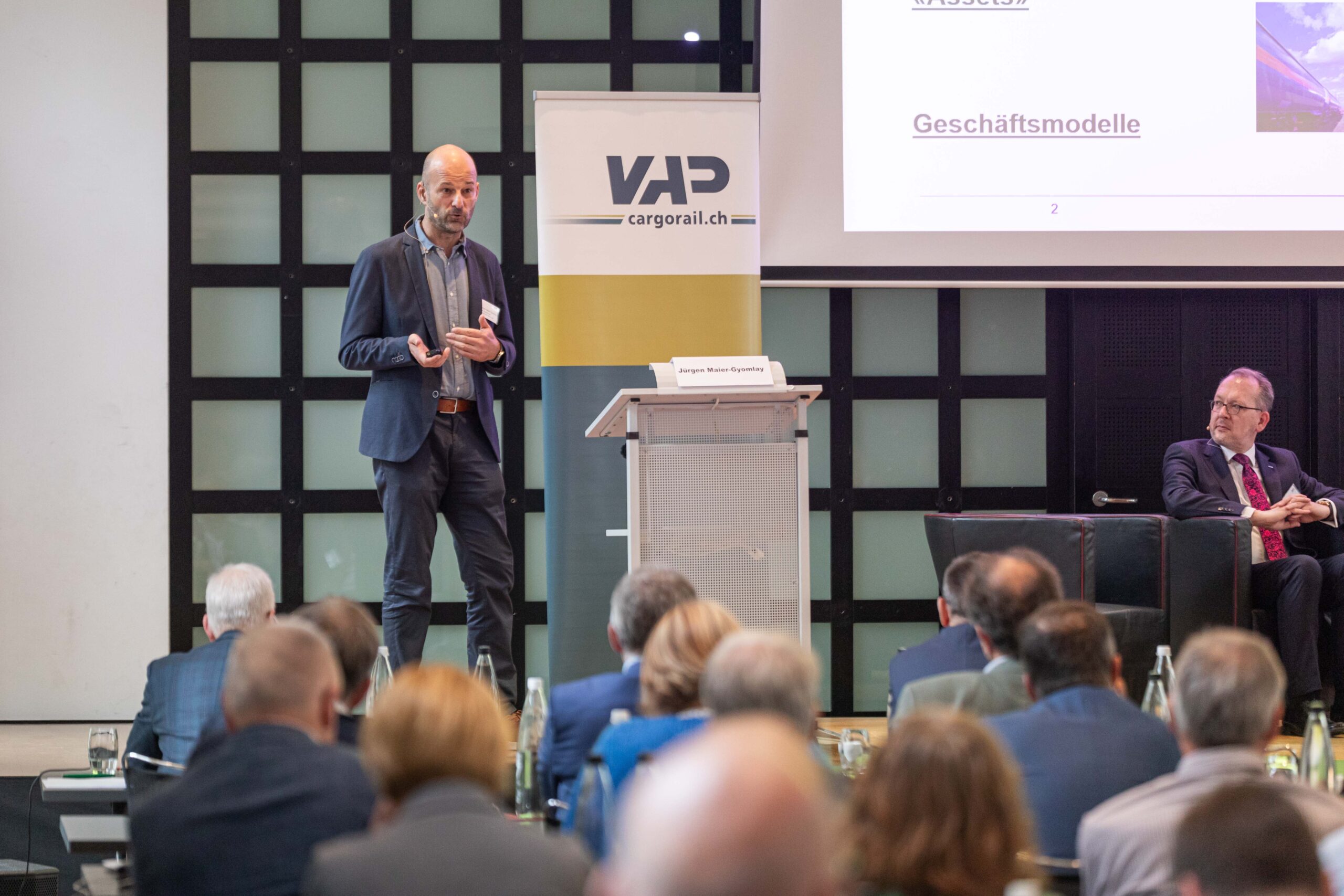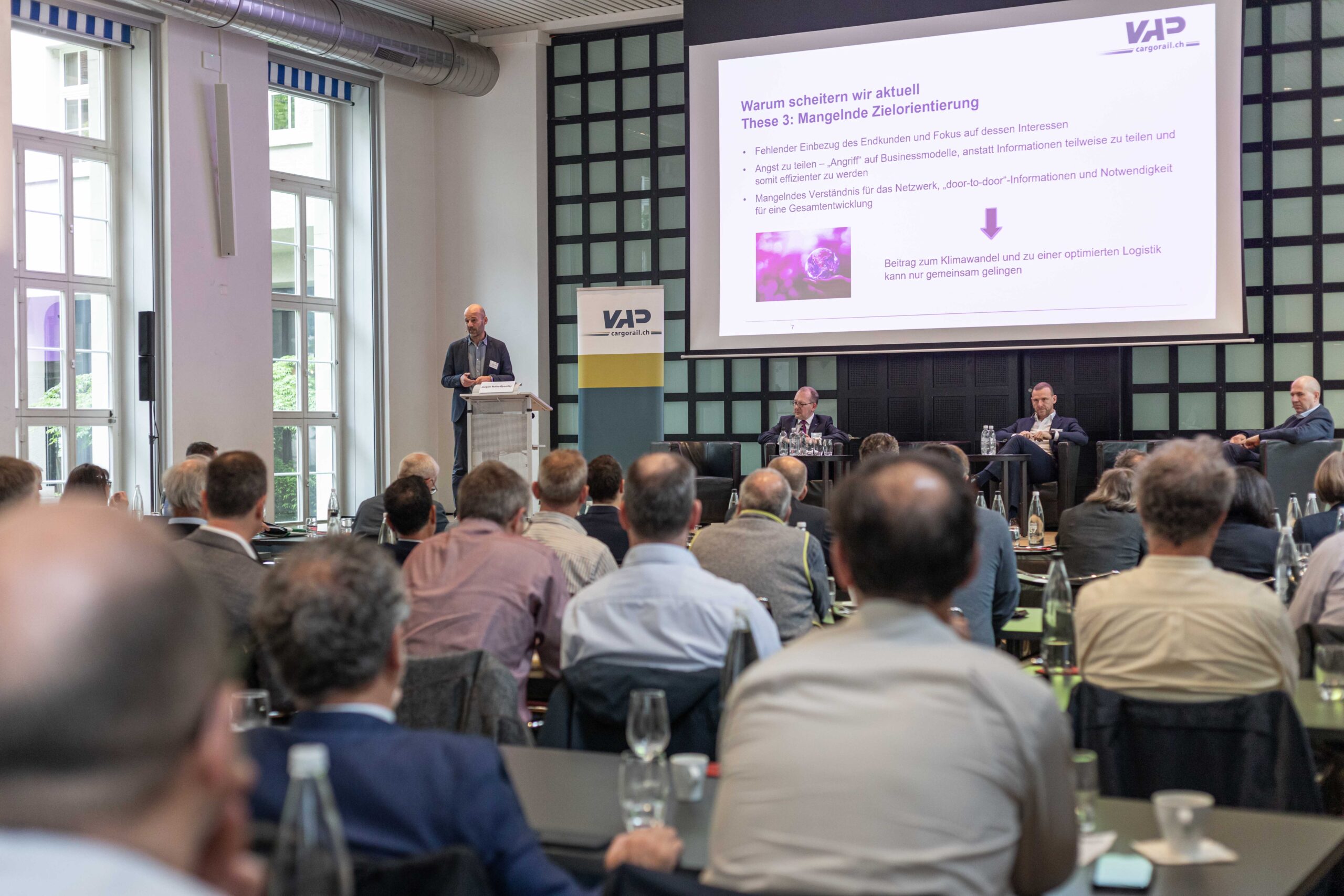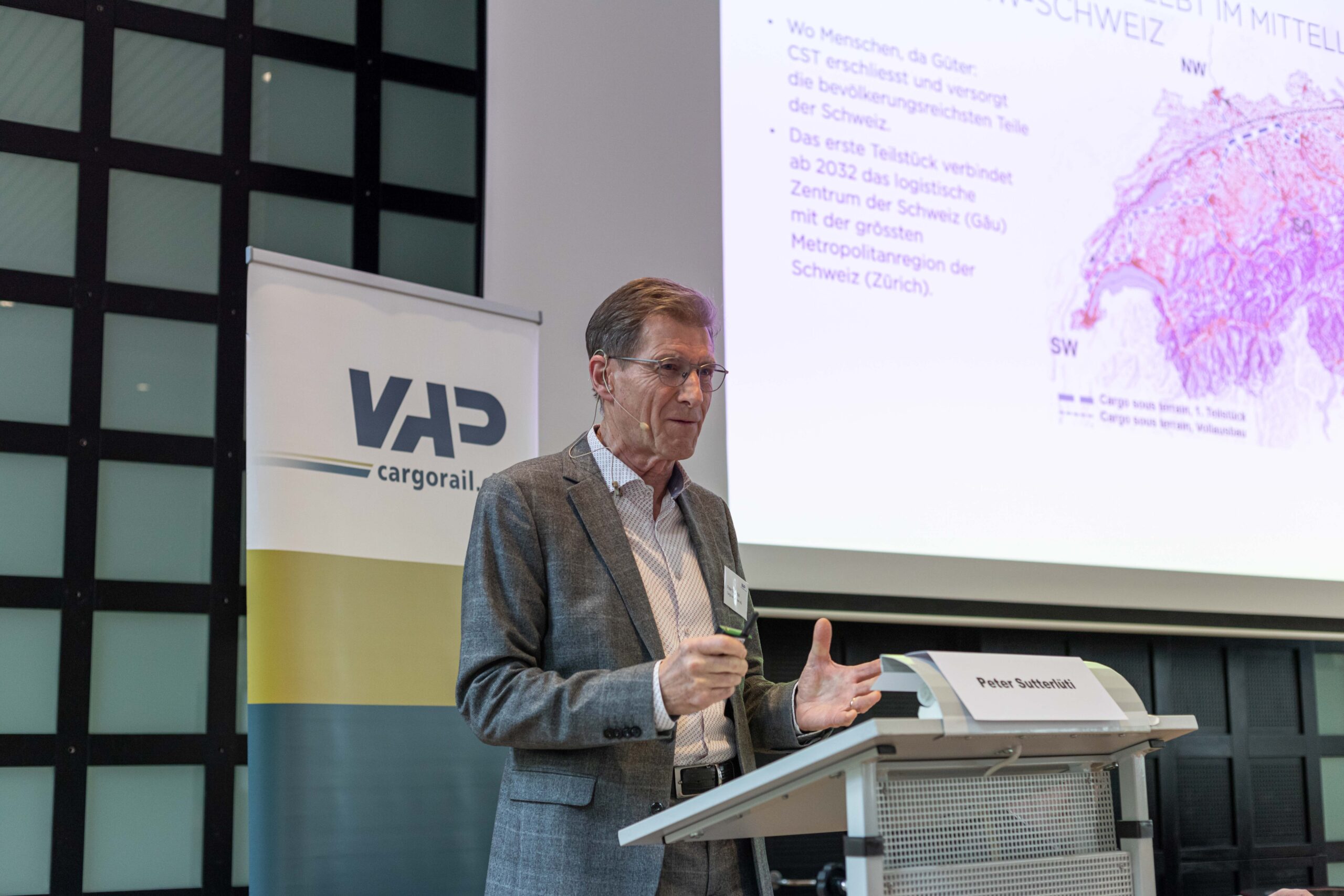OPERATIONS
We represent the freight stakeholders and in this chapter we focus on the use of infrastructure, i.e. transport. We advocate free operation on the last mile. In favour of fair competition, we want to use the strength of all modes of transport and combine them optimally. Because in this way, the route becomes shorter – and more economical – for each individual.
Actors in the field of operation
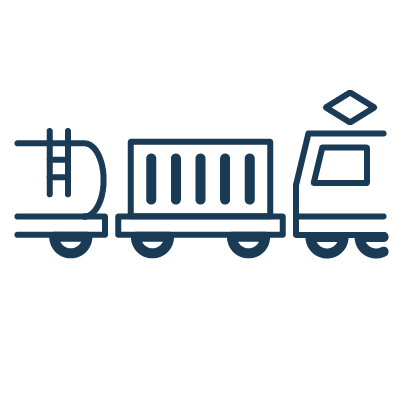
Freight railway undertakings
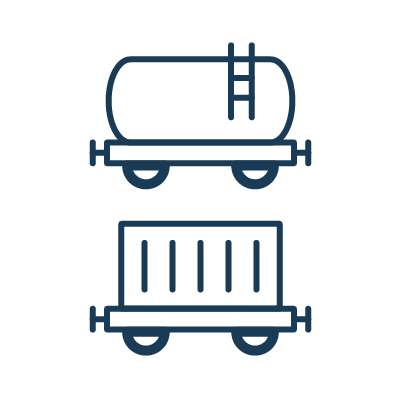
Manufacturer/holder of rolling stock (private wagon rental companies)
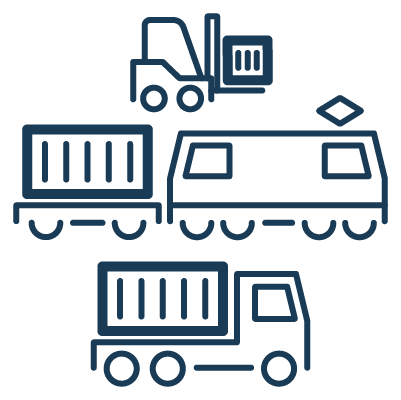
Operators
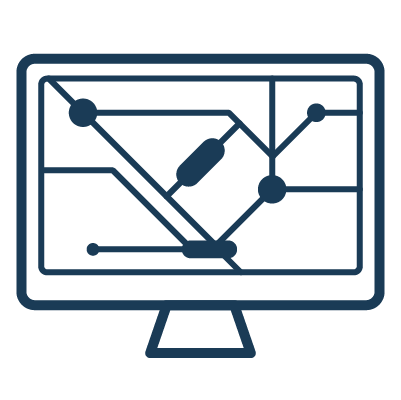
Timetables (Swiss capacity allocation body TVS)
Informative
The future of rail freight transport in the countryside
- Blog post «Zukunft Schienengüterverkehr in der Fläche»
- Position paper to the KVF‑N, 22.6.2022
- Report of the Federal Council on the future direction of surface rail freight, 31.3.2022
Emission limit values for noise
Freight transport by rail
- Freight transport by rail concept 2017
- Report on freight transport by rail 2017
- Hearing Cargo Forum Switzerland on the subject of freight transport by rail 2017
Driving service regulations
- Statement on the driving service regulations in the 2020 amendment cycle
- Driving service regulations from 1.7.2020
- Implementing provisions for the train service regulations, SBB regulations
Operating regulations for sidings
The responsibility for safe operation lies with the responsible company. The corresponding operating regulations must be drawn up by the siding operator.
The VAP provides auxiliary means to its members. We provide support with legal and administrative tasks. Contact us directly for clarification, advice or audit support.
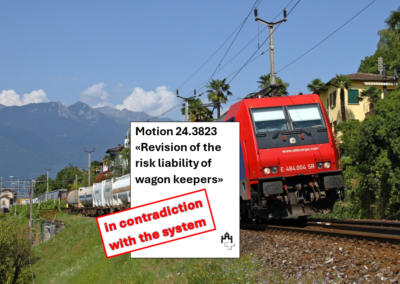
Do not unnecessarily jeopardise the well-functioning rail freight transport system
In August 2024, the National Council’s Transport and Telecommunications Committee submitted motion 24.3823 ‘Revision of the risk liability of owners of freight wagons’ by 13 votes to 8 with 4 abstentions. The motion aims to introduce strict liability and compulsory insurance for wagon keepers, including stipulating the amount of cover. The intention is to increase safety in rail freight transport. The National Council will discuss the motion on Tuesday, 10 December 2024.
This is the issue:
- The motion is in contradiction with the system
- The motion does not increase safety
- The motion torpedoes the modal shift policy
- The motion treats the same things unequally
The motion is contrary to the system
Under the current system, wagon keepers are responsible for the authorisation and maintenance of their wagons. In the event of damage, their fault is presumed if there are defects in the wagon and they are liable for the damage if they cannot prove that they have taken all the necessary safety precautions. The railway undertakings (RUs) are responsible for the operation and safety of the trains/wagons, while the wagon keepers have no influence on the safety checks when operating their wagons. Extending liability to wagon keepers would severely impair the efficiency and cost-effectiveness of rail freight transport and is therefore contrary to the system.
The motion does not increase safety
Every freight wagon is approved by the national safety authority before being put into operation – regardless of liability issues. In addition to this state approval, all freight wagons also undergo an externally certified, periodic and preventive maintenance process. For wagon keepers, the safety of their freight wagons is crucial for their reputation and an important investment and sales argument. Companies across Europe invest 1.7 to 2 billion euros in new freight wagons every year and are constantly working on safety improvements. A tightening of liability does not lead to a reduction in the risk of accidents, nor does it reduce the probability of accidents occurring and the extent of the damage they cause.
The motion torpedoes the modal shift policy
Stricter liability makes freight transport more expensive and more complicated, as the transfer of freight wagons between different areas of responsibility becomes more complex. As a result, fewer freight wagons could be used in Switzerland, as there is likely to be a lack of freight wagon capacity from abroad. This makes rail freight transport less attractive and torpedoes the modal shift policy. Switzerland going it alone would undermine the European regulations that have been developed and balanced over decades and lead to an isolated solution. In addition, Switzerland would jeopardise its important role in European freight transport, which would ultimately jeopardise security of supply.
The motion treats the same things unequally
Equal processes – towing vehicles by a towing vehicle – will be treated unequally if the motion is accepted. This occurs in the relationship between articulated lorries and goods trains, but also in the relationship between passenger and goods trains.
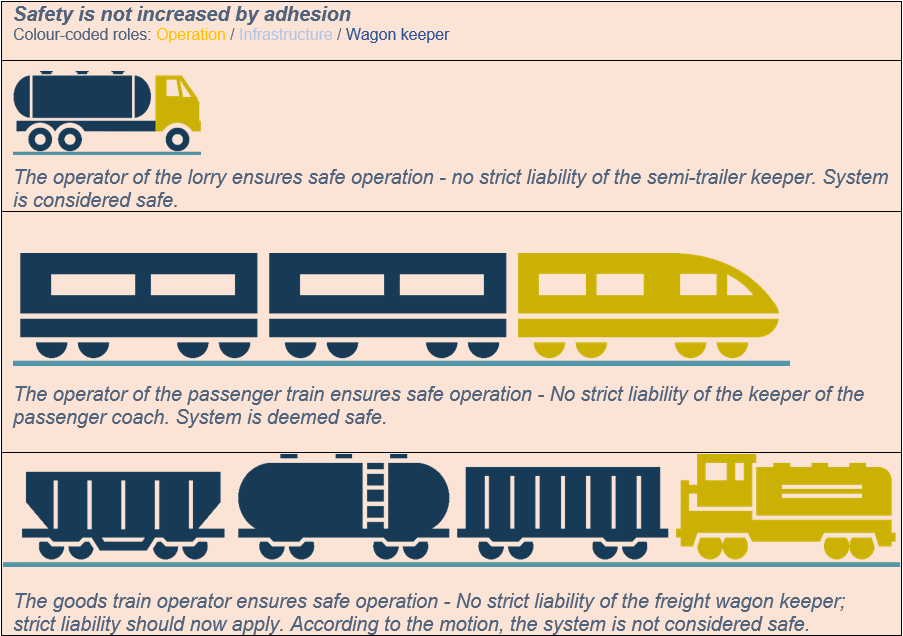
Motion 24.3823 ‘Revision of the risk liability of owners of freight wagons’ therefore fails to fulfil its actual intention. It only costs everyone involved a great deal and reduces the competitiveness of rail transport compared to road transport. The existing system already guarantees the safety of rail freight transport and offers the most efficient framework conditions for Switzerland’s modal shift policy.
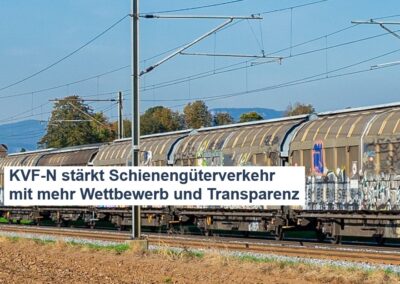
KVF‑N strengthens rail freight transport with more competition and transparency
The National Council’s Preliminary Consultation Committee (KVF‑N) is proposing that the Council approve the credits for the introduction of digital automatic coupling (DAK) and the temporary compensation for single wagonload transport (EWLV), including the ordering of freight transport, as part of its 24.017 business. It also makes some crucial clarifications to the legal text: Competition is to be promoted more intensively and cross-subsidisation between subsidised and self-subsidised services is to be prevented through the disclosure of key figures and financial flows in the annual reports of the rail freight companies. In addition, the KVF‑N wants to explicitly include inland waterway transport in the draft law in order to create more legal certainty.
On the other hand, the goal of increasing the share of rail freight transport added to the law is not very effective. This message should rather be directed at the market-dominating, state-owned SBB, which continues to drive traffic away from the railways with its current offer and pricing policy.This undermines the last of the customers’ trust in the efficiency and will of the state railway.In fact, the measures envisaged in the proposal are more effective than ambitious targets:Rail freight transport can gain market share through the planned digitalisation and the transformation from a 19th century system into the 21st century.
The increased promotion of competition between rail freight companies, in combination with the temporary compensation for EWLV, could soon lead to a broader range of services and growing market share for rail. In this respect, the more precise proposals of the KVF‑N are likely to be far more effective than non-binding modal shift targets, which are also contrary to the constitution.
Regrettably, the proposals for more transparency and competition in the construction and operation of transhipment facilities did not receive a majority.

«Modal shift requires determination from the top management team»
The Coop Group has committed itself to reducing CO2 emissions. Shifting transport to rail is a central component of this strategy. In an interview with VAP, Daniel Hintermann, Head of Logistics at the Coop Group, explains how the retail and wholesale group is achieving this and the challenges it faces.
VAP: Mr Hintermann, how did the Coop Group manage to shift two thirds of the transport between its distribution centres to rail?
Daniel Hintermann: It was a process that took several years. It was initiated in 2010 with the decision to buy a freight railway. At that time, we took over Railcare AG as a wholly owned subsidiary. We gradually integrated the small rail transport company into Coop’s logistics world. Today, Railcare is an integral part of our Group-wide transport chain. It enables us to further increase the proportion of rail transport.
How did the Coop Group come to have its own rail transport company?
In 2008, Coop developed its vision for CO2 neutrality and the centralisation strategy for logistics and production. We were looking for new approaches to transport logistics in order to achieve the goals we had set ourselves. We found what we were looking for with the Railcare concept at the time.
What proportion of rail transport are you aiming for?
We can imagine increasing the share of rail transport in Swiss delivery traffic – i.e. the outbound business – from 40% today to 50%. We see similar potential for inbound traffic from Europe and Switzerland. To achieve these goals, we are facing a challenging relocation process lasting several years.
What advice would you give to other companies that want to shift transport from road to rail?
In my opinion, the top management team needs to be determined to actively shift transport. This requires a high degree of standardisation in the equipment and close process networking between the shipper and the railway.
How does the Coop Group co-operate with the VAP?
Coop has been a member of the VAP for many years. We have repeatedly been able to count on the professional support of the VAP, particularly for contracts, project support or technical recommendations on the subject of sidings.
What strengths do you attribute to the VAP?
The VAP is particularly strong when it comes to knowledge about sensible contracts and applicable regulations. We appreciate the fact that the people in charge are available at any time and in an uncomplicated manner, take a pragmatic approach and offer practical and realisable solutions.
How would you describe the VAP?
As a central knowledge platform for all aspects of rail freight transport for the Coop Group as a shipper.
Who would you recommend working with the VAP?
All shippers who transport goods by rail or want to do so in the future.
Where do you see the most urgent need for action in rail freight transport?
Digitalisation across the entire transport chain. There is also an urgent need for automation on the last mile and in shunting traffic.
What would you like to see for the future of rail freight transport in Switzerland?
I would like to see rail freight transport become sustainably competitive. To achieve this, it must make sufficient train paths available to the rail freight companies. Finally, I would like to see more dynamism in process changes, for example when it comes to changing transport flows.
What has not yet been said?
We are seeing a trend towards over-regulation and technocracy in rail freight transport. This makes rail freight transport neither safer nor more competitive. The players involved should join forces to counteract this development.
Thank you, Mr Hintermann, for the informative interview.

Daniel Hintermann has been Head of Logistics and a member of the Coop Group’s Executive Board since 2017. His long career at Coop began in 2001 at Interdiscount, and in 2010 he became Head of Logistics Region Northwestern Switzerland. The licensed business economist gained his first professional experience in management consultancy.
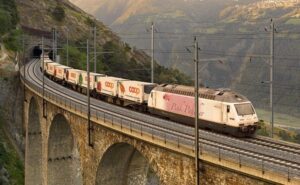
The Coop Group is the largest retail and wholesale company in Switzerland. It employs 94,790 people – including 3,417 apprentices – and operates 2,633 sales outlets/markets in Switzerland and Europe. One pillar is the retail trade with the Coop supermarkets and numerous specialised formats in Switzerland, the second is international wholesale and production.
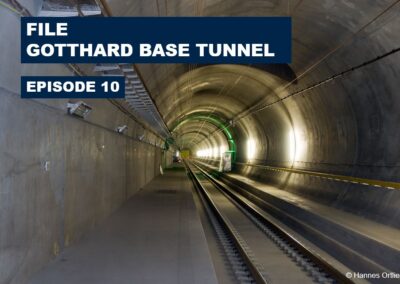
Gotthard Base Tunnel (#10): Europe presents the final report
In mid-July 2024, the Joint Network Secretariat (JNS) of the European Union Agency for Railways (ERA) published its final report on the accident in the Gotthard Base Tunnel on 10 August 2023. This contains an extended scope of application, an increased operational utilisation limit, stricter specifications for risk control measures and the recommendation of the sound test for prevention.
That’s what it’s all about:
- JNS Task Force publishes final report and impact assessment
- 4 key points for all stakeholders involved: extended scope of application, higher utilisation limit, full implementation of risk control measures, sound test for prevention
- Adapt Annexes 9 and 10 of the General Contract of Use for Wagons
- Prevent misunderstandings in the interpretation of the legal texts
- International follow-up works well
The work of the JNS aims to harmonise all measures taken following an accident or disruption to rail traffic in the EU across the EU (see blog post «Gotthard Base Tunnel (#7): Sust report provides clarity»). The committee is made up of representatives from ERA, the national supervisory authority (NSA) and the Group of Representative Bodies (GRB) representing the international railway associations. The ERA has also published the short analysis «Light Impact Assessment» as a follow-up assessment to the accident in the Gotthard Base Tunnel, focussing on the issue of ‘broken wheels’.
JNS final report contains existing and new measures
The discussions between the JNS and the industry were co-operative. They led to a number of compromises in order to avoid individual national measures announced by several NSAs. Special national regulations jeopardise interoperability and the modal shift envisaged by the EU and Switzerland.
The findings of the final report are based on the recommendations of the JNS ‘Broken Wheels’ process (2017- 2019) and its final report from 2019. Changes compared to the previous report are highlighted in yellow. The supplemented and improved risk control measures completely replace those of the JNS procedure for wheel types BA 004 (‘Crack in the rim’, 2017–2019). The measures for a ‘crack in the wheel disc’ (wheel types BA 314 old/ZDB29) remain valid.
4 Key points for all stakeholders involved
The following aspects are particularly relevant for freight wagon keepers and Entity in Charge of Maintenance (ECM):
- Extended scope of application: The scope of application of the risk control measures has been extended. The list of affected wheel types now includes: BA 004 (also used in some versions of the wheelset type VRY), Db-004sa, BA 390, RI 025, R32, BA 304 and ‘other comparable wheel types that were not part of the JNS assessment’.
- Higher utilisation limit: The operational utilisation limit (see box) for the wheel types concerned has increased from a diameter of 860 mm to 864 mm.
- Full implementation of risk control measures: For all newly affected wheel types, all actors involved must either fully implement the JNS risk control measures or take alternative measures that ensure at least an equivalent level of safety and are justified by a risk analysis in accordance with Annex 1 of EU Regulation 402/2013 (CSM RA).
- Sound test for prevention: The JNS final report lists the sound test as a simple preventive measure to reduce risks. We are of the opinion that railway undertakings should not dispense with the sound test in the event of suspected overheating of the wheelset and/or cracks on the running surface or wheel rim as part of the pre-departure wagon inspection. They should include them in their pre-departure inspection process if they have not already done so.
|
Operational utilisation limit The wheel diameter is not measured before departure or during train preparation. The operational utilisation limit is defined after maintenance. According to the ECM regulation, ECMs must define the appropriate and safe maintenance limit for wheels in order to prevent a wheel of the type concerned from being used below the operational limit of 864 mm during operation. From discussions in the JNS Task Force, the general maintenance limit has been increased from the previous 876 mm to 880 mm after wheelset profiling. Should an ECM decide to allow the use of a wheel with a maintenance limit below 880 mm after profiling, it must prove that this lower maintenance limit (1) guarantees at least the same level of safety, (2) is justified by a risk analysis in accordance with Annex 1 of EU Regulation 402/2013 (CSM RA) and (3) the risk analysis has been reviewed and approved by an independent assessment body, as an installation limit below 880 mm is considered a ‘significant change’. |
Adapt Appendices 9 and 10 of the General Contract of Use for Wagons
The JNS has submitted a recommendation to the Union Internationale des Chemins de fer (UIC), the European Rail Freight Association (ERFA) and the International Union of Wagon Keepers (UIP) as the responsible publishers of the General Contract of Use for Wagons (GCU): The committees should examine the addition of Appendices 9 and 10 to the GCU in order to regulate the detection of thermally overheated wheels even more systematically and uniformly in future.
The debate in the JNS has shown that both the national supervisory authorities of some (EU member) states and railway undertakings are finding it difficult to integrate ECMs into their activities. The JNS therefore recommends that the industry organisations hold clarifying discussions between the Member States and the European Commission and publish guidelines for rail transport companies.
Prevent misunderstandings in the interpretation of legal texts
Together with the UIP, we at the VAP will revisit the role and responsibility of the ECM in the context of the infrastructure manager/rail transport company/wagon keeper responsibility triangle. In doing so, we would like to prevent future misunderstandings about the interpretation of the legal texts among infrastructure managers and railway undertakings as the main players in accordance with the EU Safety Directive and thus also among NSAs. The current discussion in the Swiss parliament on liability in rail freight transport is evidence of the different interpretations of the internationally standardised rail freight transport regulations by various national authorities, European bodies and certain parts of the rail sector.We therefore consider the fact that the JNS has issued the aforementioned recommendation to the industry organisations to be a success of our educational work to date.
International follow-up works well
The final report of the JNS Task Force shows that the harmonised procedures for incidents and occurrences in the rail sector work extremely well at European level.
On the one hand, they allow a broad exchange of experience and, on the other, concrete improvement measures that are supported by the entire industry and all member states.
We will inform you as soon as the final report of the Swiss Safety Investigation Board Sust on the incident in question is available.
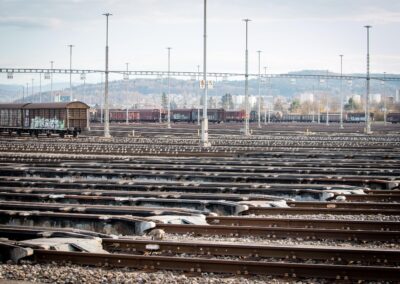
«MODERATE» ADJUSTMENT OF THE TRACK ACCESS CHARGE: A FATAL BURDEN FOR RAIL FREIGHT TRANSPORT
The Federal Office of Transport (FOT) has announced that it will increase the train path price for rail transport by 2.1 per cent from the beginning of 2025. This measure is aimed at meeting the legal requirements for cost recovery, but carries the risk of placing a considerable burden on rail freight transport and jeopardising the modal shift to rail.
That’s the point:
- Track access charge increase unacceptable
- Economic crisis, rising energy prices, global downturn make rail freight transport more expensive
- What we can do for the shift to rail transport
Our opinion on this is clear: we reject an increase in track access charges for freight transport. With an increase of 2.1%, it is also extremely misleading to describe the adjustment as “moderate”, as it could lead to fatal and irreversible consequences. Against the background of traffic losses in domestic, import, export and transit traffic as well as the significantly more favourable track access charges in Europe, a price increase is unacceptable.
Economic background and challenges
The European economy is currently struggling with a profound crisis, which is being exacerbated by the ongoing conflict in Ukraine, rising energy prices and the global economic downturn, particularly in China. These factors are leading to a decline in the exchange of goods and are having a significant impact on the transport sector.
Since mid-2022, we have seen a continuous decline in rail freight transport volumes in Europe. The average 10% increase in the cost of rail traction is driving many companies to shift more of their freight to the road. The umbrella organisation of combined transport providers UIRR reports a decline in rail freight transport of around 15% for 2023, while road transport has only fallen slightly.
Cost increases and their toxic effect
In this difficult environment, the planned price increases for energy and the wear factor are having a disproportionate impact on freight transport. The wear factor will be increased by 9% from 0.33 to 0.36 CHF/BTkm, and a decision on how energy costs will rise will be made in July.
The reason given for the increase in the basic wear and tear price is the rise in weight-dependent marginal costs, although the calculation of these costs is not transparent and is based on the infrastructure expansion standards for passenger transport. This price component, intended as an incentive for the procurement of rolling stock that is gentle on the track, does not accelerate the replacement of railway carriages with their long service life of 2–3 decades. The incentive is too low to cover the additional costs for low-wear rolling stock, which significantly increases the costs for rail freight transport and reduces its competitiveness.
Conclusion
Although a 2.1% increase in the track access charge is intended to meet the legal requirements for cost recovery, it will lead to considerable additional costs for freight transport. This measure could undermine efforts to shift traffic to the railways and further exacerbate the economic burden in an already challenging environment. It would be desirable for rail freight transport, which suffers from the high expansion standards of passenger transport in the mixed operation of passenger and freight transport, to be fundamentally relieved. This is the only way to make rail freight transport competitive and successfully drive forward the mobility transition.
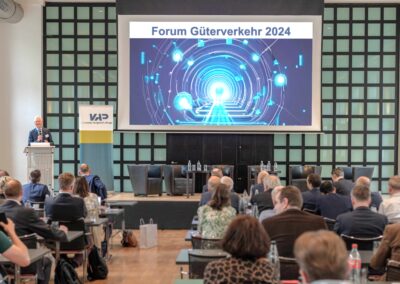
Wagonload transport can become competitive
Forum Freight Transport, 7 May 2024. Nationwide wagonload transport has a very high market share in domestic transport throughout Europe. In export and import transport, on the other hand, it is declining despite long distances. This is due to market compartmentalisation and outdated production structures. Exclusively state railways, exclusively on their home market is the motto. Wagonload transport is seen as system transport. Cooperation in networks, as is common and successfully applied on the roads, is not envisaged on the railway.
However, it is possible to transform wagonload transport into an automated, digitally networked and internationally open railway system. The states are offering the railway sector political and financial support for this.
That’s the point:
- Leading minds from the European transport and logistics industry in Zurich at the Freight Transport Forum
- Morning with an overview of the current legal framework
- Afternoon topic: Transformation of rail freight transport
- Focus on shaping a sustainable freight transport landscape
On 7 May 2024, leading figures from the European transport and logistics industry gathered at the Freight Transport Forum in Zurich to discuss the future of rail freight transport.
In his welcoming address, Frank Furrer, Secretary General of the VAP Association of the Logistics Industry, looked back on the previous forums from 2018 to 2024, at which an ongoing discussion was held on the development of freight transport. The focus was on topics such as multimodality, safety, innovation and digitalisation. He particularly emphasised the role of transport policy as a driver of change. In 2024, the focus will now be on new framework conditions for sustainable freight transport, in particular the transformation of rail freight transport. Frank Furrer emphasised the importance of favourable framework conditions for competition in order to enable multimodality, innovation and environmental protection. He cited the partnership between politics and business, cooperation between rail freight operators, logistics providers and shippers as well as the principle of subsidiarity as fundamental principles. The current bill to modernise rail freight transport was discussed in parliament. The VAP supports measures such as the introduction of digital automatic coupling (DAK) and bridging funding for single wagonload transport (EWLV) under certain conditions.
Dr Peter Füglistaler, Director of the Federal Office of Transport (FOT), gave an overview of the current legal framework and challenges in Swiss freight transport. For him, the temporary financial support for wagonload transport is a last attempt to save inland freight transport by rail. The DAK is the necessary means to achieve this, and with a subsidy of 30% to the owners, it is a good offer. Peter Westenberger, Managing Director of Die Güterbahnen in Deutschland, presented the digital railway and the VDV charter from a German perspective. He called for financial support for wagonload transport exclusively via the service routes, i.e. the reactivation or increase in volume at as many service points as possible. It is very difficult for competitors, as the data situation is extremely opaque. Claudia Nemeth from the Federal Ministry for Climate Protection, Environment, Energy, Mobility, Innovation and Technology (BMK) in Austria explained the instruments and strategies of Austrian transport policy with regard to rail freight transport and compared the per capita investments in Switzerland, Germany and Austria. Austria is committed to actively monitoring the measures of the Freight Transport Masterplan 2030 and recently presented the first monitoring report in this regard. One of these measures is the establishment of a modal shift coach at the end of 2023, who advises companies and municipalities on the modal shift to rail. Together with German Transport Minister Wissmann and Federal Councillor Rösti, Austrian Minister Leonore Gewessler supports the rapid introduction of the DAK. Ueli Maurer, Head of Intermodal Network at Bertschi AG, provided valuable feedback from a business perspective. Waiting for the DAK is impossible in view of the progress made on the road; it must be implemented immediately. The current construction sites, which are still completely inadequately coordinated internationally, as well as energy and track prices are currently fundamentally threatening the marketability of rail freight transport. He also called on infrastructure managers to pass on the savings from complete closures to rail freight transport as compensation for their additional costs.
In the panel discussion that followed, Westenberger spoke about the current chaotic construction site situation and the associated additional costs and called for an improvement in the quality of rail freight transport. Nemeth agreed, but was optimistic about the future of rail freight transport and compared the current challenges to a small child learning to walk: there are setbacks, but it gets better. Füglistaler emphasised that there is no alternative to the corridor renovations and stressed the need for investment in infrastructure. Dr Jens Engelmann, who moderated the panel discussion, raised the issue of the effectiveness of funding measures and discussed the various approaches to supporting rail freight transport. Füglistaler and Nemeth defended the role of the state railways for single wagonload transport. Engelmann concluded the discussion by saying that rail makes an important contribution to sustainability and must continue to be promoted, but that challenges such as capacity bottlenecks and the costs of technological innovations must also be overcome.
After a short break, the event focussed on the transformation of rail freight transport in the future. Gilles Peterhans, Secretary General of the International Union of Wagon Keepers (UIP), shed light on the current status of digital automatic coupling (DAK). He emphasised the difference between technical retrofitting and the associated transformation of archaic rail freight transport. The latter is to be seriously reorganised to make it competitive and transformed into a completely new rail system. Gregor Ochsenbein, Deputy Head of the Data for an Efficient Mobility System programme at the FOT and Jürgen Maier-Gyomlay, Head of the Logistics Working Group / IG WLV at the VAP, highlighted the importance of data ecosystems for efficient logistics. Peter Sutterlüti, CEO of Cargo sous terrain AG, presented the Cargo Sous Terrain (CST) concept. The purely privately financed logistics solution is available exclusively for general cargo. The interplay of underground main leg and overground fine distribution has the potential to significantly complement rail and road transport. Stefan Kirch, Co-Founder and Member of the Management Board at NEVOMO, presented the potential of maglev technology for a more effective and higher-capacity freight transport solution. In particular, autonomous driving of freight wagons in large-scale sidings with a large number of loading and unloading stations as well as consolidation points for dispatch and receipt offer exceptional potential for savings.
The event culminated in another panel discussion, which focussed on the future of logistics in 2035. In addition to the voluntary nature of data disclosure, the challenges of digital transformation, particularly in terms of costs and collaboration with various stakeholders, were also discussed. In conclusion, it was emphasised that we should be open to innovative solutions and not let problems hold us back. Frank Furrer summarised the event with a statement that was as confident as it was challenging: Anything is possible, as long as all industry players join forces and close ranks to move forward pragmatically and with a willingness to compromise.
It was a day full of exciting encounters, informative presentations, stimulating discussions and a clear focus on shaping a sustainable freight transport landscape. The participants left the conference with new insights and impulses for the further development of the industry.
We are already looking forward to the Freight Transport Forum 2025!
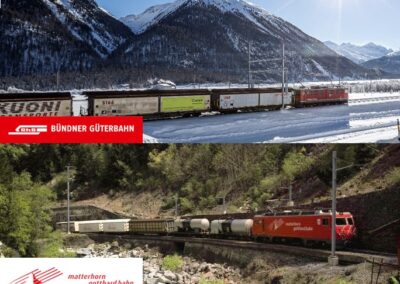
The future belongs to combined transport
What future do freight railways have in Switzerland? The VAP discusses these and other questions in a double interview with Peter Knaus, Head of Graubünden Freight Railway at the Rhaetian Railway (RhB), and Peter Luginbühl, Head of Operations at the Matterhorn-Gotthard Railway (MGBahn). In the debate, the experts talk about in-house operation and outsourcing, economic viability, innovation, competition and making rail freight transport more flexible.
Mr Luginbühl, rail freight logistics is outsourced on the Matterhorn-Gotthard Railway. Why is that?
Peter Luginbühl: As a company that operates primarily in the tourism sector, our main focus is on passenger mobility. Freight transport accounts for around 2% of the overall result in the public service sector. In 2011, the decision was made to concentrate on rail transport for freight transport. We have placed the upstream and downstream interfaces with the customer under the responsibility of Alpin Cargo AG as the overall logistics service provider. This allows us both to concentrate on our core competences: We are responsible for transport by rail, Alpin Cargo for the interface to the customer, i.e. also for the last mile. In Zermatt, for example, fine distribution is carried out using electric vehicles and horse-drawn carriages.

Peter Luginbühl, Head of Operations Matterhorn-Gotthard Railway
To what extent is this outsourcing an advantage?
Peter Luginbühl: This operator model has proved its worth for our starting position with a limited size and a fairly manageable contribution of freight transport to the overall result. It is also ideal from the freight customers’ point of view.
Would you outsource again?
Peter Luginbühl: Yes. Our operator model works very well. Nevertheless, we question it every five years and carry out a site assessment. We are only about a quarter of the size of the RhB’s Graubünden freight railway. So it doesn’t make sense to run it ourselves.
Mr Knaus, you operate rail freight transport yourself. What does this in-house operation look like?
Peter Knaus: We have orders from the canton of Graubünden to provide the public service, among other things. In the past, transport companies were literally forced onto the railway. Things are different today. We use the railway for what makes economic sense. This creates a win-win situation for us and our customers. For short distances or the last mile, we work together with road haulage companies. We regularly exchange information with these business partners at our annual transport platform and through personal contact.
What disadvantages do you see with your model?
Peter Knaus: An enormous amount of effort for our own rolling stock. Here’s an example: our entire fleet of around 320 carriages is equipped with vacuum brakes. Now, for strategic reasons, RhB has decided to switch all carriages to air brakes by 2040. According to our 2023–2030 strategy, we will modernise half of the fleet and renew the other half, as this is the more economical option.
What key criteria do you use to select the mode of transport?
Peter Luginbühl: We are convinced that although rail is ideal for all goods, it is not equally suitable for all of them. We currently transport around 40 to 50% of goods between Visp and Zermatt by rail. Rail’s strengths over road lie in its large capacities, high availability and reliability. We can guarantee the exact arrival time in Zermatt 99% of the time. With every mode of transport, you have to weigh up which is the best economic and ecological modal split.
Peter Knaus: Lorries are also becoming increasingly ecological. This in turn means that the roads will continue to be well frequented. The canton is happy for every lorry that gets off the road so that there is less congestion in private transport.
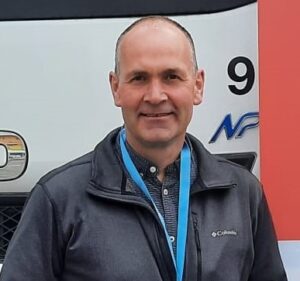
Peter Knaus, Head of Freight Transport at Bündner Güterbahn
Which products are more suitable for rail transport, and which still have potential?
Peter Knaus: Long-distance goods that depend on punctuality and reliability, such as foodstuffs. Likewise letter and parcel post and general cargo that needs to be delivered on time. Scheduled freight, which we transport from 4.00 am. Rubbish and recycling material must be transported within 24 hours. Building materials such as cement or salt are also very suitable for rail freight transport. We also transport an extremely large amount of round timber, around 95%, to Tirano. We are predestined for this, as customs clearance is also more economical than with a lorry. We transport most goods in combined transport, except for logs and general cargo. Combined transport has great potential for the future. I see potential for pellet transport in our area.
Peter Luginbühl: We have a very similar product focus to RhB. But we don’t transport wood. We also transport large quantities of heating oil. We also transport a lot of luggage for the tourist destination of Zermatt. Over the last few decades, consignments have become smaller, not least due to the mail order business.
Reliability and punctuality: what do you think?
Peter Luginbühl: As a small railway, we can guarantee stability and punctuality extremely well. 95% or more of our customers are extremely satisfied with our reliability. The situation is very different in the European or Swiss-wide freight railway system. Punctuality is a huge problem here. The industry still needs to improve a lot and become a more reliable partner.
Peter Knaus: I agree with that. We are extremely punctual, especially when it comes to food transport or scheduled freight. When we work with the big players, it becomes more challenging to meet the desired deadlines. For the WEF transport project, for example, we were reliant on suppliers from the standard gauge. If they don’t arrive on time in Landquart, we can’t deliver the containers to Davos on time either. This poses a major problem for our customers, as time slots allocated at the WEF have to be adhered to.
What developments do you recognise in production?
Peter Luginbühl: At the moment we still have mixed production, whereby we mainly work with block trains. We are increasingly moving away from attaching freight wagons to passenger trains. For one thing, the new multiple-unit trains and the capacities of our track systems no longer meet these requirements. We are also losing the logistics space for transhipment. We will increasingly concentrate on block goods trains.
Peter Knaus: We run 52 freight-only trains a day on the main network. The new trains with automatic coupling are only designed to move themselves. The sheer number of goods trains means that we retain a certain degree of flexibility. We have fixed annual timetables for scheduled freight, everything is planned through. We only run mixed services towards Arosa and Bernina, as there are not enough train paths for pure goods trains.
Speaking of train paths: What challenges do you face here?
Peter Knaus: During the day, regional passenger transport sets the pace for us. We have to adapt to this. We also have to adapt to prestige trains such as the Glacier and Bernina Express. Our most flexible time slots are from 4.00 am to 6.30 am. From 9.00 p.m. there is mainly construction work going on, so we can only operate to a very limited extent. The RhB and the canton support us well in the track issue and involve the various interest groups.
Peter Luginbühl: I see four challenges with the railway lines. Firstly, economic efficiency. Our desired train paths are often occupied by tourist trains, which are more economical. Secondly, economic viability. We have enormous investments and major financing issues. We make an important contribution to the security of supply in our region. Thirdly, flexibility through speed. We cannot react as quickly to changes in supply as a transport company can. Fourthly, innovative strength. We still produce in the same way as we did 30 years ago. I am curious to see whether we will actually be able to transform through digitalisation.
What best practice cases are there that you and others can learn from?
Peter Luginbühl: I see fine distribution over the last mile as a successful model. Our partner does it in such a way that more and more customers come, precisely because he is so flexible. And finally, I consider the disposal of rubbish to be an exciting business model from an ecological and economic point of view.
Peter Knaus: In my opinion, a good example is the conversion of beverage transport. The Valser company has been transporting its beverages from Vals via Ilanz to Untervaz for over 40 years. The early morning transhipment at the ramp in Ilanz caused a lot of noise emissions. This gave rise to the idea of using swap bodies for transshipment. Together with the parent company Coca-Cola and the canton, we procured suitable swap bodies. These have proved very successful. In the foreseeable future, we will even be transporting them using electric lorries with trailers. In dialogue with the canton and the police, we have obtained a special permit for trailers for the Schnaus-Ilanz route. . The only sticking point at the moment is the HVF reimbursement in combined road-rail transport. This refund is still linked to the LSVA. In future, it must be linked to combined transport. The legal framework still needs to change.
Which innovations will prove their worth in rail freight transport in the coming years?
Peter Knaus: I consider power packs, i.e. batteries that are mounted on the freight wagons, to be a sustainable solution. These can be used as an energy supplier for refrigerated containers, but also for construction work in the tunnels. We have even equipped sliding wall wagons with modern Powerpacks. We have also made great progress in the area of freight wagon tracking. We now know where the freight wagons are, how fast they are travelling, what their battery levels are, what the temperatures are in the refrigerated containers, etc. We can utilise this data in a digital scheduling system. We have also already thought about an Uber system for general cargo. That would be very innovative, but the sticking point here is the production costs and suitable partners.
Peter Luginbühl: Rail freight transport will still be around in 30 to 50 years’ time. To achieve this, we need to move away from the current rigid systems. Starting with the wagon superstructures, through rigid logistics processes in freight handling or wagon management, to wagon flexibility. There is potential everywhere to meet future requirements with innovations.
What does it take for such innovations to be realised?
Peter Knaus: I am a member of the FOT expert committee for technical innovations. The federal government is very open here and supports innovations that bring long-term benefits. The canton of Graubünden is also very open to innovations and supports them to the best of its ability if they bring economic and ecological benefits.
Peter Luginbühl: In regional passenger transport, it took pressure from a private economic player like Google to get things moving. That would probably be good for us too. It would be exciting if a market third party were to build up pressure.
What do you think about Europe-wide integrated data platforms?
Peter Knaus: An exciting starting point for the players in freight transport, and not just on the railways. The development of this is challenging, and I’m not sure whether everyone would make their data available. Currently, our customers can use tracking to see where the loading equipment is currently located. This allows a mineral oil transport customer, for example, to organise their and our scheduling more efficiently. I would welcome greater consistency with our customers, especially when it comes to timber loading.
Peter Luginbühl: We would have to equip the wagons with tracking devices. Only then could we take further steps towards data exchange, including across modes of transport. We at MGBahn are less concerned about this because we have a local focus.
Where do you see the greatest levers for advancing rail freight transport?
Peter Luginbühl: In making the rail freight system more flexible. We will never be as flexible as road transport. But we must be able to react more quickly to customer needs and play to the strengths of the railways. The potential for rail transport is huge. The pressure to shift transport to rail will come of its own accord.
Peter Knaus: You certainly have to differentiate between metre gauge and standard gauge. We have a manageable network with metre-gauge tracks. Compared to the SBB, we can react very quickly. A planned changeover of two weeks is quick compared to SBB – and slow compared to a road transport company. The latter switches within days. The more money we have, the faster we can invest in traction units and freight wagons or modernise the fleet and the more flexibly we can react to the wishes of our customers.
To what extent would more competition among the rail freight companies change the dynamics of the rail freight market?
Peter Luginbühl: More competition, more dynamism. However, the entry threshold for new players in our market is very high. If you want to operate a freight railway, you need a compliant traction unit and expensive rolling stock. That’s a different matter from buying a lorry for a few hundred thousand francs. Examples such as Railcare or Swiss Post show that competition leads to innovation and price pressure.
Peter Knaus: Competition is good and encourages development. Those responsible at Railcare have a very good transport logistics concept, they combine road and rail with their own fleet. Competitor companies on the railway are also dependent on free train paths. They cannot simply set off when they are fully loaded. In terms of price, small rail freight operators have the advantage that they have to factor in lower overheads.
What do you think of the VAP and what would you recommend to our association?
Peter Knaus: I have always had good contact with Secretary General Frank Furrer. I was in charge of the transport logistics project at the regional parcel centre in Untervaz. I worked very closely with the VAP. He was an independent and very valuable project member. I find the dialogue with Frank Furrer, Jürg Lütscher and other VAP representatives, who bring in a shipper’s perspective, constructive and exciting.
Peter Luginbühl: I didn’t know that this association existed until recently. My recommendation would be for you to make your association better known among freight transport companies. I think it’s great what the VAP is doing.
What hasn’t been said yet?
Peter Luginbühl: This discussion has given me valuable ideas, thank you for that.
Peter Knaus: Thank you for inviting us to this interview and giving us the opportunity to present ourselves.
|
About Peter Knaus and the Graubünden freight railway Peter Knaus is Head of Freight Transport at the Graubünden Freight Railway of the Rhaetian Railway (RhB). He also represents the narrow-gauge railways on the Freight Transport Commission (KGV) of the Swiss Association of Public Transport (VöV) and is a member of the Rail Freight Transport Advisory Group of the Federal Office of Transport (BAV). Under the umbrella of RhB, the Graubünden Freight Railway offers a wide range of transport solutions for companies and private individuals in Graubünden. With its diverse fleet of wagons – including container wagons, sliding wall wagons and tank wagons – it transports goods of all kinds. The service points cover the whole of Graubünden and include important industrial centres, logistics centres and agricultural businesses. As a result, the Graubünden freight railway guarantees a comprehensive supply of goods throughout the region and is an indispensable part of the regional logistics infrastructure. |
|
About Peter Luginbühl and the Matterhorn-Gotthard Railway Peter Luginbühl has been Head of Operations at the Matterhorn-Gotthard Railway since 2017. The qualified controller previously worked for several years as Head of Corporate Development HR at SBB. The Matterhorn-Gotthard Railway operates its freight transport with Alpin Cargo AG, a subsidiary of the Planzer Group. It offers a wide range of services for local businesses. These include goods handling, warehouse logistics and transport by both rail and road. The supply of mineral oil is another important service. Alpin Cargo not only serves companies on the last mile, but also private individuals. They can use its services for removals, the storage of household goods and home deliveries with assembly and e‑transport. |
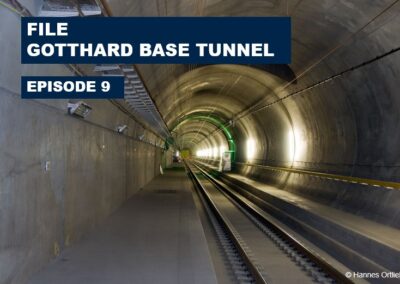
Gotthard Base Tunnel (#9): Avoid shifting traffic back to the road
The freight train derailment on 10 August 2023 caused serious damage to the Gotthard Base Tunnel. SBB therefore intends to massively reduce the capacity of sustainable rail freight transport in favour of leisure traffic at weekends with the timetable change on 10 December 2023. This could lead to a shift of up to 15% of rail freight back onto the road.
This is the issue:
- New timetable concept cancels rail freight train paths
- Statutory modal shift target jeopardised
- Alternative for passenger transport available
- NEAT gradually misused for other purposes
- No dialogue at eye level
- Avoiding a shift back to road transport together
New train path concept cancels rail freight train paths
According to the media update of 2 November 2023, SBB assumes that the Gotthard Base Tunnel will not be fully operable for passenger and freight trains again until September 2024. The repair work is likely to take far longer than originally expected. SBB officials have announced that with the December timetable change, significantly more and faster passenger trains will be travelling through the Gotthard Base Tunnel at weekends. Among other things, they are cancelling a time slot for rail freight traffic from 7.30 to 9.00 a.m. on Friday mornings and allocating it to passenger traffic.
Statutory modal shift target jeopardised
The unauthorised train path concept has serious consequences for the national modal split. One of our members assumes that 10% to 15% of combined freight transport consignments will be shifted back to the roads and that supplies to Ticino can no longer be fully guaranteed at weekends. Construction work can also not be carried out in the aforementioned time window.
This development contradicts Switzerland’s policy for modal shift. According to this policy, the Federal Council wants to shift transalpine freight transport from road to rail. The statutory target of 650,000 lorry journeys was already clearly missed in 2022: 880,000 lorries were still travelling through the Swiss Alps.
Alternative for passenger transport available
For representatives of the shipping industry, SBB’s new train path concept is all the more absurd as there is a sensible alternative for passenger transport: from an ecological perspective in particular, leisure travellers should use the mountain route at weekends and leave the Gotthard Base Tunnel to the freight trains. After all, due to their heavy loads, they consume much more electricity over the mountain route than passenger trains. Shippers depend on a reliable transport infrastructure seven days a week to supply goods to Switzerland.
NEAT gradually misappropriated
The Gotthard Base Tunnel is part of the New Rail Link through the Alps (NEAT “Neue Eisenbahn-Alpentransversale”). It was designed for rail freight transport. The common goal of the European Union and Switzerland with the NEAT was and is to promote freight transport by rail. The project was realised at a cost of CHF 23 billion and 55% of it was financed by the performance-related heavy vehicle charge (LSVA). By restricting the urgently needed train paths for freight transport, the NEAT is once again being misused.
No dialogue at eye level
According to SBB, “… careful consideration was given to the allocation of train paths through the Gotthard Base Tunnel during the repair work in collaboration with representatives of the freight transport sector and passenger railway undertakings as well as the independent train path allocation body.” However, the new train path concept was developed without the freight transport industry and its customers. The subsequent dialogue also proved to be tough. In addition, the voice of SBB Cargo was missing at the media conference on 2 November 2023. It is unclear whether and how the concerns of the freight transport sector were taken into account within the company. The shipping industry is alarmed by this one-sided approach and sees the previously constructive cooperation with SBB being jeopardised.
Working together to avoid a shift back to the road
We at the VAP strongly urge SBB to involve all those involved in rail freight transport in the planning of train path allocation and to refrain from making one-sided statements about the smooth handling of freight traffic through the Gotthard Base Tunnel. These favour a premature migration of freight transport to the road, which must be avoided at all costs. After all, it is generally difficult to reverse such a move. SBB should not play freight and passenger transport off against each other and favour road transport in the process.
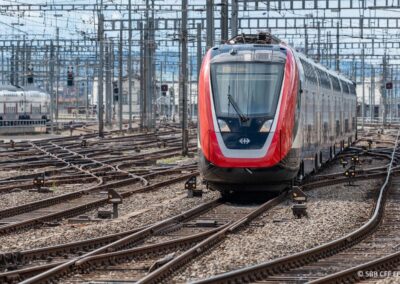
Partial revision of SBBG: responsibility and market liberalisation further delayed
The Committee for Transport and Telecommunications of the National Council (KVF‑N) unanimously supports the proposal for the financial stabilisation of the Swiss Federal Railways (SBBG). In contrast to the Federal Council, it is of the opinion that there is no need to change the system for granting vault loans to SBB. In doing so, the KVF‑N also disregards all of the VAP’s recommendations.
This is the issue:
- 3 billion financial injection for SBB
- SBBG partial revision referred to the National Council
- The industry’s voice remains unheard
- Still no market liberalisation in sight
3 billion financial injection for SBB
In its report of 16 December 2022 on motion 22.3008 «Supporting the implementation of SBB investments and a long-term vision in Covid-19 times», the federal government proposes to cover SBB’s deficits in long-distance transport with a one-off capital injection of an estimated CHF 1.25 billion. It also wants to ease the track access charges for long-distance transport with a further CHF 1.7 billion. It is also proposing a revision of the financing instruments.
SBBG partial revision referred to the National Council
The KVF‑N has unanimously referred the bill to amend the SBBG to the National Council. The majority of the committee also rejects a change in the system of financing instruments, as budget loans, unlike treasury loans, are subject to the debt brake. It is of the opinion that the resulting competitive situation with other federal expenditure is not desirable with regard to public transport services. The National Council will decide on the KVF‑N proposal in the 2023 winter session.
Voice of the industry remains unheard
As published in our media release of 30 March 2023, we at the VAP reject the proposed extraordinary restructuring of long-distance transport with around 3 billion taxpayers’ money. On the other hand, we welcome the proposed correction of the financing instruments, i.e. the waiver of the granting of vault loans to SBB bypassing the federal debt brake. In the blog posts «SBB should take responsibility instead of a CHF 3 billion financial package» and «No stabilisation of SBB despite CHF 3 billion in additional federal funds», we summarise the industry’s position and our corresponding arguments.
Still no market liberalisation in sight
If the bill is accepted, the National Council would further consolidate the SBB monopoly in long-distance transport. This is problematic in terms of European policy, as the EU is demanding that Switzerland open up the long-distance transport market. This unfulfilled demand overshadows the negotiations with the EU on the extension of the temporary cooperation with the European Railway Agency ERA for one-stop-shop authorisations and more interoperability between Switzerland and the EU. Compared to EU member states, Switzerland does not yet have full market access; the Swiss railway network is currently not an integrated part of the European interop network. For this reason, the freight transport-related associations Astag, CFS and we at the VAP are calling for a national migration strategy to open up the market in line with the EU. If the National Council votes in favour of the KVF‑N motion, it will push this issue even further away.
Addendum 20.12.2023, update from the winter session:
In the winter session, a majority of the National Council agreed to grant the Swiss Federal Railways (SBB) a one-off capital subsidy of CHF 1.15 billion to reduce debt. This amount was already included in the 2024 budget. In contrast, the National Council rejected the Federal Council’s proposal to switch from treasury loans to federal budget loans when a certain level of debt is reached. This was based on the argument that applying the debt brake to budget loans could delay the expansion. The chamber also decided to set the appropriate reserve for the railway infrastructure fund (BIF) at a minimum of CHF 300 million, with a maximum of two thirds of the net revenue from the performance-related heavy vehicle charge (LSVA) flowing into the fund. The National Council has thus ignored all of the VAP’s recommendations. The bill now goes to the Council of States, which will hopefully take corrective action.



